Inbox and environment news: Issue 537
May 8 - 14, 2022: Issue 537
Friends Of Narrabeen Lagoon Catchment Forum: May 2022 - Speaker - Prof. Dennis Foley On The Aboriginal Heritage Of The Narrabeen Lagoon Catchment
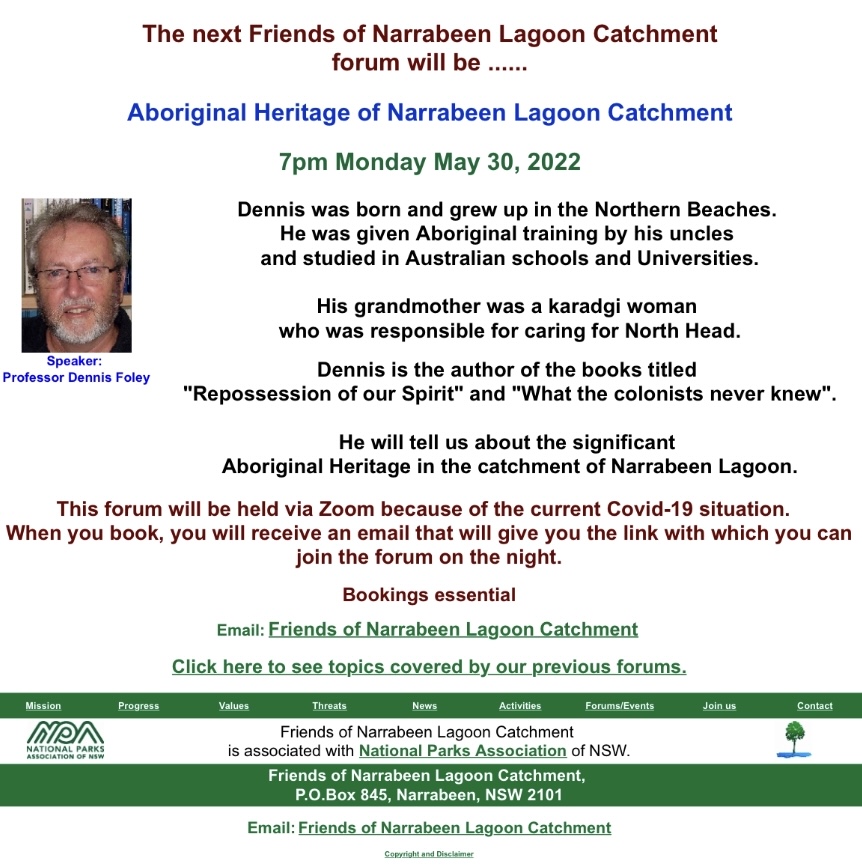
Local Wildlife Rescuers And Carers State That Ongoing Heavy Rains Are Tough For Us But Can Be Tougher For Our Wildlife:
- Birds and possums can be washed out of trees, or the tree comes down, nests can disintegrate or hollows fill with water
- Ground dwelling animals can be flooded out of their burrows or hiding places and they need to seek higher ground
- They are at risk crossing roads as people can't see them and sudden braking causes accidents
- The food may disappear - insects, seeds and pollens are washed away, nectar is diluted and animals can be starving
- They are vulnerable in open areas to predators, including our pets
- They can't dry out and may get hypothermia or pneumonia
- Animals may seek shelter in your home or garage.
You can help by:
- Keeping your pets indoors
- Assessing for wounds or parasites
- Putting out towels or shelters like boxes to provide a place to hide
- Drive to conditions and call a rescue group if you see an animal hit (or do a pouch check or get to a vet if you can stop)
- If you are concerned take a photo and talk to a rescue group or wildlife carer
There are 2 rescue groups in the Northern Beaches:
Sydney Wildlife: 9413 4300
WIRES: 1300 094 737
Please be patient as there could be a few enquiries regarding the wildlife.
Generally Sydney Wildlife do not recommend offering food but it may help in some cases. Please ensure you know what they generally eat and any offerings will not make them sick. You can read more on feeding wildlife here
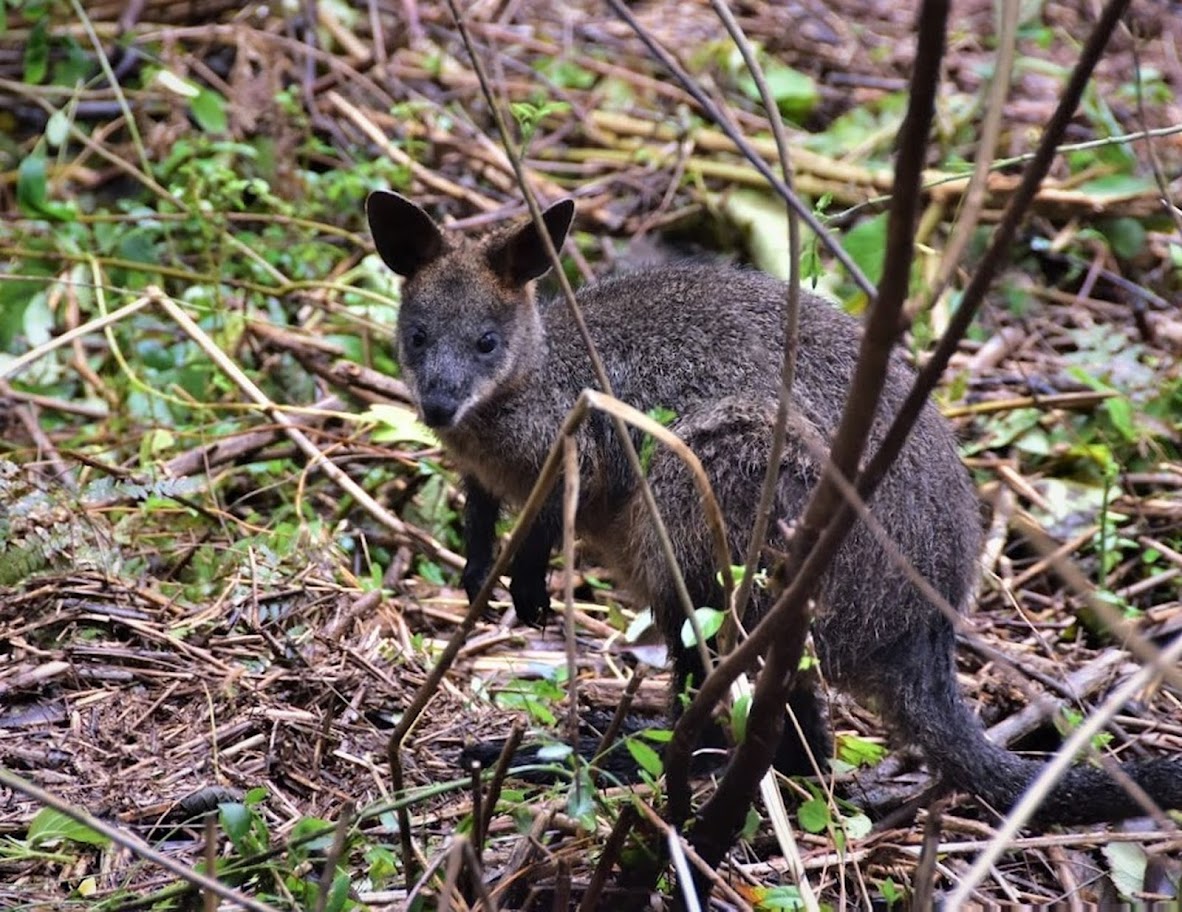
Information courtesy Ed Laginestra, Sydney Wildlife volunteer. Photo: Warriewood Wetlands Wallaby by Kevin Murray, March 2022.
Pittwater Natural Heritage Association (PNHA) Autumn 2022 Newsletter
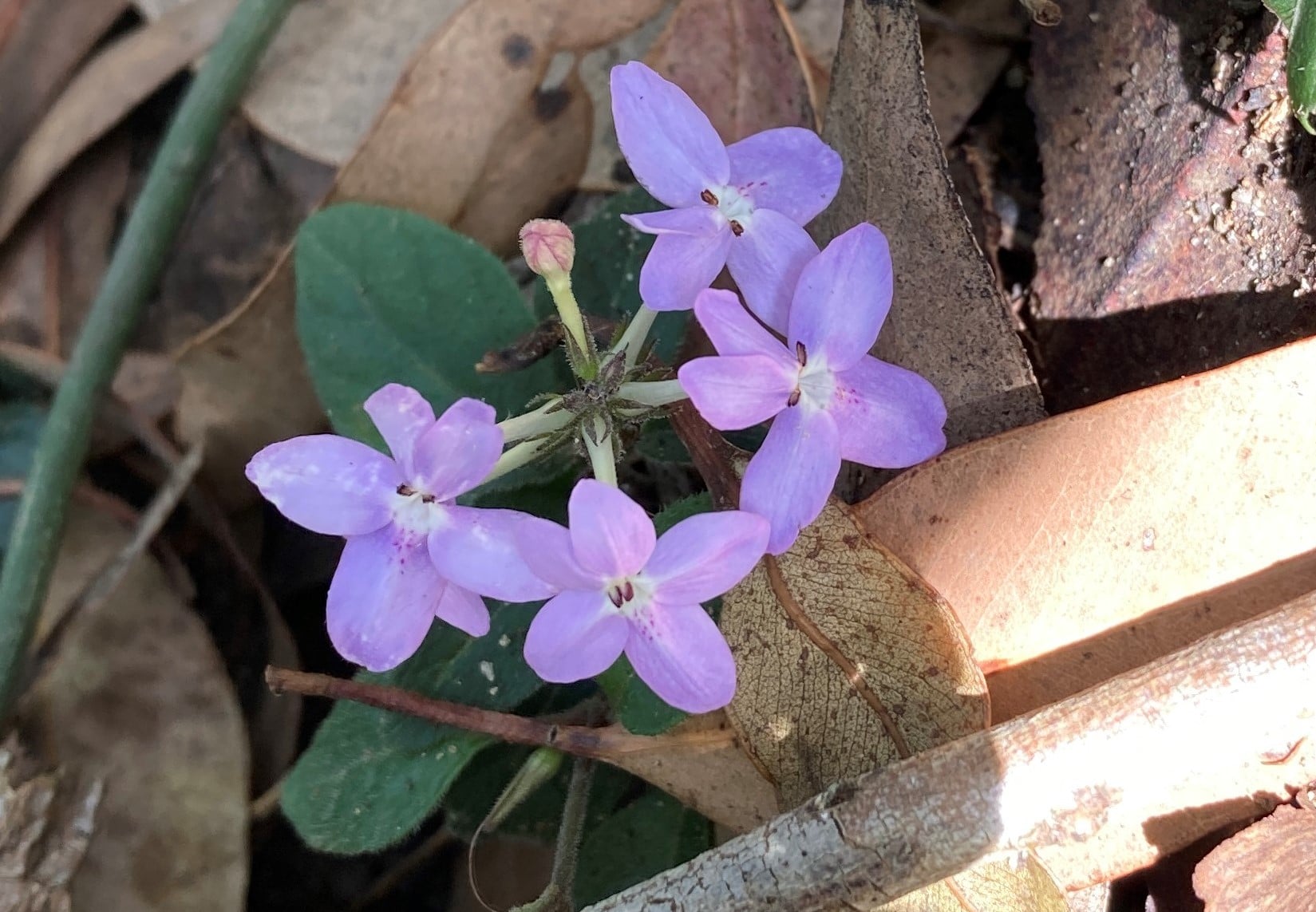
Cassia Flowering Now: Dispose Of This Weed To Stop The Spread
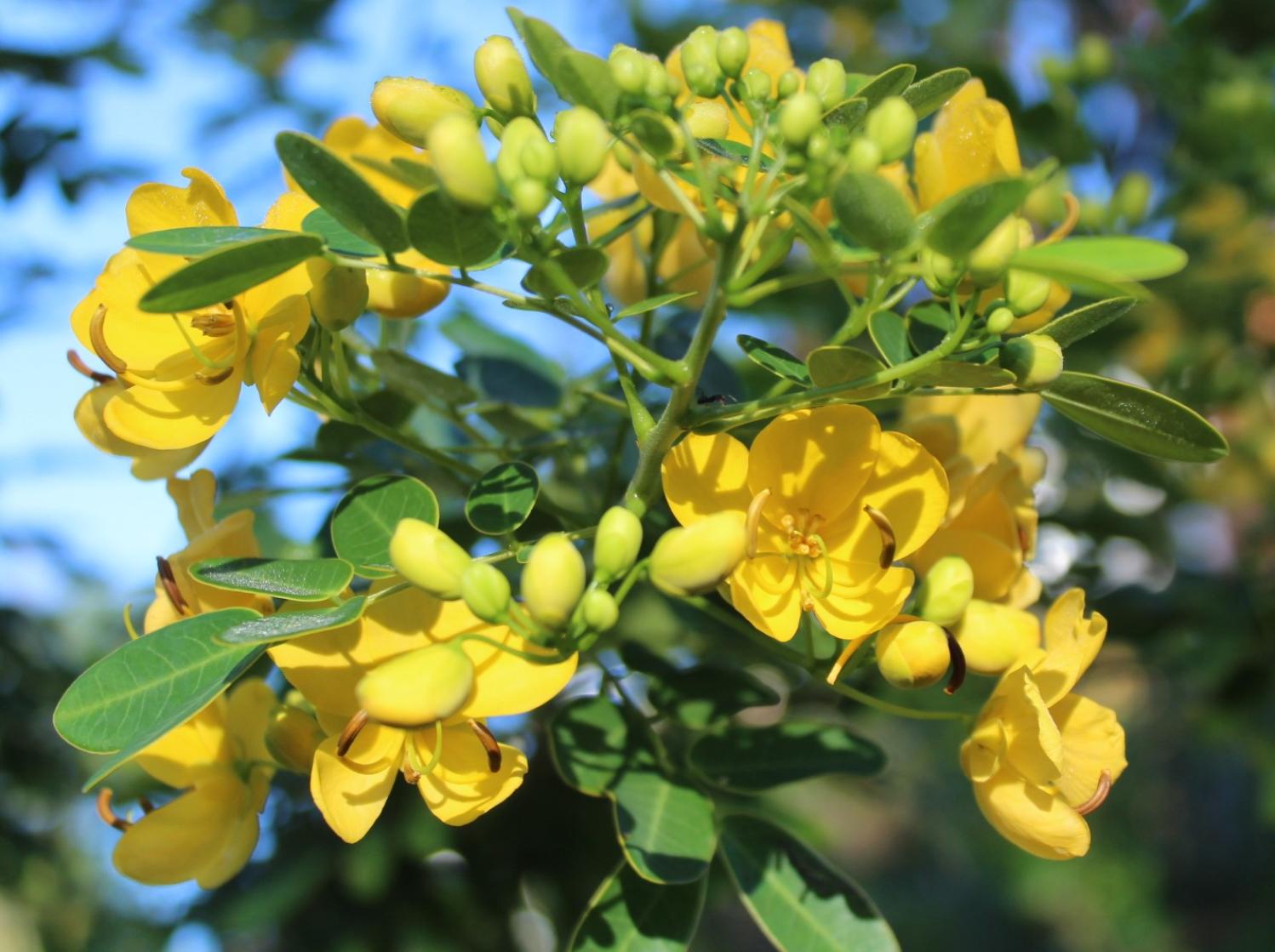
Darkinjung Plans For 600 Homes On Central Coast's Lake Munmorah Now On Exhibition: Closes May 24
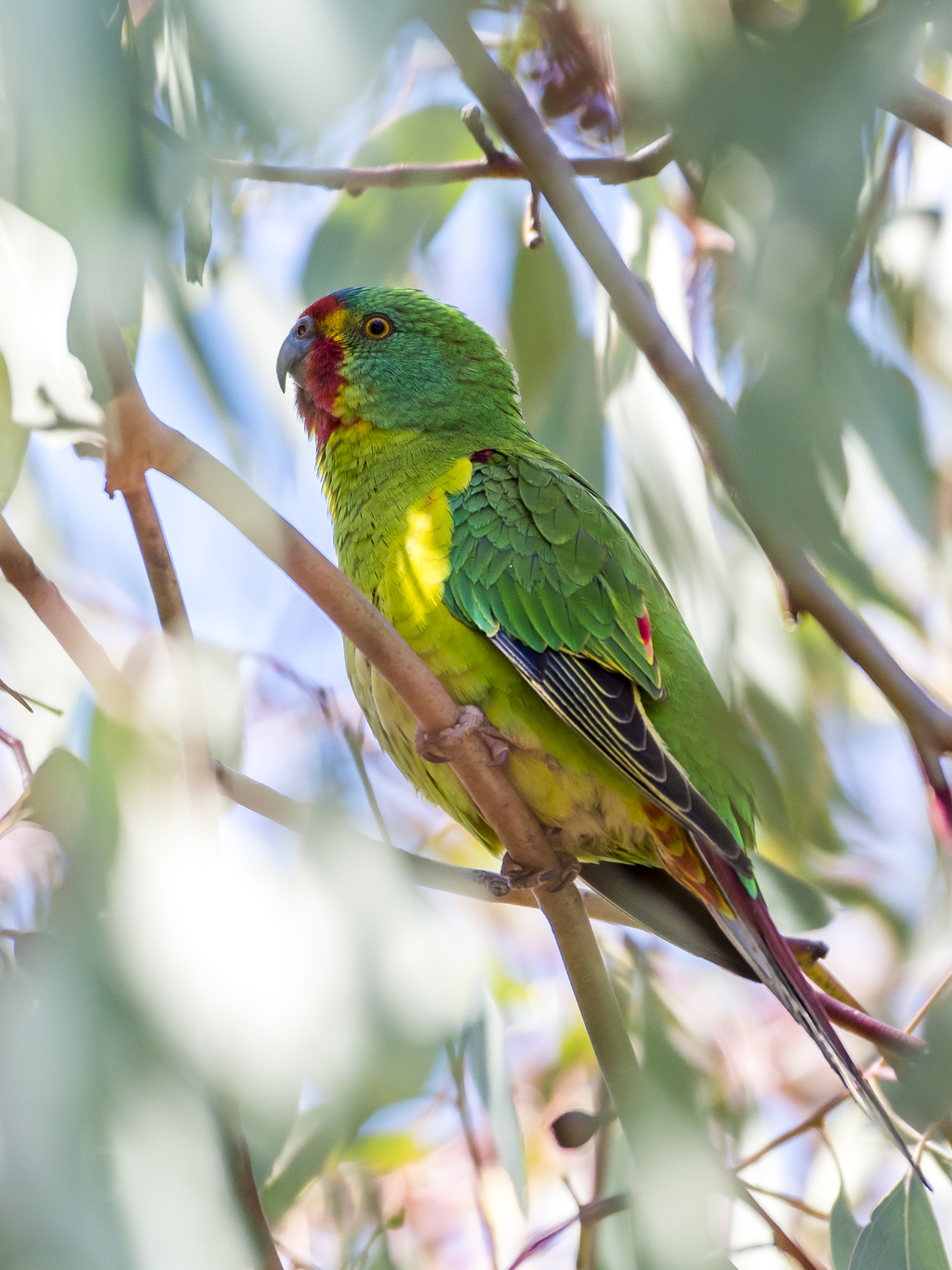
Dendrobium Mine Extension Project: Have Your Say (Again)
Political Stitch Up Over Dendrobium Abandons Community, Climate, And Water, Favours Coal Mining Company Residents State
Aviaries + Possum Release Sites Needed

Sydney Wildlife Rescue: Helpers Needed
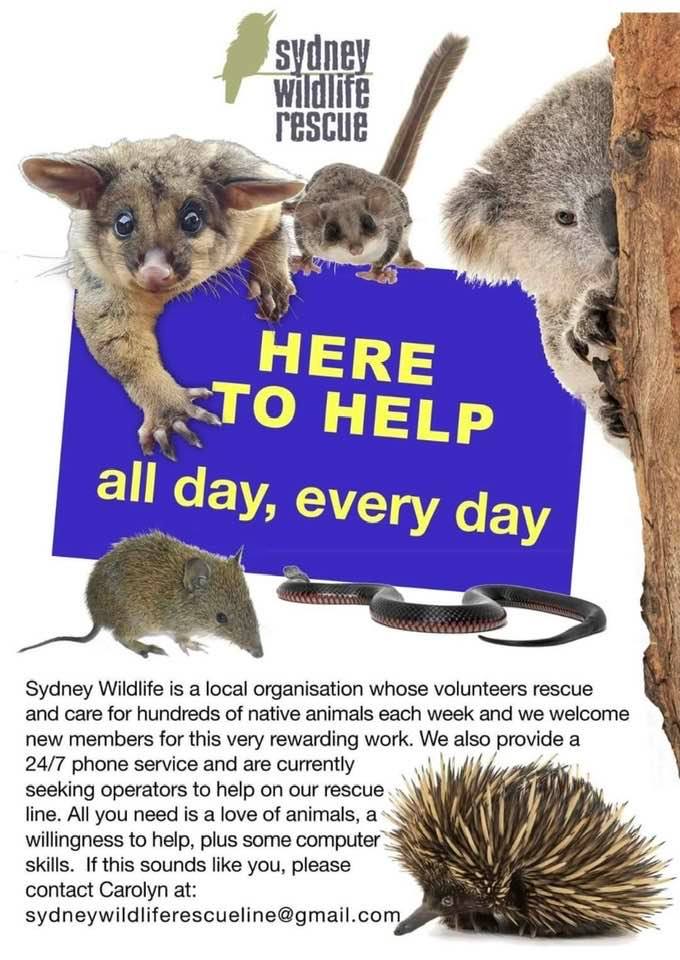
Avalon Golf Course Bushcare Needs You


Bushcare In Pittwater
Where we work Which day What time
Avalon
Angophora Reserve 3rd Sunday 8:30 - 11:30am
Avalon Dunes 1st Sunday 8:30 - 11:30am
Avalon Golf Course 2nd Wednesday 3 - 5:30pm
Careel Creek 4th Saturday 8:30 - 11:30am
Toongari Reserve 3rd Saturday 9 - 12noon (8 - 11am in summer)
Bangalley Headland 2nd Sunday 9 to 12noon
Bayview
Winnererremy Bay 4th Sunday 9 to 12noon
Bilgola
North Bilgola Beach 3rd Monday 9 - 12noon
Algona Reserve 1st Saturday 9 - 12noon
Plateau Park 1st Friday 8:30 - 11:30am
Church Point
Browns Bay Reserve 1st Tuesday 9 - 12noon
McCarrs Creek Reserve Contact Bushcare Officer To be confirmed
Clareville
Old Wharf Reserve 3rd Saturday 8 - 11am
Elanora
Kundibah Reserve 4th Sunday 8:30 - 11:30am
 Mona Vale
Mona Vale Mona Vale Beach Basin 1st Saturday 8 - 11am
Mona Vale Dunes 2nd Saturday +3rd Thursday 8:30 - 11:30am
Newport
Bungan Beach 4th Sunday 9 - 12noon
Crescent Reserve 3rd Sunday 9 - 12noon
North Newport Beach 4th Saturday 8:30 - 11:30am
Porter Reserve 2nd Saturday 8 - 11am
North Narrabeen
Irrawong Reserve 2nd Saturday 2 - 5pm
Palm Beach
North Palm Beach Dunes 3rd Saturday 9 - 12noon
Scotland Island
Catherine Park 2nd Sunday 10 - 12:30pm
Elizabeth Park 1st Saturday 9 - 12noon
Pathilda Reserve 3rd Saturday 9 - 12noon
Warriewood
Warriewood Wetlands 1st Sunday 8:30 - 11:30am
Whale Beach
Norma Park 1st Friday 9 - 12noon
Western Foreshores
Coopers Point, Elvina Bay 2nd Sunday 10 - 1pm
Rocky Point, Elvina Bay 1st Monday 9 - 12noon
Gardens And Environment Groups And Organisations In Pittwater
Up Close With Gang-Gang Cockatoo Feeding On Conesticks – Blue Mountains
This Mother’s Day, let’s celebrate the brave, multi-tasking mums of the Australian bird world
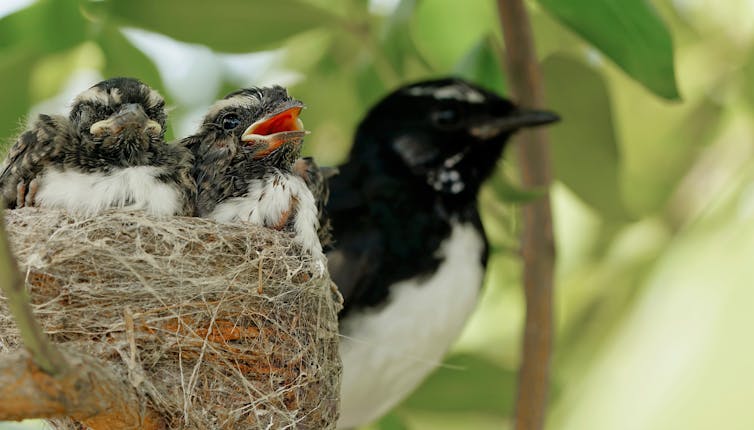
In the human fascination with birds, it’s the flashy appearance and antics of males that get the most attention from researchers and the public.
From their colourful plumage to elaborate songs and courtship displays, male birds often steal the show. This has led to female birds routinely being overlooked by conservation planners.
First, let’s clear up a few misconceptions. At least 70% of female birds sing – a fact historically overlooked due to research and survey biases towards males. And while many female birds have more muted colours than males, there are numerous examples of females with brilliant plumage.
But the wonders of the female bird world go far deeper. The capacity of female birds to rear and protect their young is phenomenal. Somehow, they manage to hold their families together despite predators, harsh conditions and sometimes, a less-than-attentive partner.
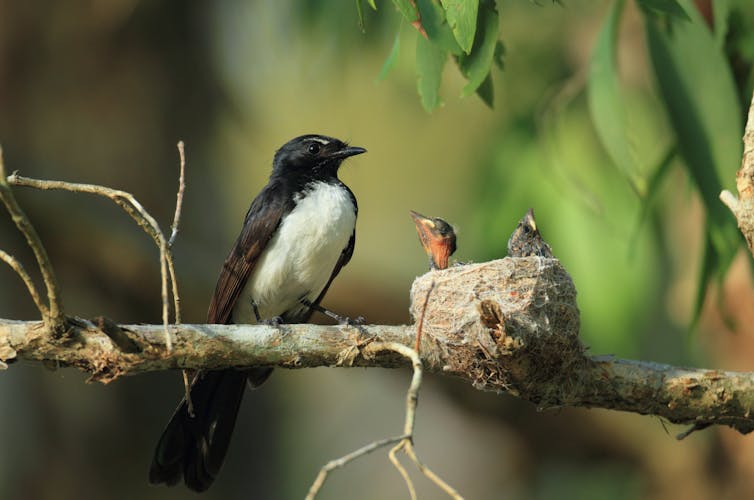
Satin Bowerbirds: An Unequal Domestic Burden
The male bowerbird is one of the most over-the-top bachelors of the bird world.
Male satin bowerbirds have striking, iridescent blue plumage and violet-coloured eyes. Females, on the other hand, are green and brown to blend into their surroundings.
To attract a mate, the male dances in an exaggerated fashion and makes a decorated bower. Females visit various bowers and select their mate. After that, the female basically does everything.
She makes the nest – usually high in a tree to protect nestlings from predators such as goannas. She produces and incubates the eggs on her own. And once the chicks hatch, the mum alone feeds them and defends the nest.
Meanwhile, the male bowerbird fusses over his man-cave – or bower – throughout the year in the hope of attracting another mate.

Palm Cockatoos: The Female Bodyguard
Male palm cockatoos shot to fame a few years ago when new research identified their drumming abilities. The males make drumsticks from branches and bang them rhythmically against a tree for pair-bonding or sometimes to claim territory.
But once the palm cockatoos pair up, the female plays a crucial role in securing their territory for breeding. During many months of behavioural observations, we found the female sits sentinel (kind of like a bodyguard) on the tree hollow while the male goes inside, splintering sticks with his massive bill to make the nest.
If danger comes – perhaps a neighbouring cockatoo pair or predator – the female alerts her mate and chases away the intruder.
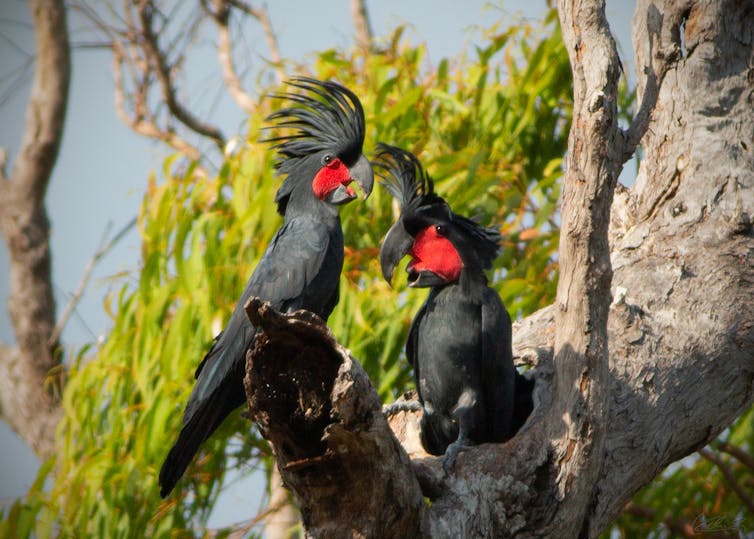
Virtuosic Lady Lyrebirds
The impressive repertoire of male superb lyrebirds is well-known. But it was only in recent years, when researchers turned their attention to the female, that her incredible singing ability was discovered.
Male lyrebirds don’t help with nest-building, incubation, brooding or feeding young.
Left alone to rear and protect her offspring, the female lyrebird has developed a cunning ability to confuse predators by mimicking the calls of at least 19 other bird species.
The female lyrebird is also remarkable for the length of time she cares for her young. Once fully feathered and able to fly, young lyrebirds remain dependent on their mothers and may stay in their care for more than a year.
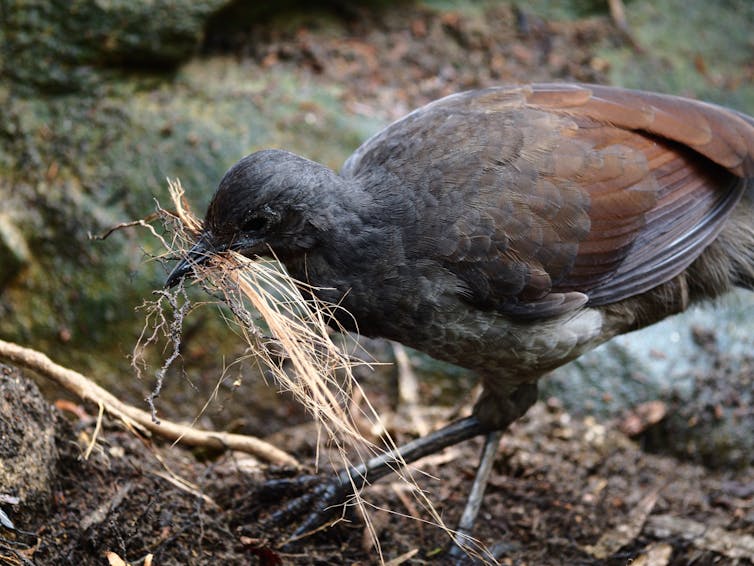
Fairy-Wren Code-Makers
The Horsfield’s bronze-cuckoo does not build its own nest but instead lays its eggs in the nests of other birds such as fairy-wrens. This can leave the fairy-wren mother expending precious time and food raising another bird’s chicks.
But the female superb fairy-wren has developed a truly ingenious way to detect foreign nestlings once the eggs hatch.
She sings to her eggs – and includes in the song a specific “password”. Once her chicks hatch, they sing the password when begging for food.
It can be hard for the fairy-wren mum to differentiate her young in her dark, ball-shaped nest. But she can identify her offspring by their song. Cuckoo nestlings can’t learn or sing the password so are less likely to get fed.

Eclectus Parrot: The Ultimate Nest Defender
Even though nesting only takes a few months, female eclectus parrots guard their precious hollows for up to nine months.
This is why their plumage is red and their male counterparts are green.
The red serves as a beacon screaming “this hollow is taken!”, helping keep cockatoos away.
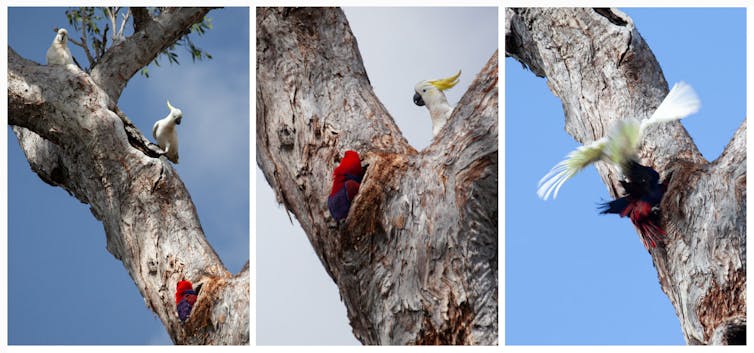
Here’s To All Mums
Female birds are just as worthy of our time and research effort as their male counterparts. Considering the behaviours and needs of female birds is especially vital from a conservation perspective.
What’s more, affirming the important role of females in any community – bird or human – is crucial to achieving more equitable and just societies. Never is that message more important than on Mother’s Day. ![]()
Ayesha Tulloch, ARC Future Fellow, Queensland University of Technology and Christina N. Zdenek, Lab Manager/Post-doc at the Venom Evolution Lab, The University of Queensland
This article is republished from The Conversation under a Creative Commons license. Read the original article.
Global Big Day Bird Count Is Coming!!
- Get an eBird account: eBird is a worldwide bird checklist program used by millions of birders. It’s what allows us to compile everyone’s sightings into a single massive Global Big Day list—while at the same time collecting the data to help scientists better understand birds. Sign up here. It’s 100% free from start to finish.
- Watch birds on 14 May: It’s that simple. You don’t need to be a bird expert or go out all day long, even 10 minutes of birding from home counts. Global Big Day runs from midnight to midnight in your local time zone. You can report what you find from anywhere in the world.
- Enter what you see and hear in eBird: You can enter your sightings via our website or download the free eBird Mobile app to make submitting lists even easier. Please enter your checklists before 17 May to be included in our initial results announcement.
- Watch the sightings roll in: During the day, follow along with sightings from more than 170 countries in real-time on our Global Big Day page.
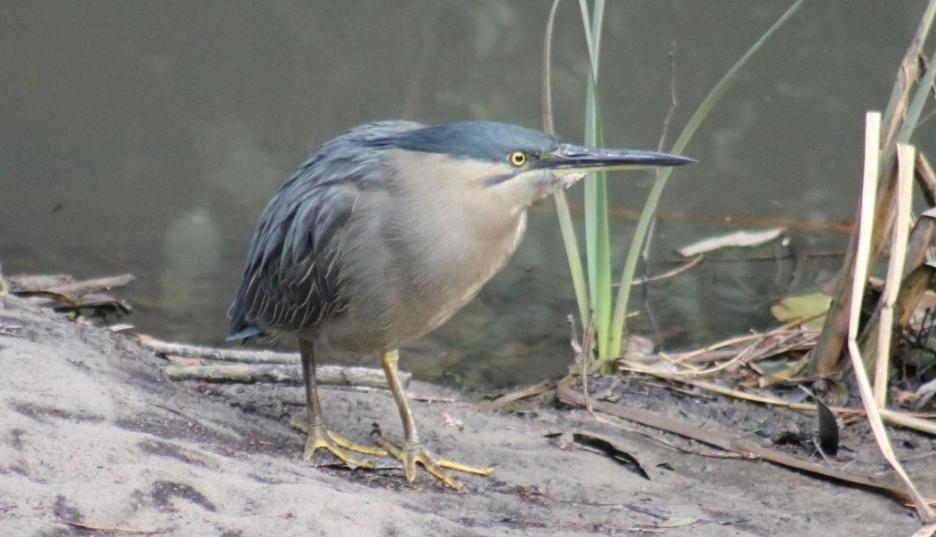
Mangrove or Striated Heron Butorides striata - Careel Creek - photo by A J Guesdon
Gardens Of Stone Officially Protected In Perpetuity: Draft Plan Of Management And Draft Master Plan - Have Your Say
- the ‘Lost City Adventure Experience’, which will be a key attraction of the park offering one of the longest zip-lines in Australia and exhilarating via ferrata (supported rock climbing) experiences.
- the ‘Wollemi Great Walk’ with eco-style accommodation and facilities, linking Gardens of Stone State Conservation Area to Wollemi National Park.
- an extensive network of purpose-built mountain bike tracks, catering for a range of abilities with connections to Lithgow township.
- all weather four-wheel drive designated touring routes
- family-friendly designated camping areas.
- State Mine Gully and Lost City Precinct
- Carne Creek and former Plantation Precinct
- Birds Rock Precinct
- Long Swamp Precinct.
- Environment and habitat
- Heritage and scenic amenity
- Visitation
- Vehicular access
- 4WD access
- Bush wallking experiences
- Mountain biking
- Adventure experiences and tourism
- Camping
- Services and Facilities
Central-West Orana Renewable Energy Zone Tender Shortlist Announced
- ACE Energy, comprising Acciona, Cobra and Endeavour Energy
- Network REZolution, comprising Pacific Partnerships, UGL, CPB Contractors and APA Group
- NewGen Networks, comprising Plenary Group, Elecnor, Essential Energy and SecureEnergy
Air Attack Training To Build Fire Fighting Strength
Ceremony Marks Return Of Bulagaranda To Aboriginal Owners
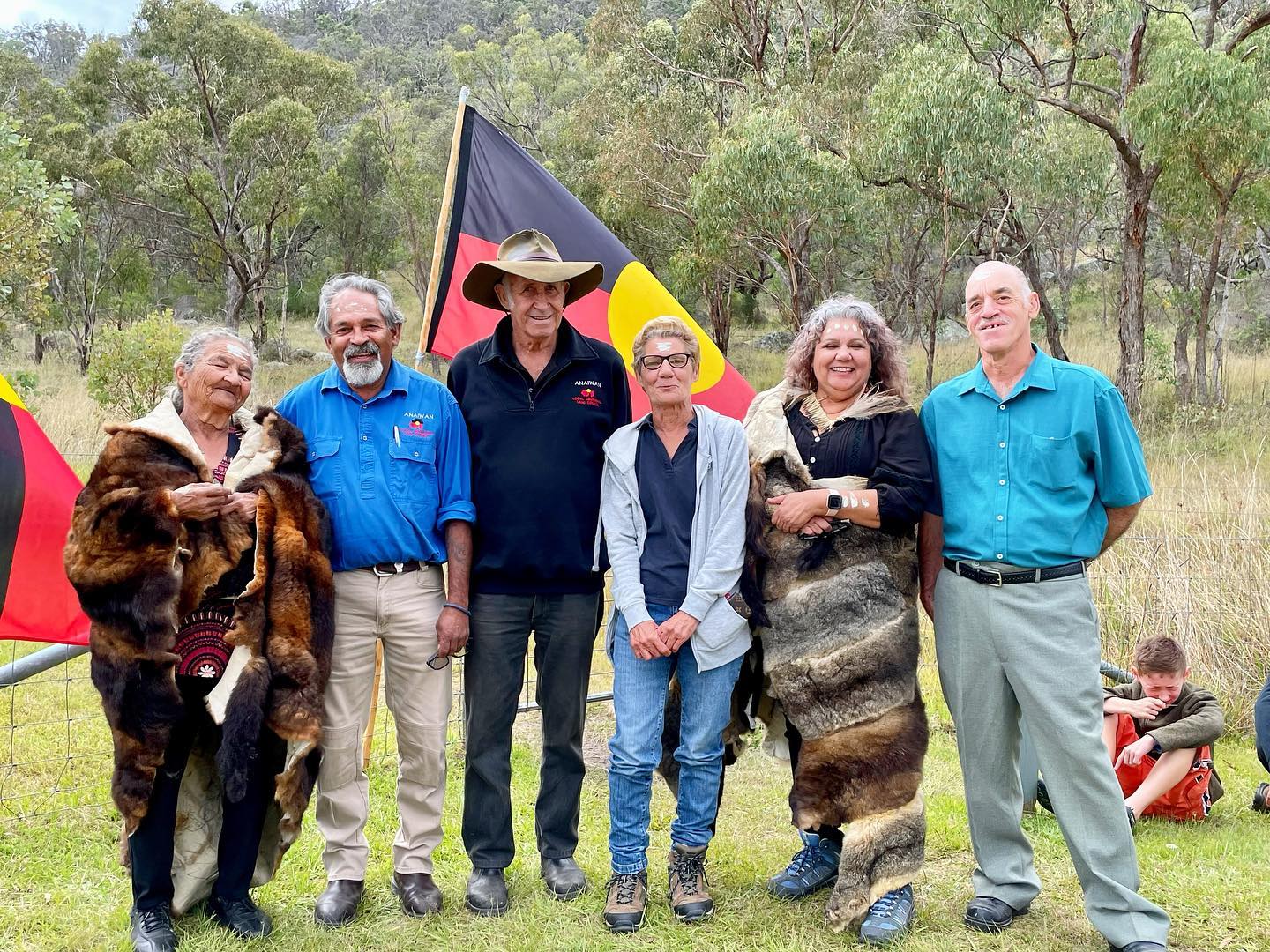
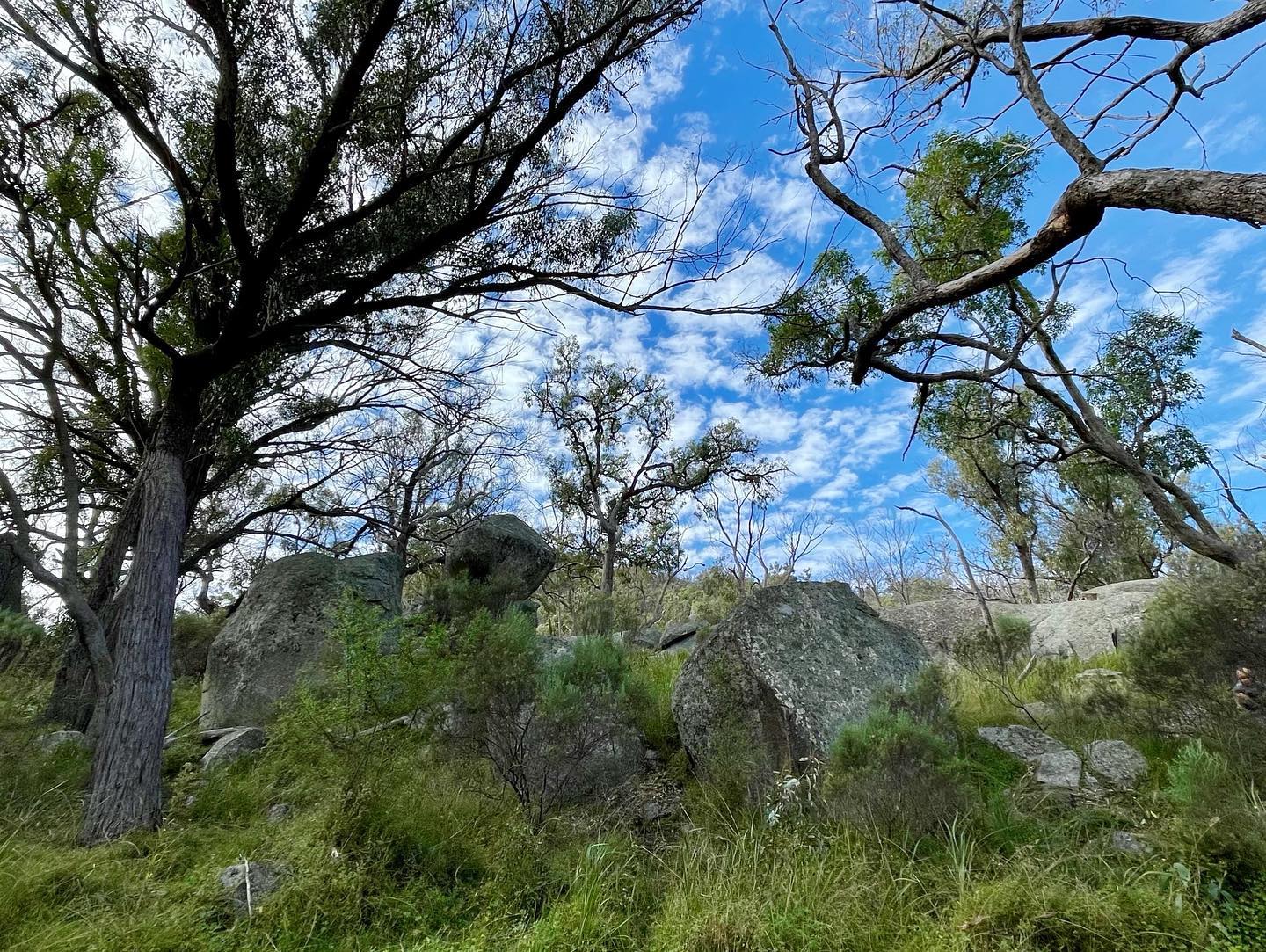
Scorched dystopia or liveable planet? Here’s where the climate policies of our political hopefuls will take us
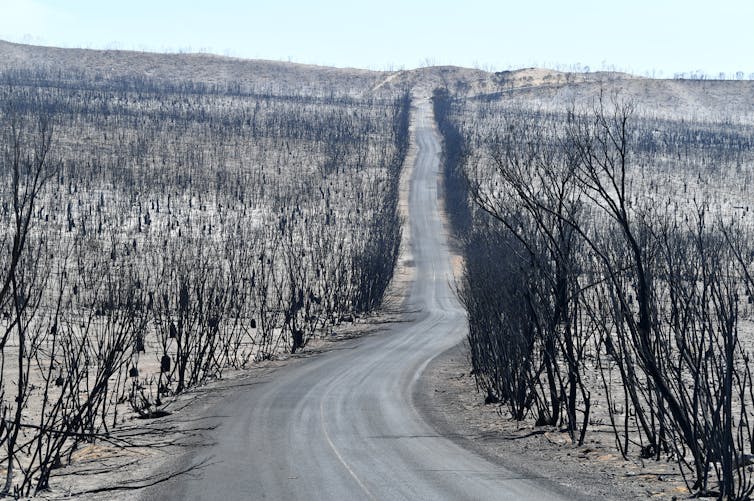
The federal election campaign takes place against a background of flooding on Australia’s east coast, where some residents remain in temporary accommodation a month after the disaster. It’s just the latest reminder Australia is set to become a poster child for climate change harms.
Australia has warmed about 1.4℃ since 1910. With it has come extreme heat, bushfires, floods, drought and now, a sixth huge bleaching event on the Great Barrier Reef.
Yet meaningful climate policy debate has largely been absent from this election campaign. So Climate Analytics, a research organisation I lead, has weighed up the policies of the Coalition, Labor, the Greens and the “teal” independents.
We analysed the global warming implications of each party’s or candidate’s target for 2030.
As the Intergovernmental Panel on Climate Change (IPCC) warns, this timeframe is crucial if the world is to stay below the Paris Agreement’s goal of limiting warming to 1.5℃ above pre-industrial levels. Dramatic action by 2030 is also vital to reaching net-zero emissions by 2050 or earlier.
Alarmingly, the Coalition’s climate policy is consistent with a very dangerous 3℃ of global warming. Labor’s policy is slightly better, but only policies by the Greens and the “teals” are consistent with keeping global warming at or below 1.5℃.
The Coalition
The Morrison government is pursing 26-28% emissions reduction by 2030, based on 2005 levels. If all other national governments took a similar level of action, Earth would reach at least 3℃ of warming, bordering on 4℃, our analysis shows.
That would mean the total destruction of all tropical reefs including Ningaloo and the Great Barrier Reef. And intense heatwaves over land that currently occur about once a decade could happen almost every other year.
At the United Nations climate conference in Glasgow last year, the Morrison government famously refused to increase its 2030 commitments. But the final pact from the meeting, which Australia signed, requires that by November this year, governments will strengthen their 2030 targets to align with the 1.5℃ goal.
Australia is under strong international pressure to meet this obligation, or face further global condemnation.

Labor
Labor’s target of a 43% emissions cut by 2030, from 2005 levels, is in line with 2℃ of global warming. That means it’s not consistent with the Paris Agreement.
Under 2℃ of warming, extreme heat events that currently happen once a decade could occur about every three to four years. And they would reach maximum temperatures about 1.7℃ hotter than heatwaves in recent decades.
Should Earth overshoot 1.5℃ warming and perhaps reach 2℃, some suggest this may be temporary and temperatures could be brought back down. This would require technologies that remove carbon dioxide from the atmosphere. But such technologies are uncertain and come with risks.
And the IPCC’s recent report warned even if 1.5℃ warming is exceeded temporarily, severe and potentially irreversible damage would result. The total loss of the Great Barrier Reef is just one example.
Under 2℃ of warming the most extreme heat events that occurred once in a decade in recent times could occur about every three to four years. The heatwaves would also reach a maximum temperature 1.7℃ hotter than those in recent decades.

‘Teal’ Independents
The “teals” are a group of pro-climate independent candidates.
Most prominent is Warringah MP Zali Steggall, whose climate change bill proposes a 2030 target of 60% below 2005 levels. Most climate policies of the “teals” are generally in line with the Steggall bill.
The target is also supported by industry.
We find this target consistent with 1.5℃ of warming, and so compatible with the Paris Agreement. However, it’s at the upper end of the emission levels consistent with the 1.5℃ pathway.
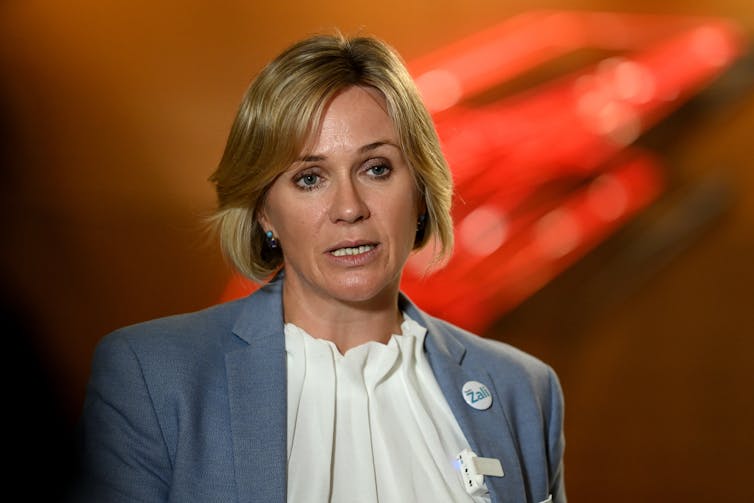
The Greens
Of all the climate policies on the table this election, the Greens target of a 74% cut by 2030, based on 2005 levels, is most comfortably consistent with keeping warming below 1.5℃.
That level of warming would still cause damage to Earth’s natural systems and our way of life. But it would avert significant devastation – for example, allowing parts of the Ningaloo and Great Barrier reefs to survive.
Under 1.5℃ global warming, the most extreme heat events that presently occur once a decade could be limited to about every five to six years.
The Land Sector Problem
Our calculations above do not paint a rosy picture. But they are, in fact, optimistic.
That’s because they include emission reductions from the land and forestry sector through such activities as tree planting and maintaining native vegetation. These so-called carbon sinks were recently described by a key insider as a “fraud”.
If the land and forest sector is excluded from the analysis, the various emissions reduction targets fall considerably: to between 11% and 13% for the Coalition, 31% for Labor, 50% for the teals and 67% for the Greens.
What’s more, even warming limited to 1.5℃ will reduce the capacity of the land sector to remove and store carbon.
Over To You
The scientific consensus is clear. Greenhouse gas emissions must peak by 2025 at the latest and plummet thereafter, to limit global warming to 1.5℃.
Unless policies are substantially strengthened, Earth is set to hit 1.5℃ warming in the 2030s, and a future of at least 3℃ warming awaits.
The onus is on the next parliament to protect Australians from climate catastrophe. On May 21, Australian voters have a chance to send a clear message about the kind of world we want to leave for future generations.![]()
Bill Hare, Adjunct Professor, Murdoch University
This article is republished from The Conversation under a Creative Commons license. Read the original article.
Australia’s next government must tackle our collapsing ecosystems and extinction crisis

Australia’s remarkable animals, plants and ecosystems are world-renowned, and rightly so.
Unfortunately, our famous ecosystems are not OK. Many are hurtling towards collapse, threatening even iconic species like the koala, platypus and the numbat. More and more species are going extinct, with over 100 since British colonisation. That means Australia has one of the worst conservation records in the world.
This represents a monumental government failure. Our leaders are failing in their duty of care to the environment. Yet so far, the election campaign has been unsettlingly silent on threatened species.
Here are five steps our next government should take.

1. Strengthen, Enforce And Align Policy And Laws
Australia’s environmental laws and policies are failing to safeguard our unique biodiversity from extinction. This has been established by a series of independent reviews, Auditor-General reports and Senate inquiries over the past decade.
The 2020 review of our main environmental protection laws offered 38 recommendations. To date, no major party has clearly committed to introducing and funding these recommendations.
To actually make a difference to the environment, it’s vital we achieve policy alignment. That means, for instance, ruling out new coal mines if we would like to keep the world’s largest coral reef system alive. Similarly, widespread land clearing in Queensland and New South Wales makes tree planting initiatives pointless on an emissions front.
Despite Australia’s wealth of species, our laws protecting biodiversity are much laxer than in other developed nations like the United States, Canada and the United Kingdom. These nations have mandatory monitoring of all threatened species, which means they can detect species decline early and step in before it’s too late.
2. Invest In The Environment
How much do you think the federal government spends on helping our threatened species recover? The answer is shockingly low: Around $50 million per year across the entire country. That’s less than $2 a year per Australian. The government spent the same amount on supporting the business events industry through the pandemic.
Our overall environmental spending, too, is woefully inadequate. In an age of mounting environmental threats, federal funding has fallen sharply over the past nine years.
For conservationists, this means distressing decisions. With a tiny amount of funding, you can’t save every species. That means ongoing neglect and more extinctions looming.
This investment is far less than what is needed to recover threatened species or to reduce the very real financial risks from biodiversity loss. If the government doesn’t see the environment as a serious investment, why should the private sector?
The next government should fix this nature finance gap. It’s not as if there isn’t money. The estimated annual cost of recovering every one of Australia’s ~1,800 threatened species is roughly a mere 7% of the Coalition’s $23 billion of projects promised in the month since the budget was released in late March.
3. Tackle The Threats
We already have detailed knowledge of the major threats facing our species and ecosystems: the ongoing destruction or alteration of vital habitat, the damage done by invasive species like foxes, rabbits and cats, as well as pollution, disease and climate change. To protect our species from these threats requires laws and policies with teeth, as well as investment.
If we protect threatened species habitat by stopping clearing of native vegetation, mineral extraction, or changing fishing practices, we will not only get better outcomes for biodiversity but also save money in many cases. Why? Because it’s vastly cheaper to conserve ecosystems and species in good health than attempt recovery when they’re already in decline or flatlining.
Phasing out coal, oil and gas will also be vital to stem the damage done by climate change, as well as boosting support for green infrastructure and energy.
Any actions taken to protect our environment and recover species must be evidence-based and have robust monitoring in place, so we can figure out if these actions actually work in a cost-effective manner against specific objectives. This is done routinely in the US.
Salvaging our damaged environment is going to take time. That means in many cases, we’ll need firm, multi-partisan commitments to sustained actions, sometimes even across electoral cycles. Piecemeal, short-term or politicised conservation will not help Australia’s biodiversity long-term and do not represent best use of public money.
4.: Look To Indigenous Leadership To Heal Country
For millennia, First Nations people have cared for Australia’s species and shaped ecosystems.
In many areas, their forced displacement and disconnection with longstanding cultural practices is linked to further damage to the environment, such as more severe fires.
Focusing on Indigenous management of Country can deliver environmental, cultural and social benefits. This means increasing representation of Indigenous people and communities in ecosystem policy and management decisions.
5. Work With Communities And Across Boundaries
We must urgently engage and empower local communities and landowners to look after the species on their land. Almost half of Australia’s threatened species can be found on private land, including farms and pastoral properties. We already have good examples of what this can look like.
The next government should radically scale up investment in biodiversity on farms, through rebates and tax incentives for conservation covenants and sustainable agriculture. In many cases, caring for species can improve farming outcomes.
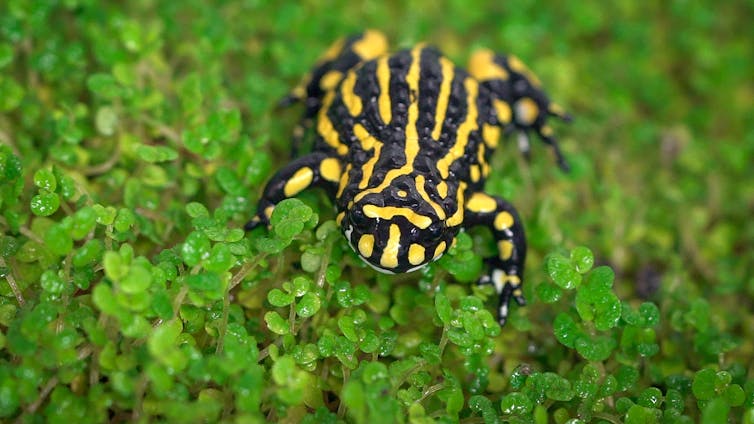
Conservation Is Good For Humans And All Other Species
To care for the environment and the other species we live alongside is good for us as people. Tending to nature in our cities makes people happier and healthier.
Protecting key plants and animals ensures key “services” like pollination and the cycling of soil nutrients continues.
We’re lucky to live in a land of such rich biodiversity, from the ancient Wollemi pine to remarkable Lord Howe island stick insects and striking corroboree frogs. But we are not looking after these species and their homes properly. The next government must take serious and swift action to save our species.![]()
Euan Ritchie, Professor in Wildlife Ecology and Conservation, Centre for Integrative Ecology, School of Life & Environmental Sciences, Deakin University; Ayesha Tulloch, ARC Future Fellow, Queensland University of Technology, and Megan C Evans, Lecturer and ARC DECRA Fellow, UNSW Sydney
This article is republished from The Conversation under a Creative Commons license. Read the original article.
Find out what threatened plants and animals live in your electorate (and what your MP can do about it)
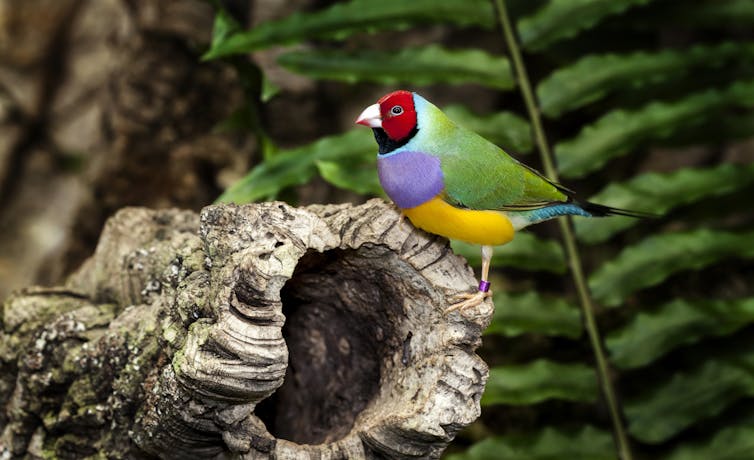
More than 1,800 Australian plants and animals are considered at-risk of extinction, and yet protecting threatened species is almost entirely absent from the current election campaign.
We’ve developed a web app, which launches today, that lets Australians learn which threatened plants and animals live in their federal electorate.
For example, we found the electorate with the most threatened species is Durack in Western Australia, held currently by the Liberal party’s Melissa Price. Some 61 threatened animals and 198 threatened plants live or used to live within its boundaries, such as the Numbat, Gouldian finch and the Western underground orchid.
Our goal is to help users engage with their elected representatives and put imperilled species on the political agenda this election and beyond. We urgently need to convince federal politicians to act, for they hold the keys to saving these species. So what can they do to help their plight?
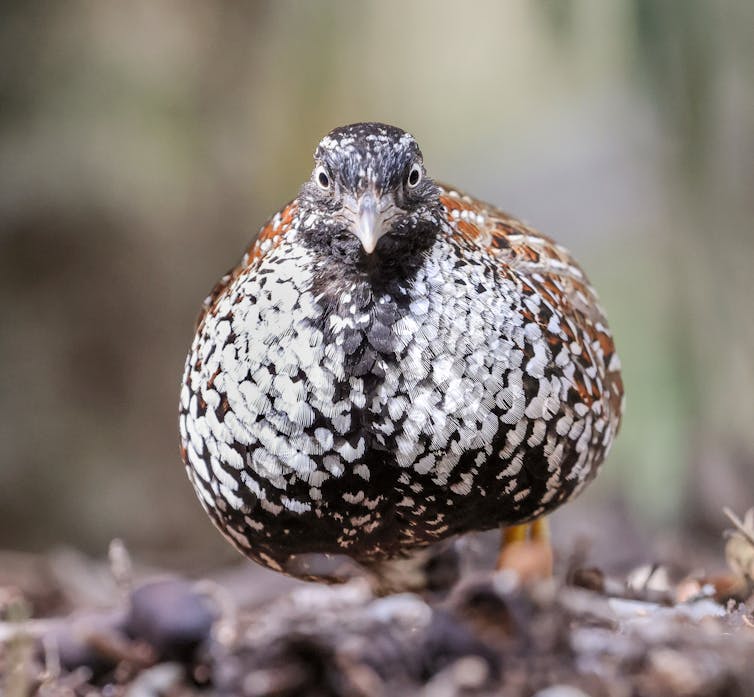
Threatened Species In Your Neighbourhood
Our new app, called Threatened Australians, uses federal government data to introduce you to the threatened species living in your neighbourhood.
By entering a post code, users can learn what the species looks like, where they can be found (in relation to their electorate), and what’s threatening them. Importantly, users can learn about their incumbent elected representative, and the democratic actions that work towards making a difference.
For example, entering the postcode 2060 – the seat of North Sydney, held currently by the Liberal Party’s Trent Zimmerman – tells us there are 23 threatened animals and 14 threatened plants that live or used to live there.
This includes the koala which, among many others, have seen devastating losses in their populations in recent decades due to habitat destruction.
We’ve also put together data dividing the number of threatened species that live or used to live across each party’s electorates, as shown in the chart below. Labor-held seats are home to 775 of the 1,800-plus threatened species, while Liberal-held seats have 1,168.
A Seriously Neglected Issue
The good news is we know how to avert the extinction crisis. Innumerable reports and peer-reviewed studies have detailed why the crisis is occurring, including a major independent review of Australia’s environment laws which outlined the necessary federal reforms for changing this trajectory.
The bad news is these comprehensive reforms, like almost all the previous calls to action on the threatened species crisis, have been largely ignored.
Predictions show the situation will drastically worsen for threatened species over the next two decades if nothing changes.
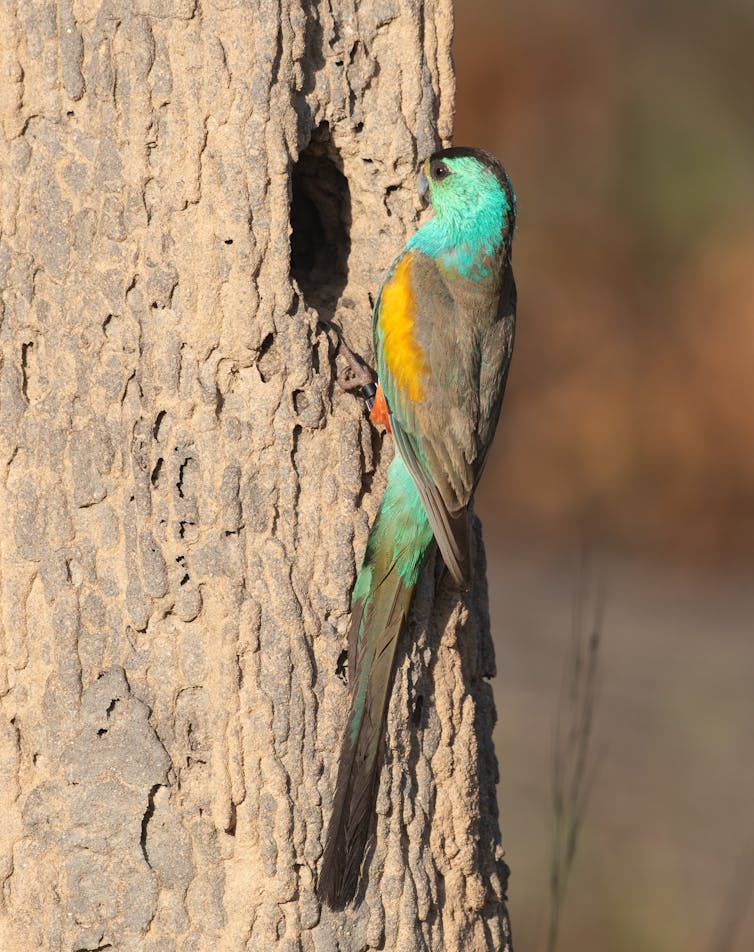
Yet, environmental issues rarely play key roles in federal elections, despite the connection Australians share with the environment and our wildlife.
The health of the environment continually ranks among the top issues Australians care about, and nature tourists in Australia spend over $23 billion per year.
So how can we address this mismatch of widespread public desire for environmental action yet political candidates are focused on other issues?
What Can Local MPs Actually Do About It?
For change to occur, communities must effectively persuade elected representatives to act. There are a few ways they can exercise their democratic powers to make a difference.
Federal MPs often champion and advocate important issues such as developing new hospitals, schools and car parks in their electorate. By speaking out and advocating for their electorate in parliament and with the media, they can garner the support, such as funding and reform, to deliver change for their electorate.
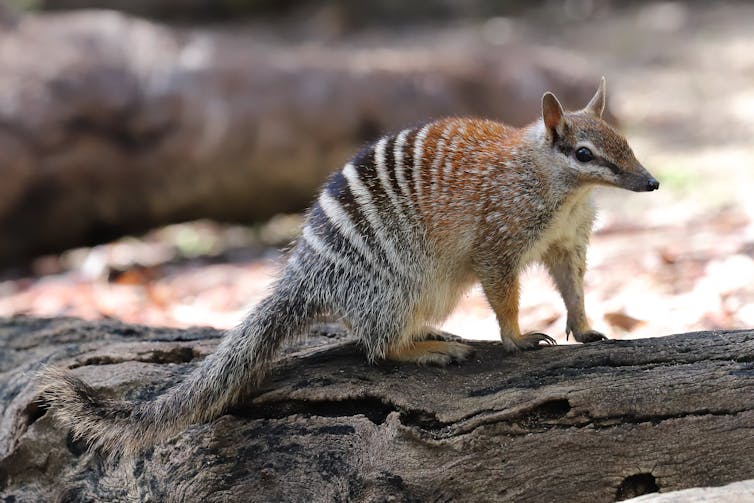
Local MPs can help protect threatened species by instigating and voting for improved policy.
Let’s say, for instance, legislation for approving a new mine was before parliament, and the development overlapped with the habitat of a threatened animal. If protecting a certain plant or animal was on an MPs agenda thanks to the efforts of their community, it would help determine whether the MP votes for such legislation.
This has broader applications, too. Making the threatened species crisis a priority for an MP would determine the lengths they would go to for conservation in their electorate and Australia wide.
Threatened species desperately need the required funding alongside the appropriate policy and legislative reform. The current policies are responsible for the threats causing many species to go endangered in the first place.

Our app can help users engage with the current sitting MP in their electorate with the click of a button, as it helps users write an email to them. It’s time federal representatives were asked about their policies on threatened species and what they plan to do for them in their electoral backyards.
While climate change has, for decades, unfathomably been the subject of fierce debate in the Australian parliament, threatened species can be a cause of unity across the political divide.
We need an honest and urgent dialogue between local communities and their representatives about how to deal with the challenge these species face and what each prospective candidate intends to do about it. ![]()
Gareth Kindler, PhD Candidate, The University of Queensland; James Watson, Professor, The University of Queensland, and Nick Kelly, Senior Lecturer in Interaction Design, Queensland University of Technology
This article is republished from The Conversation under a Creative Commons license. Read the original article.
Beyond electric cars: how electrifying trucks, buses, tractors and scooters will help tackle climate change

When you think of an electric vehicle, chances are you’ll picture a car. But there’s a quiet revolution going on in transport. It turns out electrification can work wonders for almost all of our transport options, from electric bikes to motorbikes to buses to freight trains and even to tractors and heavy trucks. There will soon be no need to burn petrol and diesel in an internal combustion engine.
This matters, because electric transport will be vital in our efforts to stem climate change. If all cars on the road became powered by renewable electricity, we’d cut almost one-fifth of our emissions. We’d also be much better placed to weather spikes in oil prices linked to war, and enjoy cleaner air and quieter cities.
It’s promising news that electric vehicles are shaping up as an election issue at last, with Labor promising a national EV charging network at its campaign launch, and the Greens promising rebates of up to $15,000 for EV purchases, while the Liberal Party last year reversed its previous scepticism and launched a smaller charging network policy.
But this is only the beginning of what’s required. Right now, all the focus is on electric cars. We will need new policy settings to encourage the electrification of all our transport options. And that means getting electric mobility on the radar of our political parties.
Why Electric And Why Now?
Electric vehicles have been around for more than 120 years. They accounted for a third of all cars on US roads in 1900, sought because they were clean and quiet. But their first dawn ended because of the high cost and weight of batteries, leaving internal combustion engines to rule the road.
So what changed? Two things: solar has become the cheapest form of power in human history, and lighter lithium-ion batteries have become vastly cheaper. These remarkable inventions have allowed electric vehicle manufacturers to become competitive. Cheap solar power funnels into the battery of the electric vehicle to provide running costs much lower than those of fossil fuel engines. The much simpler engines also mean vastly lower maintenance costs.

We’re also seeing major innovations brought across from electric public transport. Over the past two decades, there have been significant advances in smart technology in trains and trams, such as regenerative braking and sensors enabling active suspension. These breakthroughs have been taken up enthusiastically by electric vehicle manufacturers. All electric cars now have regenerative braking, which hugely increases energy efficiency, as well as smart sensors to aid steering, and active suspension, making the cars safer and the ride smoother.
We’re also seeing welcome cross-pollination in the form of trackless trams, which are upgraded buses that boast rail-like mobility. This is made possible based on technologies invented for high-speed rail.
In short, there’s no reason why solar and battery technology has to be limited to cars. All the world’s land-based internal combustion engine vehicles can now be replaced by electric equivalents.

Electric Mobility Is Arriving
You’ll already have seen signs of the potential of electric mobility. E-scooters are popping up in major cities, giving people a way to make short trips quickly and cheaply. E-bikes are surging ahead, popular among commuters and families choosing one over a second car. Even this is just the start.
Around the world, electric micromobility (scooters, skateboards and bikes) is growing at over 17% per year and expected to quadruple current sales of US$50 billion by 2030.
Even without much government assistance, Australians are shifting rapidly to all types of electric vehicle. But for Australia to embrace electric transport as fully as we can, we need the right policy settings. Cars, scooters, motorbikes, trackless trams, buses, trucks, freight trains and farm vehicles can all be part of the transition to the cheapest and highest-quality mobility the world has yet seen.
The policies on offer to date suggest no party has figured out the radical upheaval electrification will bring. Labor’s emission reductions policy of a 43% cut by 2030 gives electric cars only a tiny role, cutting emissions by less than 1%, or four million tonnes out of a total of 448 million tonnes. There’s no mention of other electric modes of transport. Even the Greens have little serious policy analysis of the broader EV options. The Liberals have no mention at all.

We Need Comprehensive, Broad Electric Vehicle Policy
Given we’re still at the starting line, what’s the best first step? Perhaps the simplest would be to enable Infrastructure Australia to work with the states on creating strategic directions for each electric transport mode. The ACT already has a plan like this for its bus network as part of its shift to a zero-carbon future.
Here’s what good EV policies would consider:
Electric micromobility: how to recharge and manage the explosion of electric scooters, skateboards and bikes with appropriate infrastructure, and how to enable the best public sharing systems
Electric public transit: how to electrify all buses, passenger trains and mid-tier transit (light rail, rapid transit buses and trackless trams), and how to link net zero urban developments and charging facilities
Electric trucks, freight trains and farm vehicles: how to create recharge highways and hubs in train stations, industrial precincts and standalone farm systems, and how to introduce these to the regions to enable net zero mining, agriculture and other processed products.
Each of these modes will also need the same targets, subsidies and regulations as electric cars do, to make possible a swift, clean transition away from petrol and diesel. If we focus only on electric cars, we could end up with cities still full of cars, even if they don’t pollute. By focusing on all transport modes, we will make our cities more equitable, safe and sustainable.![]()
Peter Newman, Professor of Sustainability, Curtin University
This article is republished from The Conversation under a Creative Commons license. Read the original article.
How our bushfire-proof house design could help people flee rather than risk fighting the flames
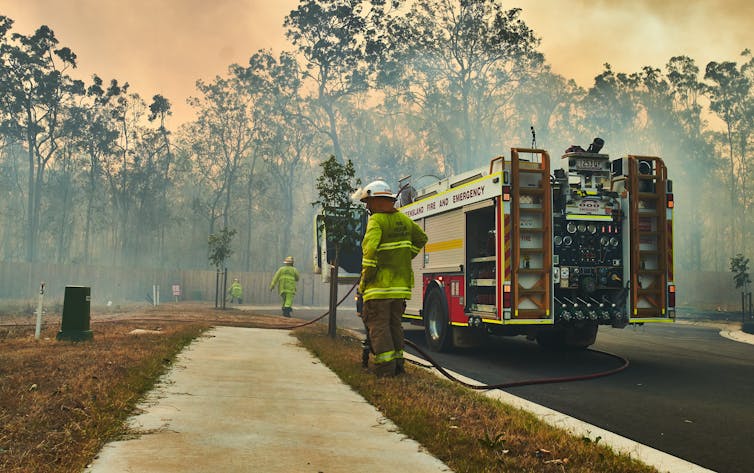
By 2030, climate change will make one in 25 Australian homes “uninsurable” if greenhouse gas emissions continue unabated, with riverine flooding posing the greatest insurance risk, a new Climate Council analysis finds.
As a professor of architecture, I find this analysis grim, yet unsurprising. One reason is because Australian housing is largely unfit for the challenges of climate change.
In the past two years alone we’ve seen over 3,000 homes razed in the 2019-2020 megafires, and over 3,600 homes destroyed in New South Wales Northern Rivers region in the recent floods.
Building houses better at withstanding the impacts of climate change is one way we can protect ourselves in the face of future catastrophic conditions. I’m part of a research team that developed a novel, bushfire-resistant house design, which won an international award last month.
We hope its ability to withstand fires on its own will encourage owners – who would otherwise stay to defend their home – to flee when bushfires encroach. Let’s take a closer look at the risk of bushfires and why our housing design should one day become a new Australian norm.
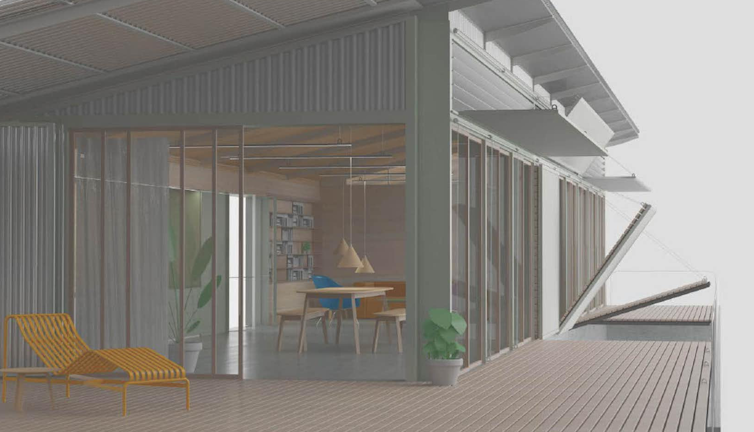
Houses Today Are Easy To Burn
The Climate Council analysis reveals that across Australia’s 10 electorates most at risk of climate change impacts, one in seven houses will be uninsurable by 2030 under a high emissions scenario. This includes 25,801 properties (27%) in Victoria’s electorate of Nicholls, and 22,274 properties (20%) in Richmond, NSW.
Bushfires are among the worsening hazards causing homes to be uninsurable, and pose a particularly high risk to many thousands of homes across eastern Australia.
For example, the Climate Council found 55% of properties in the electorate of Macquarie, NSW, will be at risk of bushfires in 2030, if emissions do not fall. This jumps to 64% of properties by 2100.
The typical Australian house was not designed with bushfires in mind as most were built decades ago, before bushfire planning and construction regulations came into force.
This means they incorporate burnable materials, such as wood and plasterboard, and have features such as gutters which can trap embers.
What’s more, the gaps between building materials are often too large to keep embers out, which means spot fires can start on the inside of the house. And many houses are situated too close to fire-prone grasses and trees.
Indeed, at least 90% of houses currently in bushfire zones risk being destroyed in a bushfire.
How Our New Design Can Withstand Fire
The prototypical bushfire resistant house we designed won first prize in the New Housing Division of the United States Renewable Energy Laboratory’s Solar Decathlon.

The house would be made from locally sourced, recycled steel frame. It would be mounted on reinforced concrete pilings to minimise its disturbance on the land, touching the ground only lightly. In this way, we help preserve the site’s biodiversity.
The primary building material is rammed earth – natural raw materials such as earth, chalk, lime, or gravel – which is not combustible.
The roof and some cladding are made of fire-resistant corrugated metal. Its glass facades have fire shutters made of fibre cement sheeting, a material that’s non-combustible and can be closed to seal the house.
Importantly, the gaps between these construction materials are 2 millimetres or less.
The sloped roofs tilt inwards to capture rainwater. And as the roofs are made of corrugated metal, which has channels in it, the house does not require gutters.
These channels guide rainwater into two open retention ponds either side of the entry, and into protected tanks beneath the house. This also helps protect the house in a bushfire, as it means the fire can’t penetrate from beneath.

When bushfires strike, the risk to life is highest when people stay and defend their homes. A design that can resist fire on its own encourages its owners to leave.
But it’s worth noting that it’s not a bunker for people to shelter in. No matter how well designed a house is, it always will be too dangerous to stay when a fire comes through, and particularly in the catastrophic and extreme fire conditions we’re increasingly experiencing.
It’s Cost Effective, Too
The estimated cost of construction is between A$400,000 and $450,000. We deployed several strategies to keep costs down:
the house is designed to be energy and water independent, so will not need city utilities
it uses common construction techniques and is based on the construction industry standard for sheeting, so won’t require specialised builders and won’t waste any material
rammed earth is relatively inexpensive because it can be sourced in many locations, often for free. We also envision using recycled materials wherever possible.
Aesthetically speaking, the design also presents an elegant domestic space, one that’s flexible enough it can easily be adapted to almost any site.

The next stage is to build and test a prototype of the house so we can evaluate its performance and make improvements. We’re currently speaking to some potential funders to make this happen.
As climate change brings worsening disasters, Australia must brace for thousands more houses becoming destroyed. Innovative architecture like ours offers a chance for treasured homes and possessions to survive future catastrophes.![]()
Deborah Ascher Barnstone, Professor, Head of School, School of Architecture, University of Technology Sydney
This article is republished from The Conversation under a Creative Commons license. Read the original article.
How can Aboriginal communities be part of the NSW renewable energy transition?
Heidi Norman, University of Technology Sydney and Chris Briggs, University of Technology SydneyThe New South Wales government’s roadmap to transition from coal-based electricity to renewable energy involves the creation of five “renewable energy zones” across the state.
These “modern-day power stations” will use solar, wind, batteries and new poles and wires to generate energy for the state. They’re part of a broader plan to meet a legislated target of 12 gigawatts of renewable energy and 2 gigawatts of storage by 2030.
These renewable energy zones include measures to deliver regional benefits such as engagement, jobs and benefit-sharing with local Aboriginal communities. This is a first for an Australian renewable energy program of this scale.
However, two things are needed to maximise this opportunity for Aboriginal people.
First, Aboriginal land councils need greater support and resources to participate effectively in delivery of the renewable energy zones.
Second, there should be a program to facilitate the development of renewable energy projects on Aboriginal-owned land.
Through these actions, the government can help develop partnerships that can deliver revenue and jobs for Aboriginal communities as the state transitions to clean energy.
Maximising Opportunities For First Nations Communities
There are some cases of renewable energy projects delivering for Aboriginal communities, such as solar farms engaging unemployed Aboriginal workers. But overall the benefits have been limited to date.
However, legislation requires the NSW government bodies and renewables projects in the renewable energy zones to comply with “First Nations Guidelines” currently under development.
The guidelines will require:
- regional reference groups
- an engagement framework for renewable energy projects, and
- a document reflecting community interests developed with the input of local Aboriginal organisations (land councils and Traditional Owners under Native Title) in each renewable energy zone.
Projects bidding for a “long-term energy supply agreement” from the NSW government - which will guarantee a minimum price for their output - have to comply with the Indigenous Procurement Policy. This includes ensuring a minimum 1.5% Aboriginal workforce and 1.5% of contract value to Aboriginal businesses.
These First Nations guidelines will form part of the tender evaluation, creating incentives for projects to increase benefits for First Nations communities.
The inclusion of these First Nations guidelines in the renewable energy projects is a first for Australian renewable energy. It’s likely to significantly improve economic outcomes for Aboriginal communities.
So far, so good.
However, there are also some missed opportunities.
First, if renewable energy projects and the First Nations guidelines are to work well, greater resourcing and capacity-building is needed for local Aboriginal land councils so they can participate effectively.
In addition, the NSW government should develop an Aboriginal-led local and regional level clean energy strategy so communities can identify what they want from this momentous change.
A study by the Indigenous Land and Justice Research Group, based at the University of Technology Sydney, revealed local Aboriginal land councils are eager for renewable energy. This would improve opportunities to live and work locally, boost energy security, lower costs, enable care of Country and create wealth.
However, the study found these communities had little or no knowledge about renewable energy options or how they could benefit.
Only one Local Aboriginal Land Council in the pilot renewable energy zone had prior dealings with renewable energy operators. All were uncertain about how their land assets could be mobilised.
More Opportunities Needed For Aboriginal-Owned Land In NSW
There are currently no measures to encourage and facilitate renewable energy projects on Aboriginal-owned land in NSW.
Work by Indigenous Energy Australia and the Institute for Sustainable Futures found the best outcomes often occur from “mid-sized” renewable energy projects on Indigenous-owned land.
Examples include:
the Ramahyuck Solar Farm (Longford, Victoria), which is wholly owned and operated by the Ramahyuck District Aboriginal Corporation. Following government funding, debt financing was secured for construction. The profit generated from the development will be redirected to Aboriginal education and health programs
the Tuaropaki Geothermal Power Station in New Zealand, which is 75% owned by the Māori, Tuaropaki Trust and 25% by Mercury Energy (a large energy company). The Tuaropaki Trust was developed through financial partnerships and government support. These developments produced long-term income for community programs and other commercial ventures
the Atlin Hydro Project in Canada, a 100% Indigenous owned and operated project. Government support was critical in establishing the project. Once established, revenues were distributed based on joint clan meetings for health programs and a land guardian program.
Developing projects on Aboriginal-owned land would take more time to identify a workable model, ensure there is support within the land council and local community and develop local capacity. But done well, it can deliver greater benefits for Aboriginal communities.
A government program developed in parallel with the roll out of the renewable energy zones could develop opportunities for renewable energy developments in partnership with local Aboriginal land councils.
Support for meaningful, Aboriginal-led renewable energy projects on Aboriginal land has the potential to make real progress towards the long hoped for benefits of land restitution for First Peoples in NSW.
The time for action is now.![]()
Heidi Norman, Professor, Faculty of Arts and Social Sciences, University of Technology Sydney and Chris Briggs, Research Director, Institute for Sustainable Futures, University of Technology Sydney
This article is republished from The Conversation under a Creative Commons license. Read the original article.
Scientists in Antarctica discover a vast, salty groundwater system under the ice sheet – with implications for sea level rise

A new discovery deep beneath one of Antarctica’s rivers of ice could change scientists’ understanding of how the ice flows, with important implications for estimating future sea level rise.
Glacier scientists Matthew Siegfried from Colorado School of Mines, Chloe Gustafson from Scripps Institution of Oceanography and their colleagues spent 61 days living in tents on an Antarctic ice stream to collect data about the land under half a mile of ice beneath their feet. They explain what the team discovered and what it says about the behavior of ice sheets in a warming world.
What Was The Big Takeaway From Your Research?
First, it helps to understand that West Antarctic was an ocean before it was an ice sheet. If it disappeared today, it would be an ocean again with a bunch of islands. So, we know that the bedrock below the ice sheet is covered with a thick layer of sediments – the particles that accumulate onto ocean floors.
What we didn’t know was what was in the tiny pore spaces among those sediments below the ice.
We expected to find meltwater coming from the ice stream above, a fast-moving channel of ice that flows from the center of the ice sheet toward the ocean. What we didn’t expect, but we found in this thick layer of sediments, was a huge amount of groundwater – including saltwater from the ocean.
Our findings suggest that this salty groundwater is the largest reservoir of liquid water below the ice stream we studied, and likely others, and it may be affecting how the ice flows on Antarctica.
Liquid water is incredibly important to how fast an ice stream moves. If there’s liquid water at the base of an ice stream, it flows fast. If that water freezes or the base dries out, the ice screeches to a stop.
Models of ice streams typically consider only whether ice at the base has reached the melting point or if water has flowed from upstream along the base of the ice. Scientists had never considered that more water was available under the ice sheet, let alone water that is much saltier, which keeps water from freezing at lower temperatures. (Think about why communities put salt on roads in winter.)
Our observations suggest there is so much water there, if you took the 500 to 1,900 meters (1,600 to 6,200 feet) or so of sediments below the ice stream and squeezed them like a sponge, you’d have a column of water about 220 to 820 meters (700 to 2,700 feet) deep.
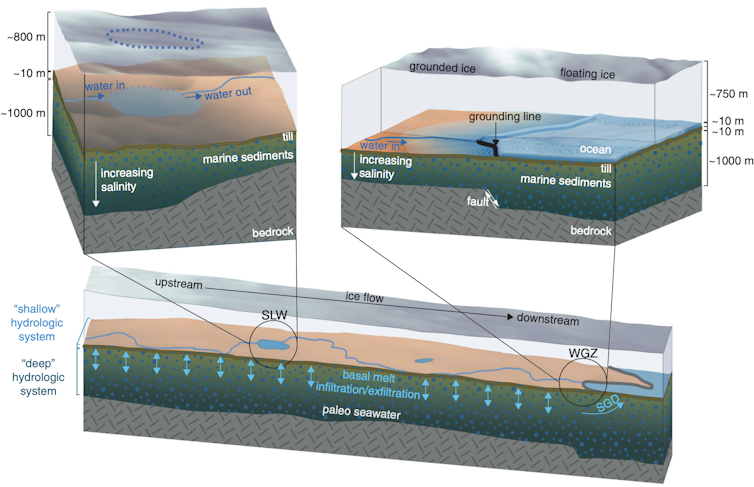
This water can move through the pores in the subglacial groundwater system, just like groundwater elsewhere, but in Antarctica, there is a dynamic ice sheet on top. When the ice sheet gets thicker, it exerts more pressure on the sediment below, so it could drive meltwater from the base of the ice sheet deeper into the sediment. When the ice gets thinner, however, it could draw water, now a little saltier, out of the sediments. That saltier water could affect how fast the ice flows.
Knowing that there is a massive reservoir of water that may be linked to how fast-flowing regions of Antarctica behave means scientists need to rethink our understanding of ice streams.
What Does Finding Liquid Water In The Sediments Tell Scientists About Antarctica?
The salty groundwater was a clear sign of how far inland the boundary between the ice sheet and the ocean once reached.
This boundary, known as the grounding line, is incredibly important. When ice flows across the grounding line, it starts to float in the ocean. If you know how the grounding line is shifting, you have a good sense of how much ice is being contributed to the global ocean.
The fact that there were marine waters beneath our feet meant that the grounding line was upstream of us at some point, at least 70 miles (110 kilometers) from where it is today.
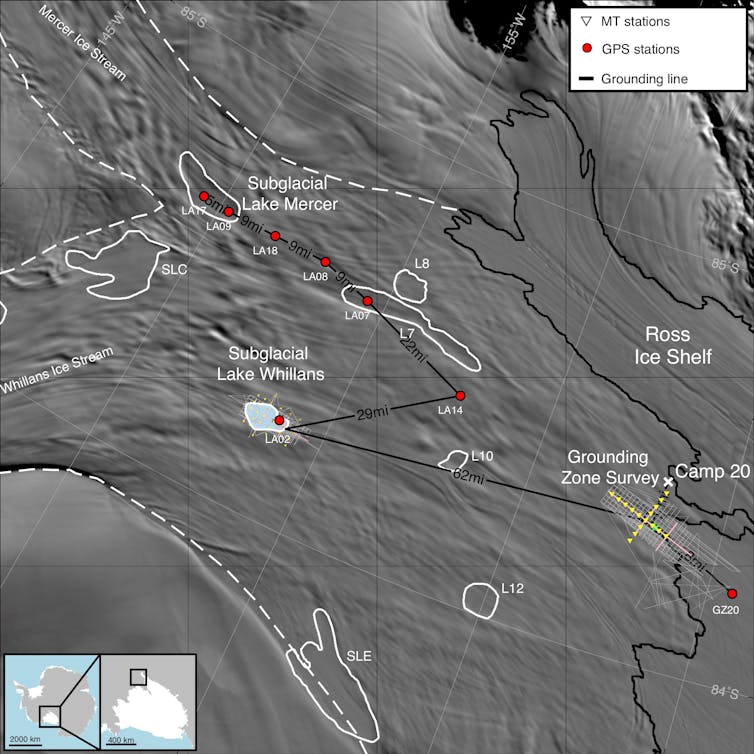
The next question is when it got there.
We argue in our paper that it can’t be too old. The groundwater is flowing, and fresh water is coming into the sediments from the glacier above. We estimate that most of this salty water arrived in the subglacial system within the past 10,000 years, based on how much radiocarbon has been found in the upper sediment in previous a study.
The ocean would have deposited that seawater when the ice sheet got smaller during warm periods in the past.
Whillans Ice Stream Is Pretty Remote. How Did You Determine What Was Happening A Mile Below You?
Our site is about a two-hour flight from McMurdo Station, Antarctica. The plane lands on skis and drops off everything you need to live. Then it takes off, and it’s you, your field team, and a couple pallets of cargo.
In all, we slept 61 days in a tent that season. Each day, we packed our snowmobiles, put in the coordinates for a site, and installed magnetotelluric stations.
Each station has three magnetometers – pointing east-west, north-south and vertical – and two pairs of electrodes – aligned east-west and north-south. These instruments can detect the electromagnetic signatures of different Earth materials in the subsurface.
Natural variations in the Earth’s magnetic and electric fields are created by events across the globe, such as solar wind interacting with the Earth’s ionosphere and lightning strikes. A change in the Earth’s magnetic and electric fields induces secondary electromagnetic fields in the subsurface, and the strength of those fields is related to how well the material there conducts electricity.
So, by measuring electric and magnetic fields on the ice surface, we can figure out the conductivity of the subsurface materials, including water. It’s the same method the oil and gas industry used to find fossil fuels.
We could see the groundwater, and since salt water has far greater conductivity than fresh water, we could estimate how salty it was.
What Else Might Be In The Groundwater?
Any time we’ve poked a hole through Antarctica, it’s been teeming with microbial life. There’s no reason to think microbes aren’t gnawing away at nutrients in the groundwater, too.
When you have microbial ecosystems that are cut off for extended periods of time – in this case, seawater was likely deposited there 5,000-10,000 years ago – you start to have a pretty good analog for how life might exist on other planetary bodies, locked in the subsurface and buried underneath thick ice.
Where there’s life, there is also the question of carbon.
We know that there are microbes in subglacial lakes and rivers at the top of the sediment that are consuming carbon and transforming it into greenhouse gases like methane and carbon dioxide. We know all of this carbon ultimately gets transferred to the Southern Ocean. But we still don’t have great measurements of any of this.
This is a new environment, and there’s a lot of research still to do. We have observations from one ice stream. It’s like sticking a straw in the groundwater system in Florida and saying, “Yeah, there’s something here” – but what does the rest of the continent look like?![]()
Matthew Siegfried, Assistant Professor of Geophysics and Hydrologic Science and Engineering, Colorado School of Mines and Chloe Gustafson, Postdoctoral Research Scientist in Geophysics, Scripps Institution of Oceanography, University of California San Diego
This article is republished from The Conversation under a Creative Commons license. Read the original article.
65,000 years of food scraps found at Kakadu tell a story of resilience amid changing climate, sea levels and vegetation
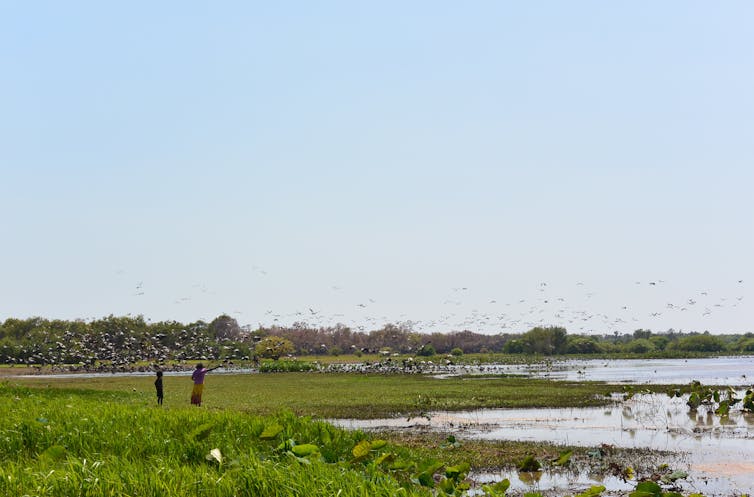
For 65,000 years, Bininj – the local Kundjeihmi word for Aboriginal people – have returned to Madjedbebe rock shelter on Mirarr Country in the Kakadu region (in the Northern Territory).
Over this immense span of time, the environment around the rock shelter has changed dramatically.
Our paper, published last week in Quaternary Science Reviews, uses ancient scraps of plant foods, once charred in the site’s fireplaces, to explore how Aboriginal communities camping at the site responded to these changes.
This cooking debris tells a story of resilience in the face of changing climate, sea levels and vegetation.
A Changing Environment
The 50-metre-long Madjedbebe rock shelter lies at the base of a huge sandstone outlier. The site has a dark, ashy floor from hundreds of past campfires and is littered with stone tools and grindstones.
The back wall is decorated with vibrant and colourful rock art. Some images – such as horsemen in broad-brimmed hats, ships, guns and decorated hands – are quite recent. Others are likely many thousands of years old.
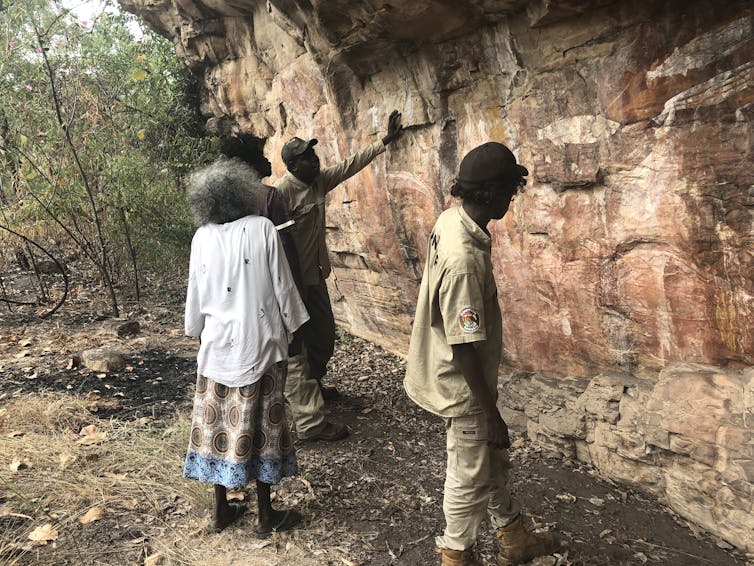
Today, the site is situated on the edge of the Jabiluka wetlands. But 65,000 years ago, when sea levels were much lower, it sat on the edge of a vast savanna plain joining Australia and New Guinea in the supercontintent of Sahul.
At this time, the world was experiencing a glacial period (referred to as the Marine Isotope Stage 4, or MIS 4) . And while Kakadu would have been relatively well-watered compared with other parts of Australia, the monsoon vine forest vegetation, common at other points in time, would have retreated.
This glacial period would eventually ease, followed by an interglacial period, and then another glacial period, the Last Glacial Maximum (MIS 2).
Cut to the Holocene (10,000 years ago) and the weather became much warmer and wetter. Monsoon vine forest, open forest and woodland vegetation proliferated, and sea levels rose rapidly.
By 7,000 years ago, Australia and New Guinea were entirely severed from each other and the sea approached Madjedbebe to a high stand of just 5km away.
What followed was the rapid transformation of the Kakadu region. First the sea receded slightly, the river systems near the site became estuaries, and mangroves etched the lowlands.
By 4,000 years ago, these were partially replaced by patches of freshwater wetland. And by 2,000 years ago, the iconic Kakadu wetlands of today were formed.
Unlikely Treasure
Our research team, composed of archaeologists and Mirarr Traditional Owners, wanted to learn how people lived within this changing environment.
To do this, we sought an unlikely archaeological treasure: charcoal. It’s not something that comes to mind for the average camper, but when a fireplace is lit many of its components – such as twigs and leaves, or food thrown in – can later transform into charcoal.
Under the right conditions, these charred remains will survive long after campers have moved on. This happened many times in the past. Bininj living at Madjedbebe left a range of food scraps behind, including charred and fragmented fruit, nuts, palm stem, seeds, roots and tubers.
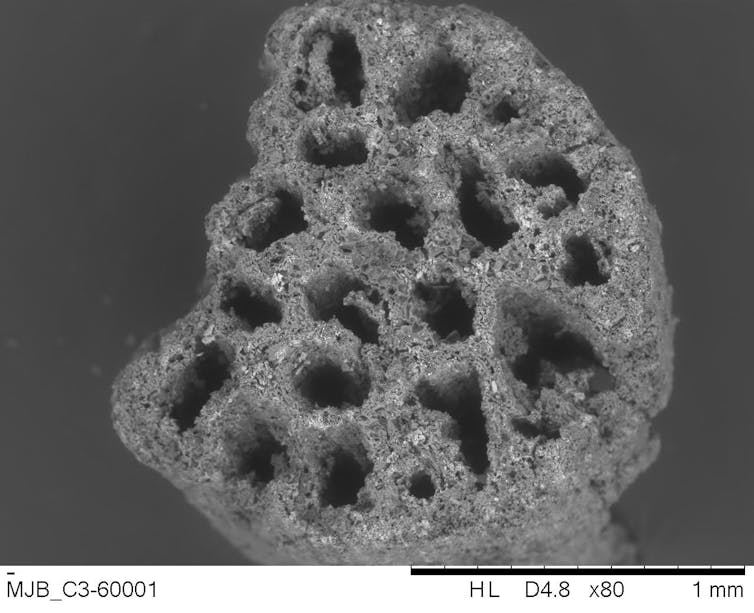
Using high-powered microscopes, we compared the anatomy of these charcoal pieces to plant foods still harvested from Mirarr Country today. By doing so, we learned about the foods past people ate, the places they gathered them from, and even the seasons in which they visited the site.
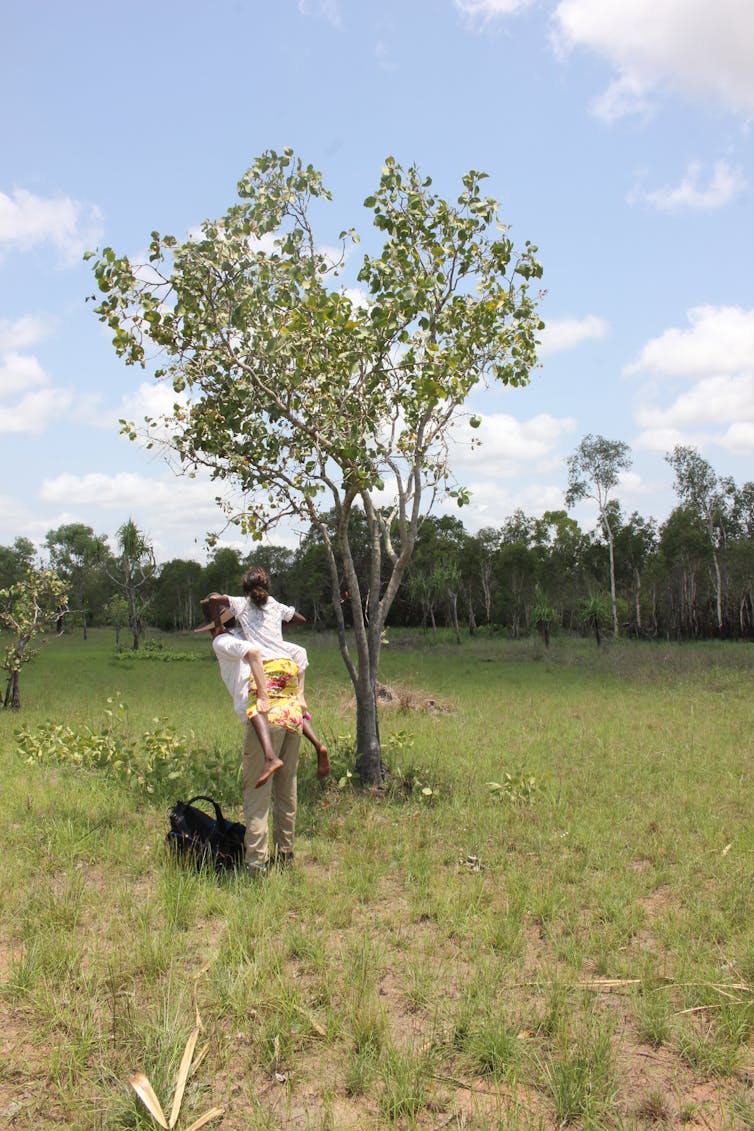
Ancient Anme
From the earliest days of camping at Madjedbebe, people gathered and ate a broad range of anme (the Kundjeihmi word for “plant foods”). This included plants such as pandanus nuts and palm heart, which require tools, labour and detailed traditional knowledge to collect and make edible.
The tools used included edge-ground axes and grinding stones. These were all found in the oldest layers at the site – making them the oldest axes and some of the earliest grinding stones in the world.
Our evidence shows that during the two drier glacial phases (MIS 4 and 2), communities at Madjedbebe relied more on these harder-to-process foods. As the climate was drier, and food was probably more dispersed and less abundant, people would have had to make do with foods that took longer to process.
Highly prized anme such as karrbarda (long yam, Dioscorea transvera) and annganj/ankanj (waterlily seeds, Nymphea spp.) were significant elements of the diet at times when the monsoon vine forest and freshwater vegetation got closer to Madjedbebe – such as during wetland formation in the last 4,000 years and earlier wet phases. But they were also sought from more distant places during drier times.
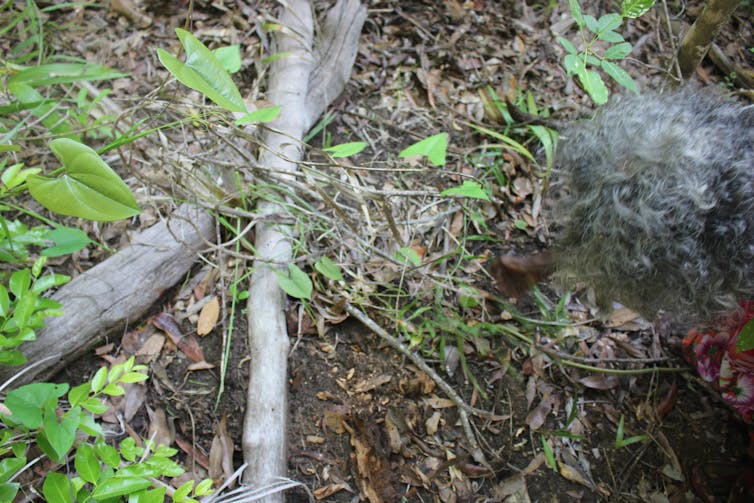
A Change Of Seasons
The biggest shift in the plant diet eaten at Madjedbebe occurred with the formation of freshwater wetlands. About 4,000 years ago, Bininj didn’t just start to include more freshwater plants in their diet, they also began to return to Madjedbebe during a different season.
Rather than coming to the rock shelter when local fruit trees such as andudjmi (green plum, Buchanania obovata) were fruiting, from Kurrung to Kunumeleng (September to December), they began visiting from Bangkerrang to Wurrkeng (March to August).
This is a time of year when resources found at the edge of the wetlands, now close to Madjedbebe, become available as floodwaters recede. With the emergence of patchy freshwater wetlands 4,000 years ago, communities changed their diet to make the best use of their environments.
Today, the wetlands are culturally and economically significant to the Mirarr and other Bininj. A range of seasonal animal and plant foods feature at dinner time, including magpie geese, turtles and waterlilies.
The Burning Question
It’s likely the First Australians not only responded to their environment but also shaped it. In the Kakadu region today, one of the main ways Bininj modify their landscape is through cultural burning.
Fire is a cultural tool with a multitude of functions – such as, hunting, generating vegetation growth, and cleaning up pathways and campsites.
One of its most important functions is the steady reduction of wet season biomass which, if left unchecked, becomes fuel for dangerous bushfires in Kurrung (September to October), at the end of the dry season.
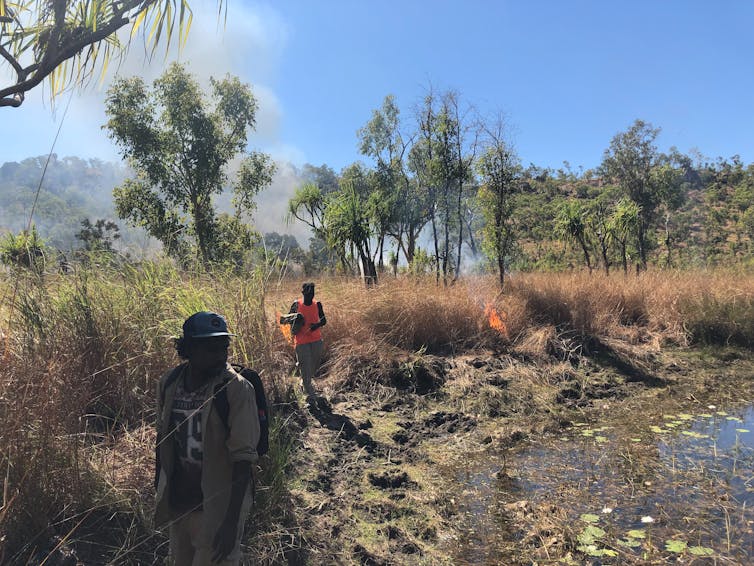
Our data demonstrates the use of a range of plant foods at Madjedbebe during Kurrung, throughout most of the site’s occupation, from 65,000 to 4,000 years ago.
This points to an ongoing practice of cultural burning, as it suggests communities managed fire-sensitive plant varieties, and reduced the chance of high-intensity bushfires by practicing low-intensity cultural burns before the hottest time of the year.
Today, the Mirarr still return to Madjedbebe. Their knowledge of local anme is passed down to new generations, who continue to shape this incredible cultural legacy.
Acknowledgment: we would like to thank the Gundjeihmi Aboriginal Corporation, the Mirrar, and especially our co-authors May Nango and Djaykuk Djandjomerr.![]()
Anna Florin, Research fellow, University of Cambridge; Andrew Fairbairn, Professor of Archaeology, The University of Queensland, and Chris Clarkson, Professor in Archaeology, The University of Queensland
This article is republished from The Conversation under a Creative Commons license. Read the original article.
Toughness has limits: over 1,100 species live in Antarctica – but they’re at risk from human activity
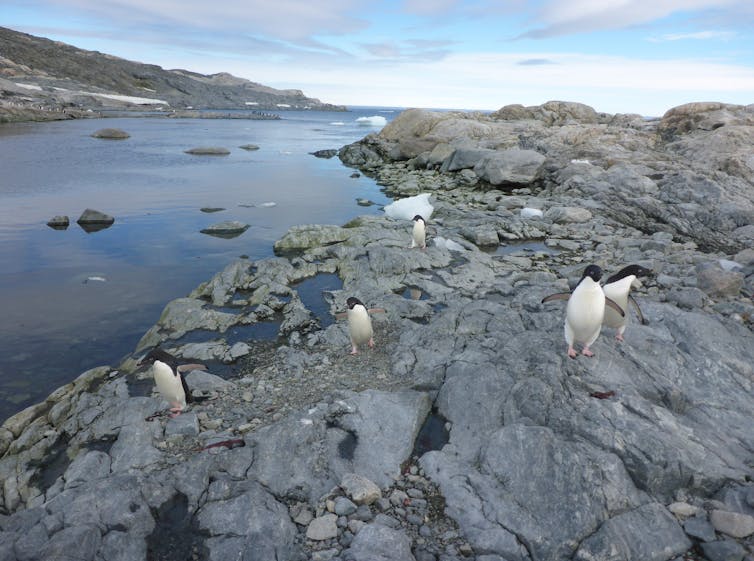
It’s hard to survive in bitterly cold Antarctica. But the ice continent is home to more than 1,100 species who have adapted to life on land and in its lakes.
Penguins are the most well known, but Antarctica’s diversity lies in its microbes and species like mosses, lichens and tardigrades (water bears). Most of these survive in the few ice-free areas on the continent.
Our new research provides a comprehensive inventory of Antarctic species. We believe it will help the 54 nations who are party to the Antarctic Treaty fulfil one of its major conservation goals – the continent-wide protection of Antarctic species.
Despite their toughness, climate change, introduced species and human activities pose growing threats for these species. We need rapid and widespread protection for Antarctica’s biodiversity if these species are to survive.
How Can So Many Species Live In Antarctica?
Our inventory found 1,142 land and lake-dwelling species currently known to live on the Antarctic continent. This list is dominated by extraordinarily resilient groups, such as lichens, mosses and invertebrates, which have evolved to thrive under extreme conditions.
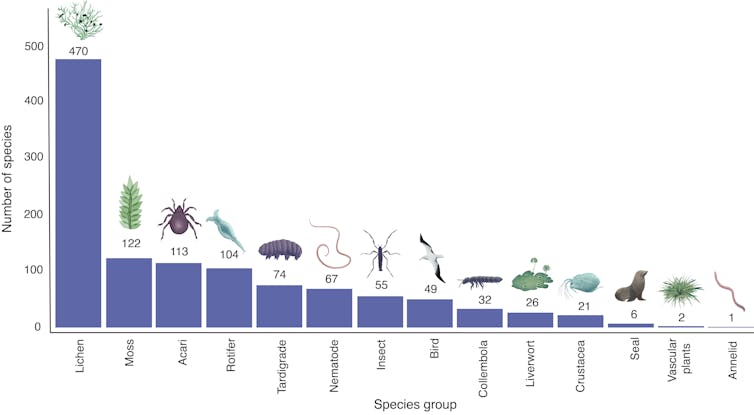
These species have developed unique adaptations to live in this frozen desert, where sub-zero temperatures are the norm and life sustaining water is often locked up as ice.
Antarctic mosses have the incredible ability to freeze and almost completely dry out. They come back to life during the brief periods when it’s warm enough for ice to melt, and take advantage of liquid water to rehydrate and grow.
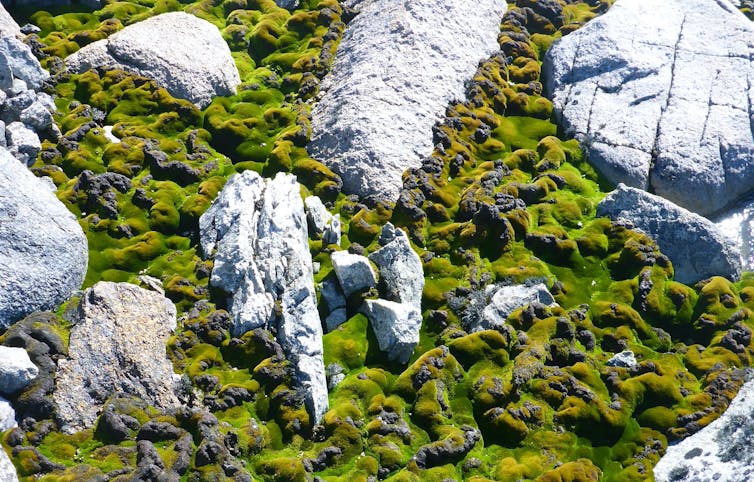
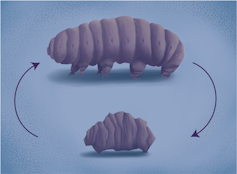
Tardigrades are, famously, masters of survival. During tough times, they can enter a frozen, inactive state very close to death. Some have remained frozen for over 30 years before recovering and resuming their normal lives as if nothing happened.
And then, of course, there are the penguins. Five of the world’s 18 species live in Antarctica, with another four species on sub-Antarctic islands. These birds are built for the cold with thick layers of insulating fat and feathers to keep warm.

Isn’t Antarctica Already Protected?
It’s a common belief that Antarctica is already highly protected. But, in practice, this is only true for specific areas.
In 1991, the nations party to the Antarctic Treaty agreed to conserve the unique continent through the Madrid Protocol. This agreement set the foundations for a network of 75 protected areas – those with outstanding environmental, scientific, historic, aesthetic and wilderness value.
This approach aided conservation, by restricting entry and limiting what people can do, safeguarding biodiversity from issues such as wildlife disturbance, pollution, and introduction of invasive species.
But there are still large gaps, leaving many species unprotected.
One solution is already outlined in the Madrid Protocol: protect the “type localities” of each species. This refers to the location where the very first specimen of a species was collected and described. These specimens are crucial for taxonomy, as they act as the point of reference to check against unknown or ambiguous specimens.
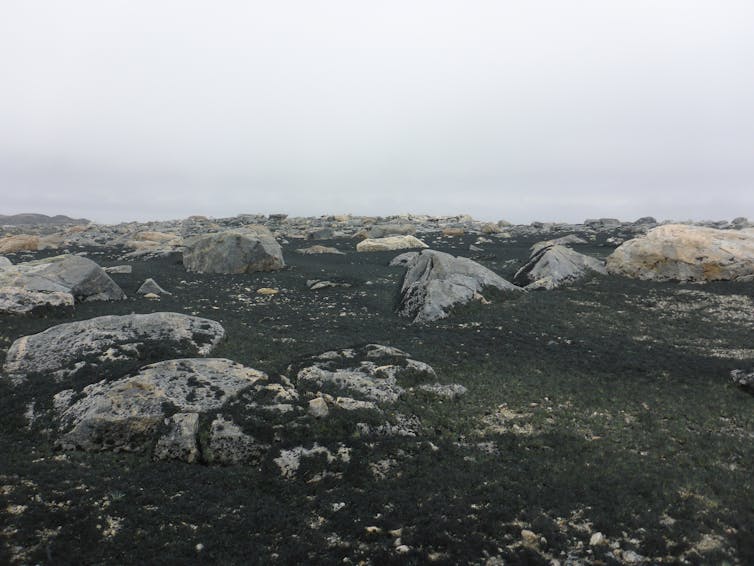
Importantly, protecting the type locality of a species ensures any species can be protected, even if we know little about their habitat or distribution. This is especially important for Antarctic species, because for many, the type locality is the only known location for that species.
To date, however, no Antarctic protected areas have been created specifically to conserve type localities. That’s where our research can help.
What Needs To Be Done?
The reason there are no protected areas of this kind is because we haven’t had a comprehensive list of Antarctic species and their type localities. That’s why we undertook this research.
Once we had the list, we mapped the type localities across the continent to see how many of these sites are currently protected.

We found more than a quarter (28%) of all species already have their type localities protected for other reasons, such as scientific interest or wildlife colonies. That’s because they occur in the few and small ice free areas across the continent, where most of the existing protected areas have been created. The remaining 72% of the continent’s type localities are not protected in this way.
There is now a great opportunity to protect these localities. If we focus first on areas with multiple type localities, we could get many more species protected.
Over time, we could expand this network. We estimate another 105 new protected areas would cover all remaining type localities.
We would also need to update the plans for existing protected areas to ensure the value of type localities are taken into account.
Longer term, we will need to embrace a systematic conservation framework across Antarctica to ensure the world’s last great wilderness remains full of life.![]()
Laura Phillips, Antarctic Scientist, Monash University and Rachel Leihy, Ecologist, Arthur Rylah Institute for Environmental Research
This article is republished from The Conversation under a Creative Commons license. Read the original article.
Pittwater Reserves: Histories + Notes + Pictorial Walks
A History Of The Campaign For Preservation Of The Warriewood Escarpment by David Palmer OAM and Angus Gordon OAM
Angophora Reserve - Angophora Reserve Flowers
Annie Wyatt Reserve - A Pictorial
Avalon's Village Green: Avalon Park Becomes Dunbar Park - Some History + Toongari Reserve and Catalpa Reserve
Bairne Walking Track Ku-Ring-Gai Chase NP by Kevin Murray
Bangalley Headland Bangalley Mid Winter
Banksias of Pittwater
Barrenjoey Boathouse In Governor Phillip Park Part Of Our Community For 75 Years: Photos From The Collection Of Russell Walton, Son Of Victor Walton
Barrenjoey Headland: Spring flowers
Barrenjoey Headland after fire
Bayview Baths
Bayview Wetlands
Beeby Park
Bilgola Beach
Botham Beach by Barbara Davies
Bungan Beach Bush Care
Careel Bay Saltmarsh plants
Careel Bay Birds
Careel Bay Clean Up day
Careel Bay Playing Fields History and Current
Careel Creek
Careel Creek - If you rebuild it they will come
Centre trail in Ku-ring-gai Chase National Park
Chiltern Track- Ingleside by Marita Macrae
Clareville Beach
Clareville/Long Beach Reserve + some History
Coastal Stability Series: Cabbage Tree Bay To Barrenjoey To Observation Point by John Illingsworth, Pittwater Pathways, and Dr. Peter Mitchell OAM
Cowan Track by Kevin Murray
Curl Curl To Freshwater Walk: October 2021 by Kevin Murray and Joe Mills
Currawong and Palm Beach Views - Winter 2018
Currawong-Mackerel-The Basin A Stroll In Early November 2021 - photos by Selena Griffith
Currawong State Park Currawong Beach + Currawong Creek
Deep Creek To Warriewood Walk photos by Joe Mills
Drone Gives A New View On Coastal Stability; Bungan: Bungan Headland To Newport Beach + Bilgola: North Newport Beach To Avalon + Bangalley: Avalon Headland To Palm Beach
Duck Holes: McCarrs Creek by Joe Mills
Dunbar Park - Some History + Toongari Reserve and Catalpa Reserve
Dundundra Falls Reserve: August 2020 photos by Selena Griffith - Listed in 1935
Elsie Track, Scotland Island
Elvina Track in Late Winter 2019 by Penny Gleen
Elvina Bay Walking Track: Spring 2020 photos by Joe Mills
Elvina Bay-Lovett Bay Loop Spring 2020 by Kevin Murray and Joe Mills
Fern Creek - Ingleside Escarpment To Warriewood Walk + Some History photos by Joe Mills
Iluka Park, Woorak Park, Pittwater Park, Sand Point Reserve, Snapperman Beach Reserve - Palm Beach: Some History
Ingleside
Ingleside Wildflowers August 2013
Irrawong - Ingleside Escarpment Trail Walk Spring 2020 photos by Joe Mills
Irrawong - Mullet Creek Restoration
Katandra Bushland Sanctuary - Ingleside
Lucinda Park, Palm Beach: Some History + 2022 Pictures
McCarrs Creek
McCarr's Creek to Church Point to Bayview Waterfront Path
McKay Reserve
Mona Vale Beach - A Stroll Along, Spring 2021 by Kevin Murray
Mona Vale Headland, Basin and Beach Restoration
Mount Murray Anderson Walking Track by Kevin Murray and Joe Mills
Mullet Creek
Narrabeen Creek
Narrabeen Lagoon Catchment: Past Notes Present Photos by Margaret Woods
Narrabeen Lagoon State Park
Narrabeen Lagoon State Park Expansion
Narrabeen Rockshelf Aquatic Reserve
Nerang Track, Terrey Hills by Bea Pierce
Newport Bushlink - the Crown of the Hill Linked Reserves
Newport Community Garden - Woolcott Reserve
Newport to Bilgola Bushlink 'From The Crown To The Sea' Paths: Founded In 1956 - A Tip and Quarry Becomes Green Space For People and Wildlife
Pittwater spring: waterbirds return to Wetlands
Pittwater's Lone Rangers - 120 Years of Ku-Ring-Gai Chase and the Men of Flowers Inspired by Eccleston Du Faur
Pittwater's Parallel Estuary - The Cowan 'Creek
Resolute Track at West Head by Kevin Murray
Resolute Track Stroll by Joe Mills
Riddle Reserve, Bayview
Salvation Loop Trail, Ku-Ring-Gai Chase National Park- Spring 2020 - by Selena Griffith
Stapleton Reserve
Stapleton Park Reserve In Spring 2020: An Urban Ark Of Plants Found Nowhere Else
The Chiltern Track
The Resolute Beach Loop Track At West Head In Ku-Ring-Gai Chase National Park by Kevin Murray
Towlers Bay Walking Track by Joe Mills
Trafalgar Square, Newport: A 'Commons' Park Dedicated By Private Landholders - The Green Heart Of This Community
Tranquil Turimetta Beach, April 2022 by Joe Mills
Turimetta Beach Reserve by Joe Mills, Bea Pierce and Lesley
Turimetta Beach Reserve: Old & New Images (by Kevin Murray) + Some History
Turimetta Headland
Warriewood Wetlands and Irrawong Reserve
Whale Beach Ocean Reserve: 'The Strand' - Some History On Another Great Protected Pittwater Reserve
Winji Jimmi - Water Maze

New Shorebirds WingThing For Youngsters Available To Download
A Shorebirds WingThing educational brochure for kids (A5) helps children learn about shorebirds, their life and journey. The 2021 revised brochure version was published in February 2021 and is available now. You can download a file copy here.
If you would like a free print copy of this brochure, please send a self-addressed envelope with A$1.10 postage (or larger if you would like it unfolded) affixed to: BirdLife Australia, Shorebird WingThing Request, 2-05Shorebird WingThing/60 Leicester St, Carlton VIC 3053.

 Shorebird Identification Booklet
Shorebird Identification Booklet
The Migratory Shorebird Program has just released the third edition of its hugely popular Shorebird Identification Booklet. The team has thoroughly revised and updated this pocket-sized companion for all shorebird counters and interested birders, with lots of useful information on our most common shorebirds, key identification features, sighting distribution maps and short articles on some of BirdLife’s shorebird activities.
The booklet can be downloaded here in PDF file format: http://www.birdlife.org.au/documents/Shorebird_ID_Booklet_V3.pdf
Paper copies can be ordered as well, see http://www.birdlife.org.au/projects/shorebirds-2020/counter-resources for details.
Download BirdLife Australia's children’s education kit to help them learn more about our wading birdlife
Shorebirds are a group of wading birds that can be found feeding on swamps, tidal mudflats, estuaries, beaches and open country. For many people, shorebirds are just those brown birds feeding a long way out on the mud but they are actually a remarkably diverse collection of birds including stilts, sandpipers, snipe, curlews, godwits, plovers and oystercatchers. Each species is superbly adapted to suit its preferred habitat. The Red-necked Stint is as small as a sparrow, with relatively short legs and bill that it pecks food from the surface of the mud with, whereas the Eastern Curlew is over two feet long with a exceptionally long legs and a massively curved beak that it thrusts deep down into the mud to pull out crabs, worms and other creatures hidden below the surface.
Some shorebirds are fairly drab in plumage, especially when they are visiting Australia in their non-breeding season, but when they migrate to their Arctic nesting grounds, they develop a vibrant flush of bright colours to attract a mate. We have 37 types of shorebirds that annually migrate to Australia on some of the most lengthy and arduous journeys in the animal kingdom, but there are also 18 shorebirds that call Australia home all year round.
What all our shorebirds have in common—be they large or small, seasoned traveller or homebody, brightly coloured or in muted tones—is that each species needs adequate safe areas where they can successfully feed and breed.
The National Shorebird Monitoring Program is managed and supported by BirdLife Australia.
This project is supported by Glenelg Hopkins Catchment Management Authority and Hunter Local Land Services through funding from the Australian Government’s National Landcare Program. Funding from Helen Macpherson Smith Trust and Port Phillip Bay Fund is acknowledged.
The National Shorebird Monitoring Program is made possible with the help of over 1,600 volunteers working in coastal and inland habitats all over Australia.
The National Shorebird Monitoring program (started as the Shorebirds 2020 project initiated to re-invigorate monitoring around Australia) is raising awareness of how incredible shorebirds are, and actively engaging the community to participate in gathering information needed to conserve shorebirds.
In the short term, the destruction of tidal ecosystems will need to be stopped, and our program is designed to strengthen the case for protecting these important habitats.
In the long term, there will be a need to mitigate against the likely effects of climate change on a species that travels across the entire range of latitudes where impacts are likely.
The identification and protection of critical areas for shorebirds will need to continue in order to guard against the potential threats associated with habitats in close proximity to nearly half the human population.
Here in Australia, the place where these birds grow up and spend most of their lives, continued monitoring is necessary to inform the best management practice to maintain shorebird populations.
BirdLife Australia believe that we can help secure a brighter future for these remarkable birds by educating stakeholders, gathering information on how and why shorebird populations are changing, and working to grow the community of people who care about shorebirds.
To find out more visit: http://www.birdlife.org.au/projects/shorebirds-2020/shorebirds-2020-program
Aussie Bread Tags Collection Points

Seniors Urged To Be Vigilant Against Scams
Seniors' Stories Volume 8
- The competition is open to all New South Wales Seniors cardholders.
- Seniors Card Membership Number must be included on the entry form.
- Seniors Card Membership, competition entry and Workshops are FREE.
- The theme for this year is: ‘Celebrating Diversity.‘
- Story length max. 1,000 words (Poetry not accepted). Excess word count will be immediately disqualified (the story title is exempt from the word count).
- Multiple entries may be submitted but only one will be published. No entries will be accepted outside the stated competition dates and times; the link to submit your entry closing promptly 6pm, 21st May, 2022.
- The top 100 entries will be published in the Seniors Card anthology to be released in November 2022.
- The judge’s decision is final, and no correspondence will be entered into.
- Entries to be submitted online via the interactive Entry Form found on the FAW NSW website www.fawnsw.org.au available from 9.00am Saturday 9 April. Your story can be submitted along with the Entry Form.
- Due to the requirement of the printer, entries to be in digital form. (Help for non-computer users available on 0417 403 720 – leave your name and contact number).
- Entries must be a Word document, not a PDF or Jpeg. Please Note: Filename for your attached document should match the Story Title, which must NOT be the theme name.
- Entries sent in a format other than Word cannot be accepted.
- Entries should be typed in 12pt font, double spaced.
- AUTHOR NAME SHOULD ONLY APPEAR ON THE ENTRY FORM, NOT THE STORY.

National Heart Week

Election 2022: Information You Need To Know
- are outside the electorate where you are enrolled to vote
- are more than 8km from a polling place
- are travelling
- are unable to leave your workplace to vote
- are seriously ill, infirm, or due to give birth shortly (or caring for someone who is)
- are a patient in hospital and can't vote at the hospital
- have religious beliefs that prevent you from attending a polling place
- are in prison serving a sentence of less than three years or otherwise detained
- are a silent elector
- have a reasonable fear for your safety.

The Beatles - Here Comes The Sun
From the Beatles YouTube Channel
Study Of Promising Alzheimer's Marker In Blood Prompts Warning About Brain-Boosting Supplements
The Archibald 2022 finalists: sitters speaking up to power; artists speaking back to the canon

For those seeking refuge from the election, the 101st Archibald Prize is almost a politician-free zone. Unless you count Joanna Braithwaite’s amusingly titled McManusstan, a portrait of bird lover Sally McManus. Former Labor minister Peter Garrett painted by Anh Do is in the line up – but more accurately described as a rock star.
Braithwaite has painted McManus in a suit that I am guessing she doesn’t own, as it is covered in newspaper stories attacking unions.
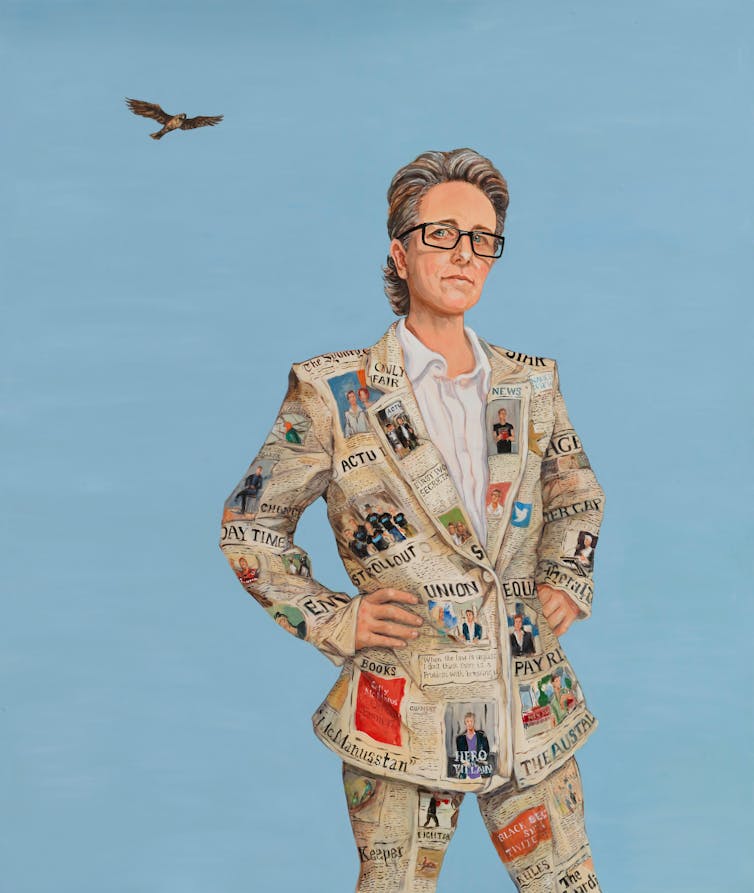
This year’s exhibition includes some interesting art as well as people of interest. Both artists and their subjects have issues that our elected officials seem unwilling or unable to solve.
As effective as McManus has been in bringing industrial issues to the fore, Laura Tingle – the fourth estate, painted by James Powditch, is probably more influential for the way she speaks truth to power.
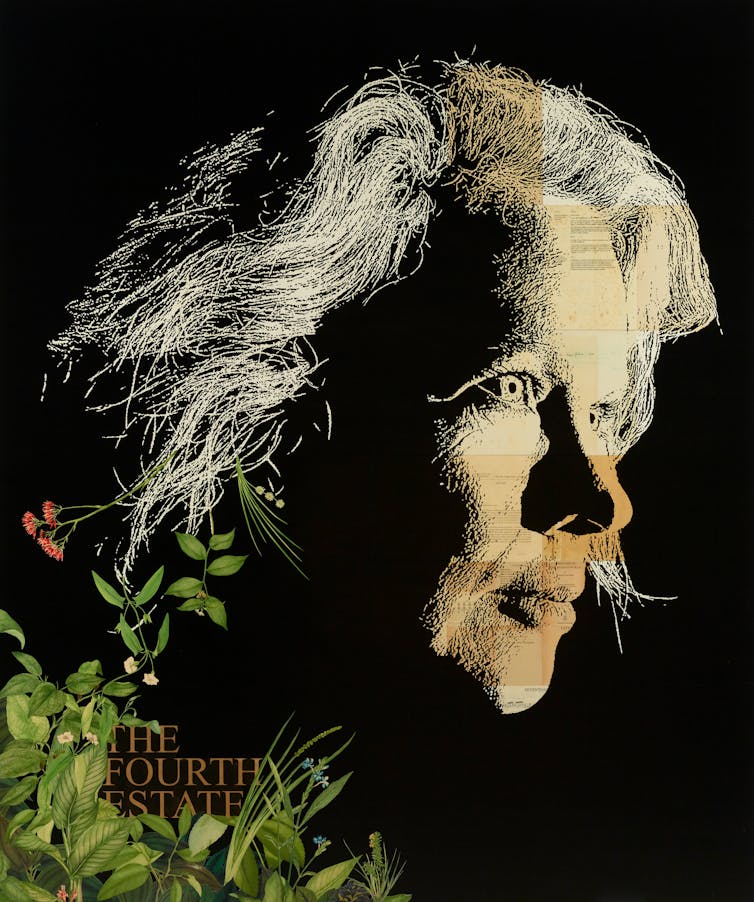
Powditch has entered the Archibald many times before and this is by far his most impressive entry so far. Tingle is painted in profile, looking intently at someone we cannot see.
Her face is superimposed over a collage that includes a script from 7.30, a page from her Quarterly Essay, pages from Simeon Potter’s Language in the Modern World and a fragment of a Bach composition. A multicoloured collage of facsimile engravings by Sydney Parkinson tells of her love of gardening.
Reverent Rage
The painting that dominates the exhibition is Blak Douglas’ Moby Dickens, a portrait of the Wiradjuri artist Karla Dickens.
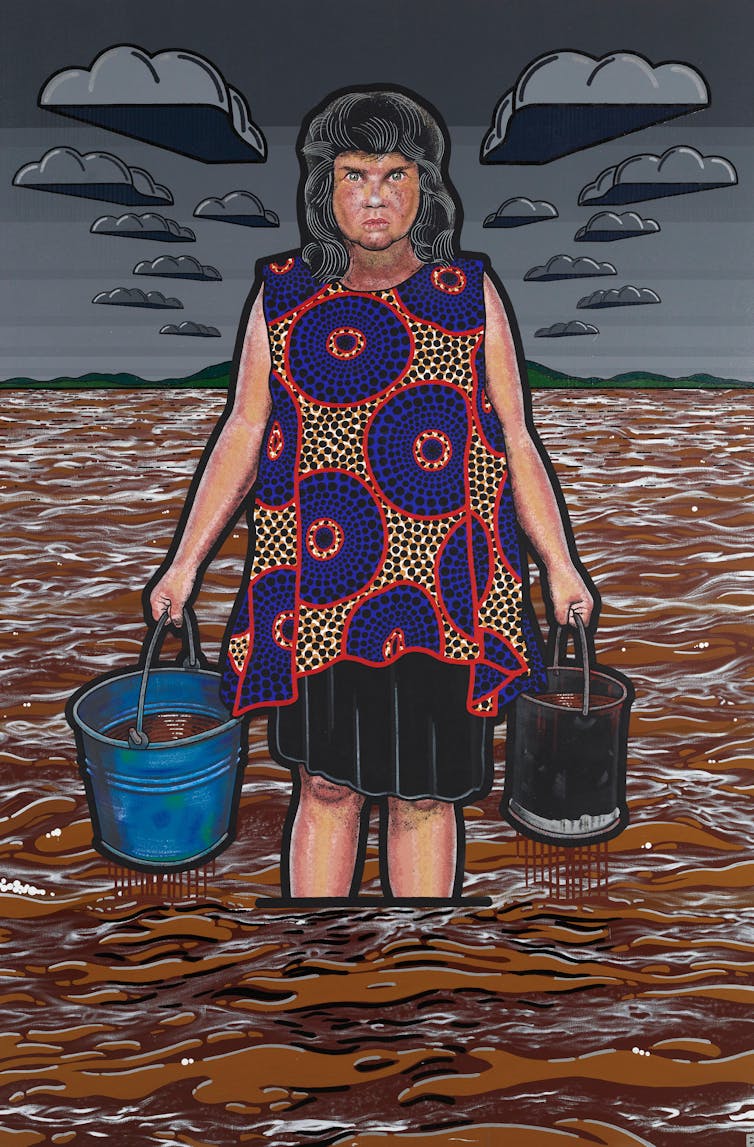
Dickens lives in Lismore, Bundjalung Country. Her justifiable anger at the way she and many others have been neglected sparks out of her eyes. She is painted holding leaky buckets while standing in brown muddy water. The 14 clouds represent the 14 days it rained in the first February flood, while government failed to act.
The floods are the subject of at least two paintings in the Wynne Prize, but this Archibald entry says it all. Douglas encapsulates the rage of a people betrayed by an absent government.
The somewhat pained expression on Saul Griffith’s face in Jude Rae’s The big switch – portrait of Dr Saul Griffith, which hangs to the left of Douglas’ work, may give some context to the anger.
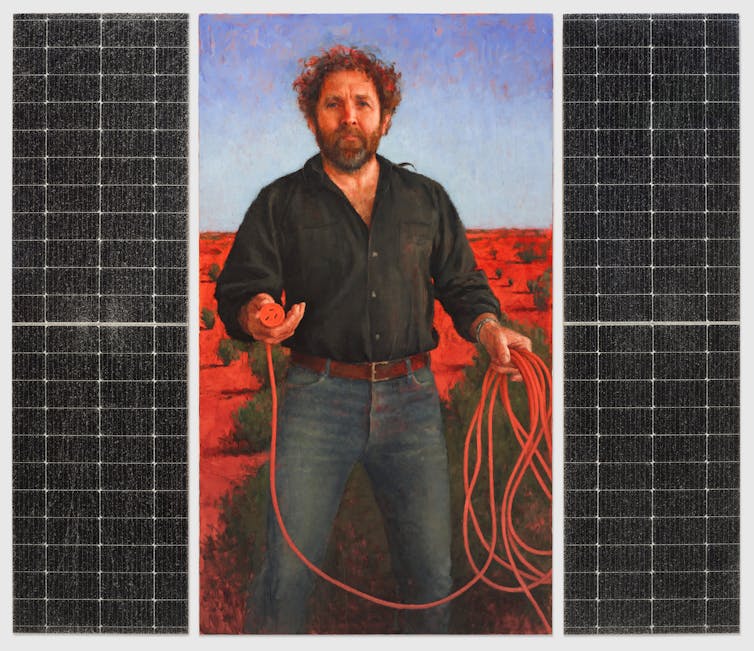
Griffith has created a blueprint for Australia to cut electricity costs via solar power and batteries. Most Federal politicians are less than receptive, preferring to cook the planet with coal and gas.
Griffith was also the subject of a portrait by his mother, Pamela Griffith. There is an unwritten rule in the Archibald that only one painting of any subject will be hung, so this sadly went with the great majority to the rejects.
There are many reasons for righteous anger in this year’s exhibition. Mostafa Azimitabar’s self portrait, KNS088, stares at the viewer, confronting us with the way we as a country have been complicit in a crime against humanity.

For many years he was in detention, on Manus Island and then a hotel. He learnt to paint using coffee and a toothbrush. Both materials are used here.
Joan Ross’ ‘You were my biggest regret’: diary entry 1808, seems by comparison to be relatively mild. But her stylised mock-colonial self portrait is mournfully hugging a tree trunk, symbolising the destruction of the natural world by the colonisers in whose steps we tread.
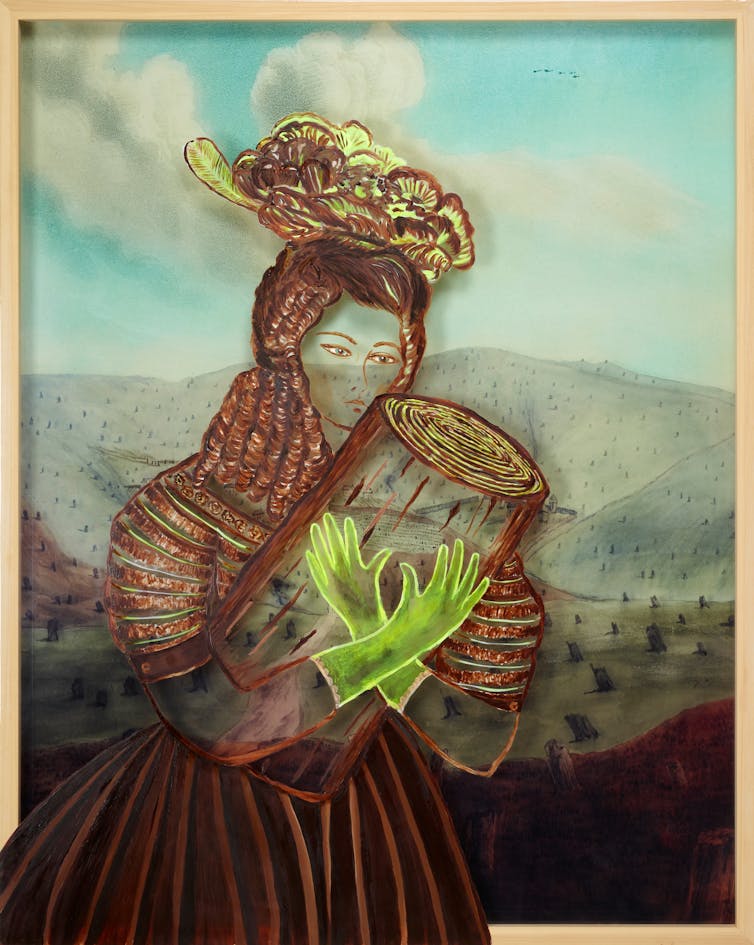
Pleasure In The Craft
The exhibition also celebrates those who fight for causes.
Tsering Hannaford has a painting of the Pitjantjatjara activist Sally Scales, painted in the academic style most commonly found in the hallowed halls of gentlemen’s clubs.
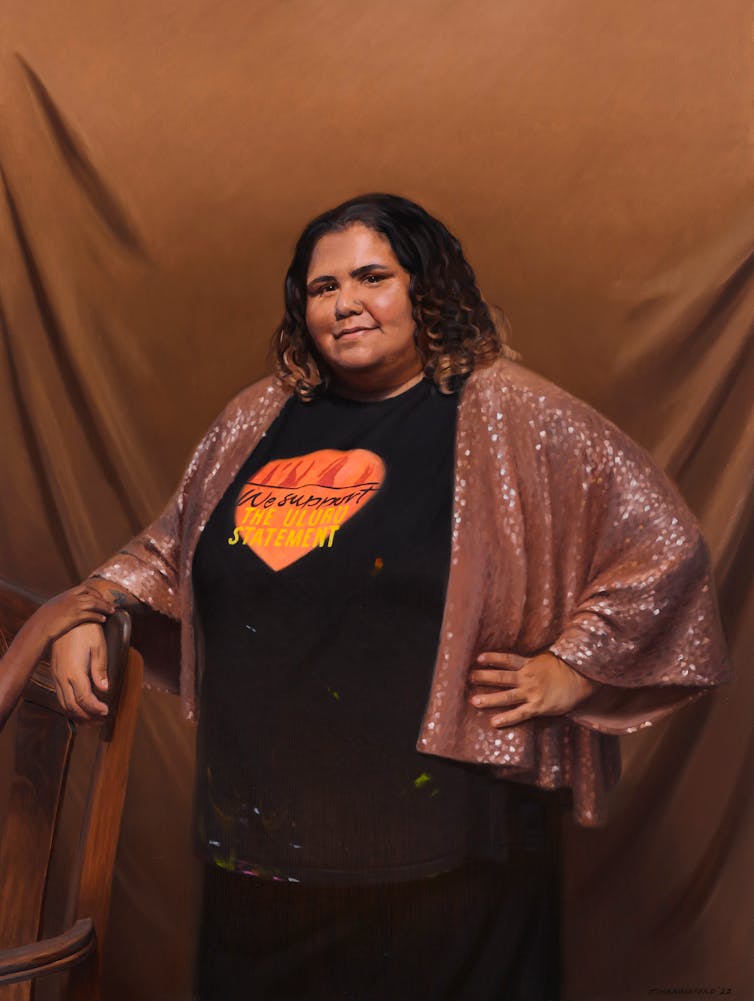
Not all creative activists are treated with such seriousness.
Jordan Richardson’s Venus is a portrait of Benjamin Law as Velázquez’s Rokeby Venus, while Avraham Vofsi’s portrait of John Safran as David and Goliath successfully appropriates the style of 19th century academic art, including the gold frame.

Yoshio Honjo’s portrait of Yumi Stynes as onna-musha (female samurai) is painted in the style of a Japanese woodblock print. It is one of many works where the artist has really considered the sensibility of their subjects.
Easily the most successful of these appropriated styles is Claus Stangl’s “3D” portrait of Taika Waititi, the man who gave the world Hunt for the Wilderpeople and What we do in the shadows before making Marvel movies that are actually worth watching.
It is a very clever painting, using thin layers of paint to create a mock 3D effect, gloriously out of focus, and a very worthy winner of the Packing Room Prize.![]()

Joanna Mendelssohn, Principal Fellow (Hon), Victorian College of the Arts, University of Melbourne. Editor in Chief, Design and Art of Australia Online, The University of Melbourne
This article is republished from The Conversation under a Creative Commons license. Read the original article.
CE’s Corner
Policies For Older People At The 2022 Federal Election
Study Preserves Memory In Mice Offering Promising New Basis For Active Immunization Against Alzheimer's Disease
Nationwide Search For 16-20 Year Old Male Soccer Players For New TV Series
May Is Rotary Youth Service Month

Local Women Named In Australian Gridiron Squad

2022 Australian Surfing Awards - Top 10 Surf Photos Of The Year Announced
Australian surf photography has continued to go from strength to strength in the past twelve months as evident in the epic submissions for the 2022 Surf Photo of The Year Award category.
With a mix of icons and up-and-comers putting their best images forward for judging there was a great variety of land and water based frames for the judges to adjudicate on.
As it is every year, the Surf Photo of The Year Award was hotly contested with the top ten images of an extremely high standard. For the tenth year running the submissions were judged by a panel of thirteen high-profile individuals within the surfing industry.
Chris Mater, CEO, Surfing Australia, said, “ Everyone always looks forward to seeing captivating high quality images as produced in the Surf Photo of The Year Award category each and every year, 2021 being no different. Congratulations to everyone that submitted their work and a special mention to the epic top ten images. Good luck on the night!"
The Australian Surfing Awards is proudly supported by the Queensland Government, through Tourism and Events Queensland, and features on the It’s Live! in Queensland events calendar.
2022 Australian Surf Photo of The Year Top Ten (In no particular order)
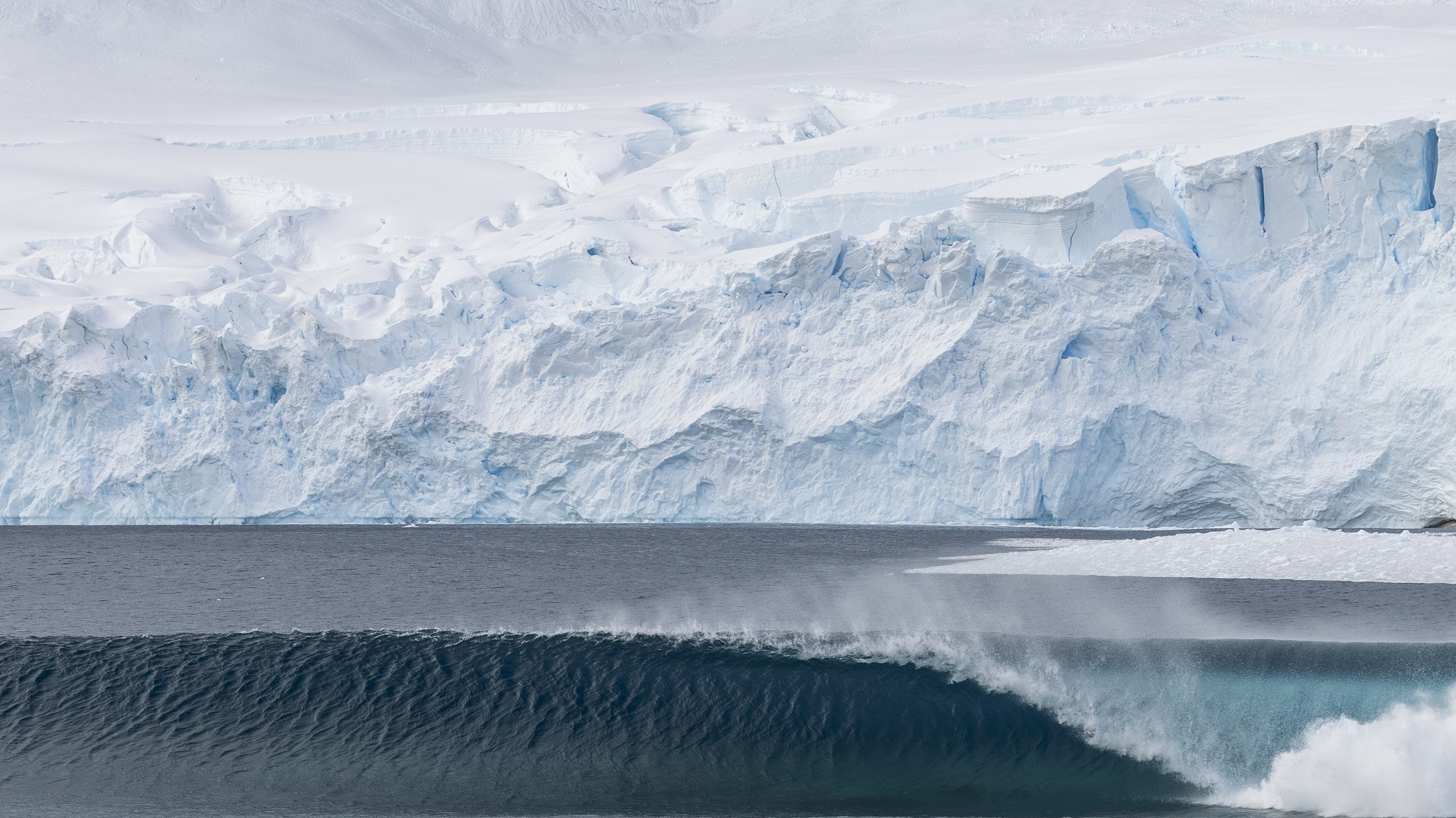
Andrew Peacock 'Unridden Antarctica'
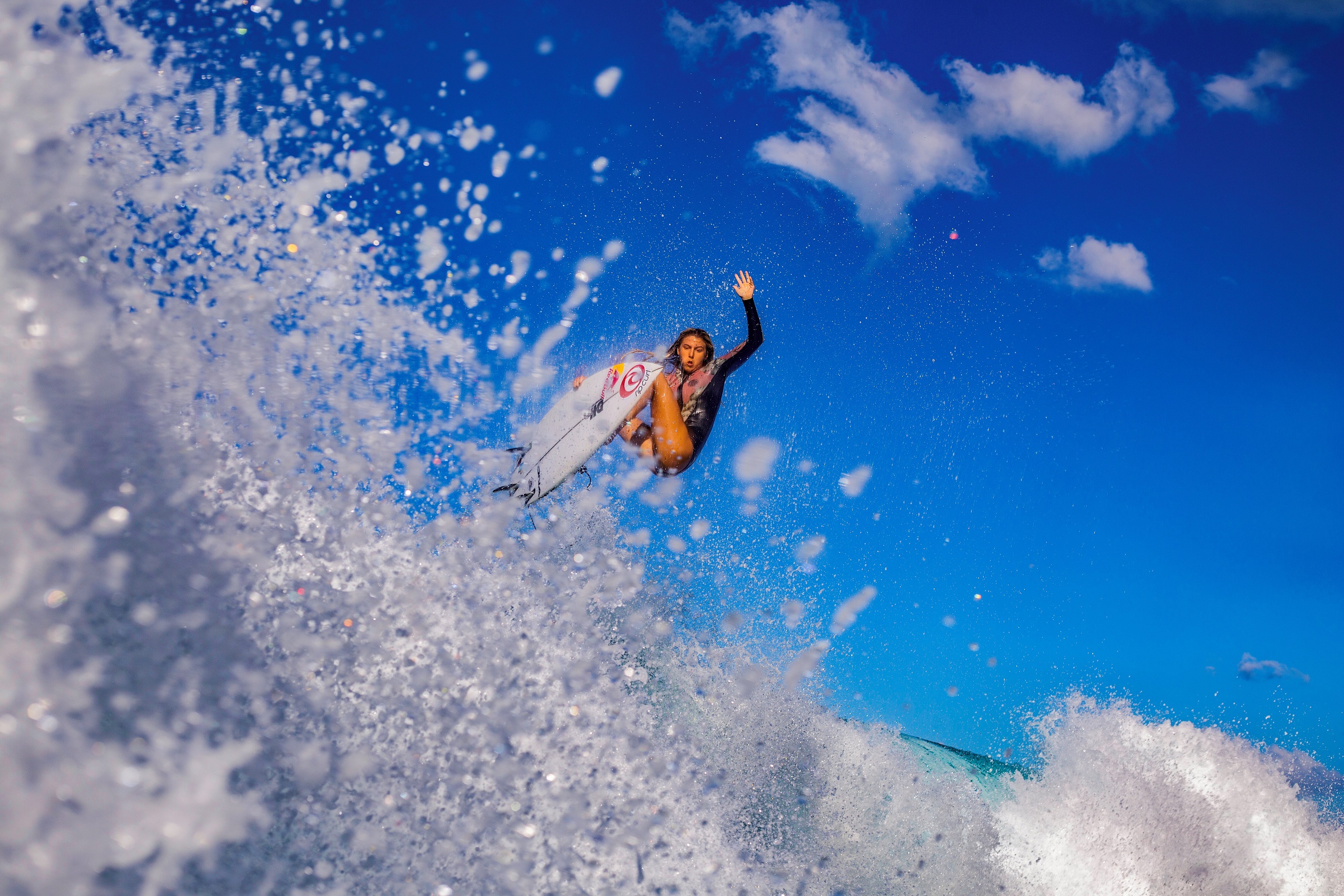
Trav Don Johnson 'Molly in Flight'
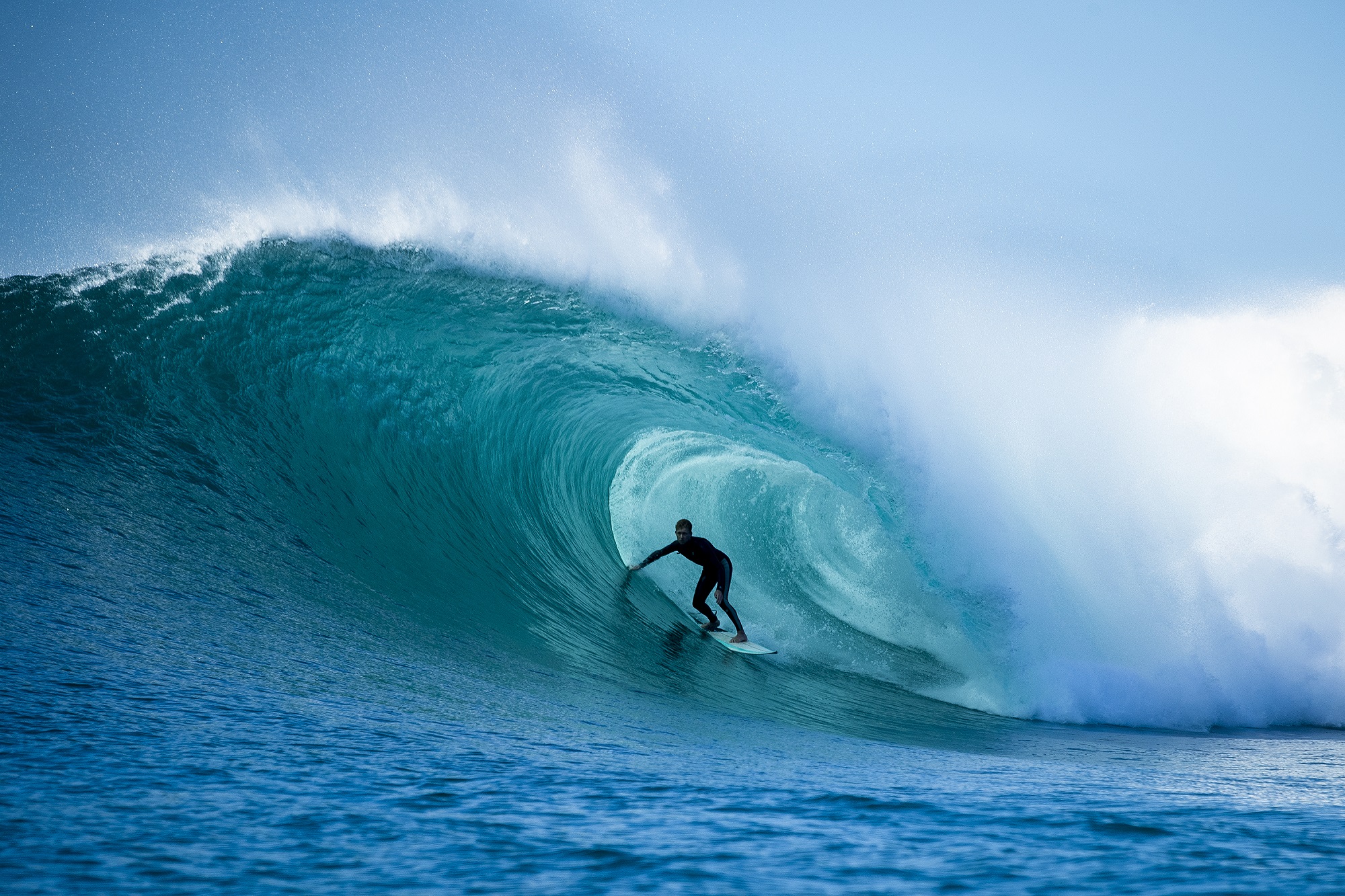
Nathan Tyack 'Clancy Dawson'
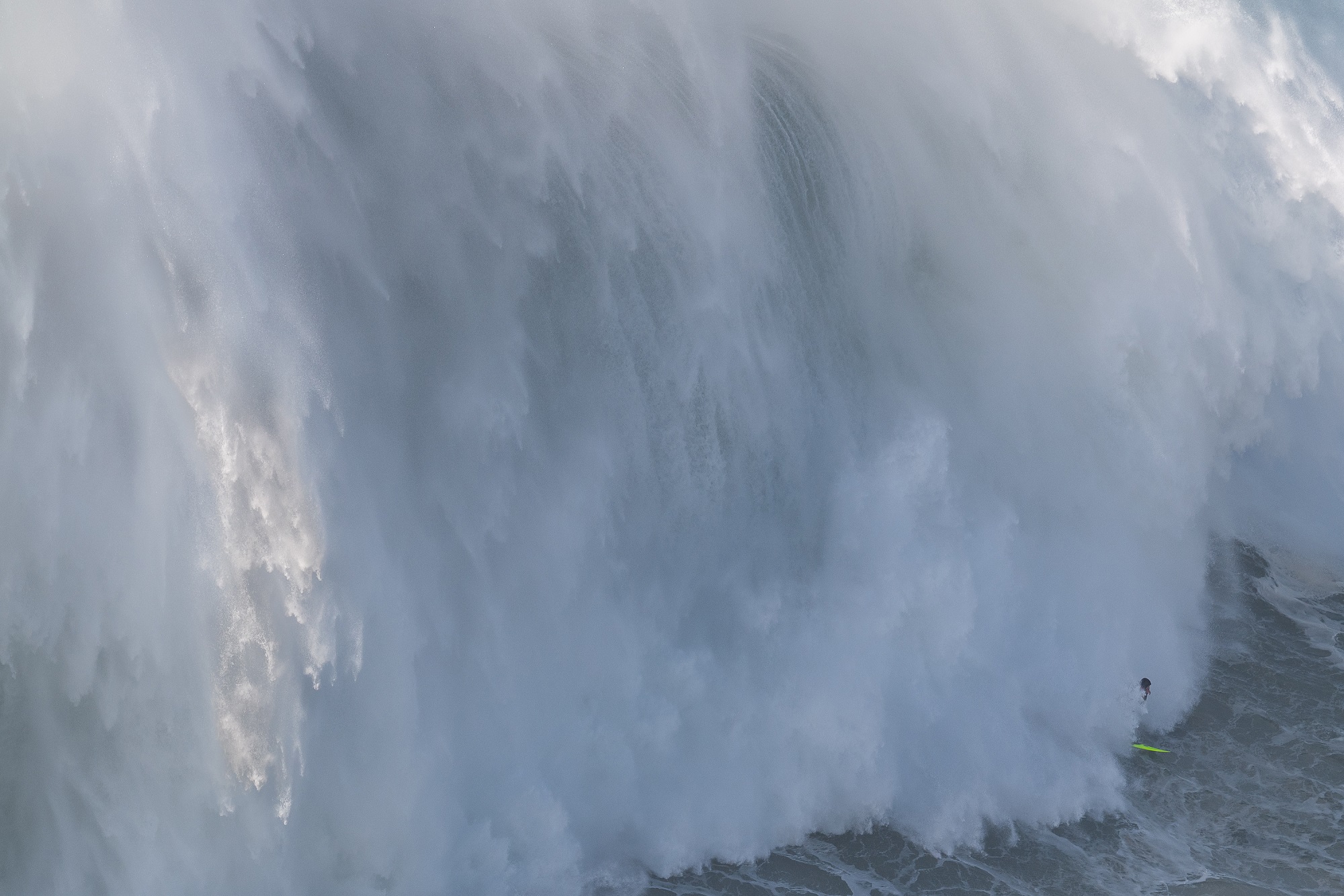
Ted Grambeau 'Maya Gaberia'
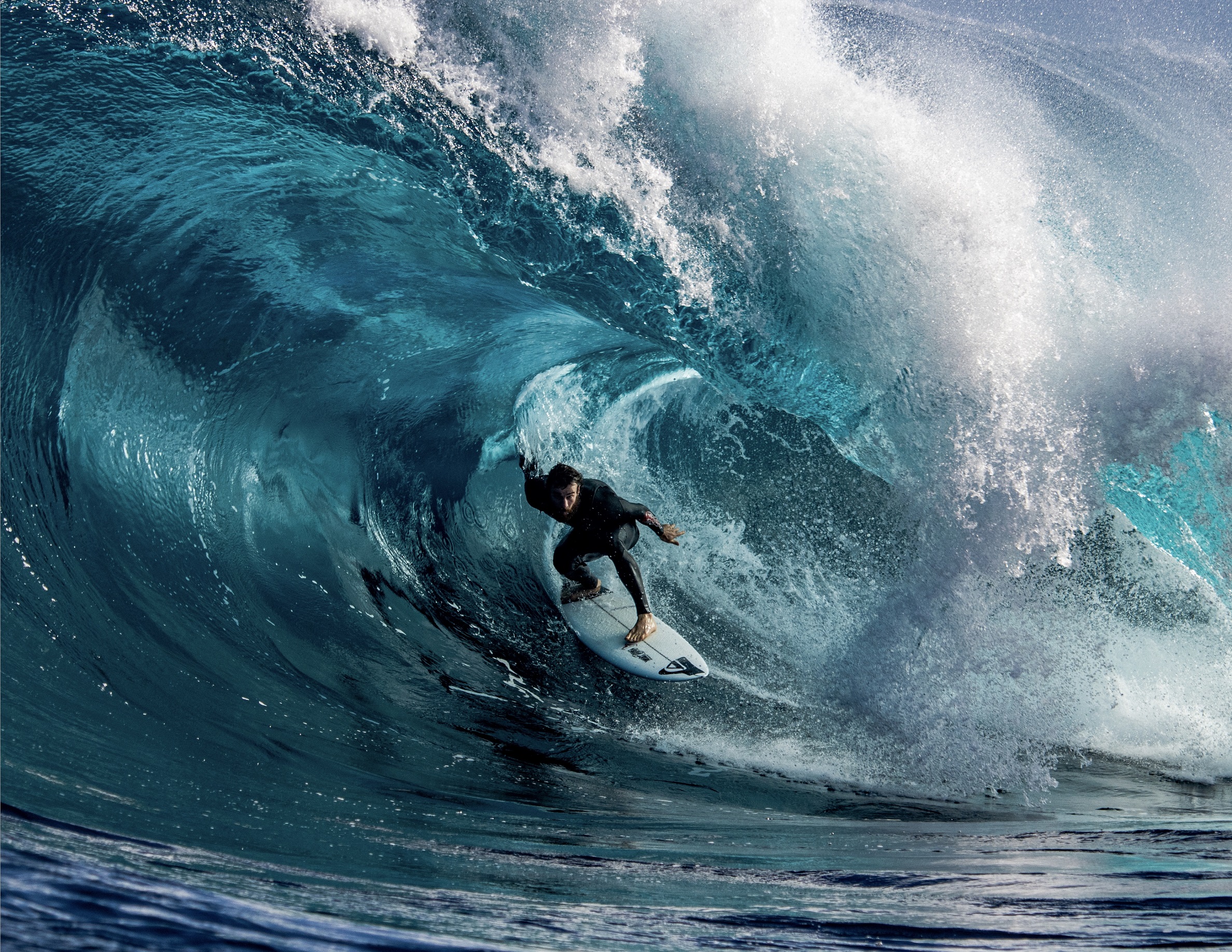
Adam Crane 'Mikey Wright'
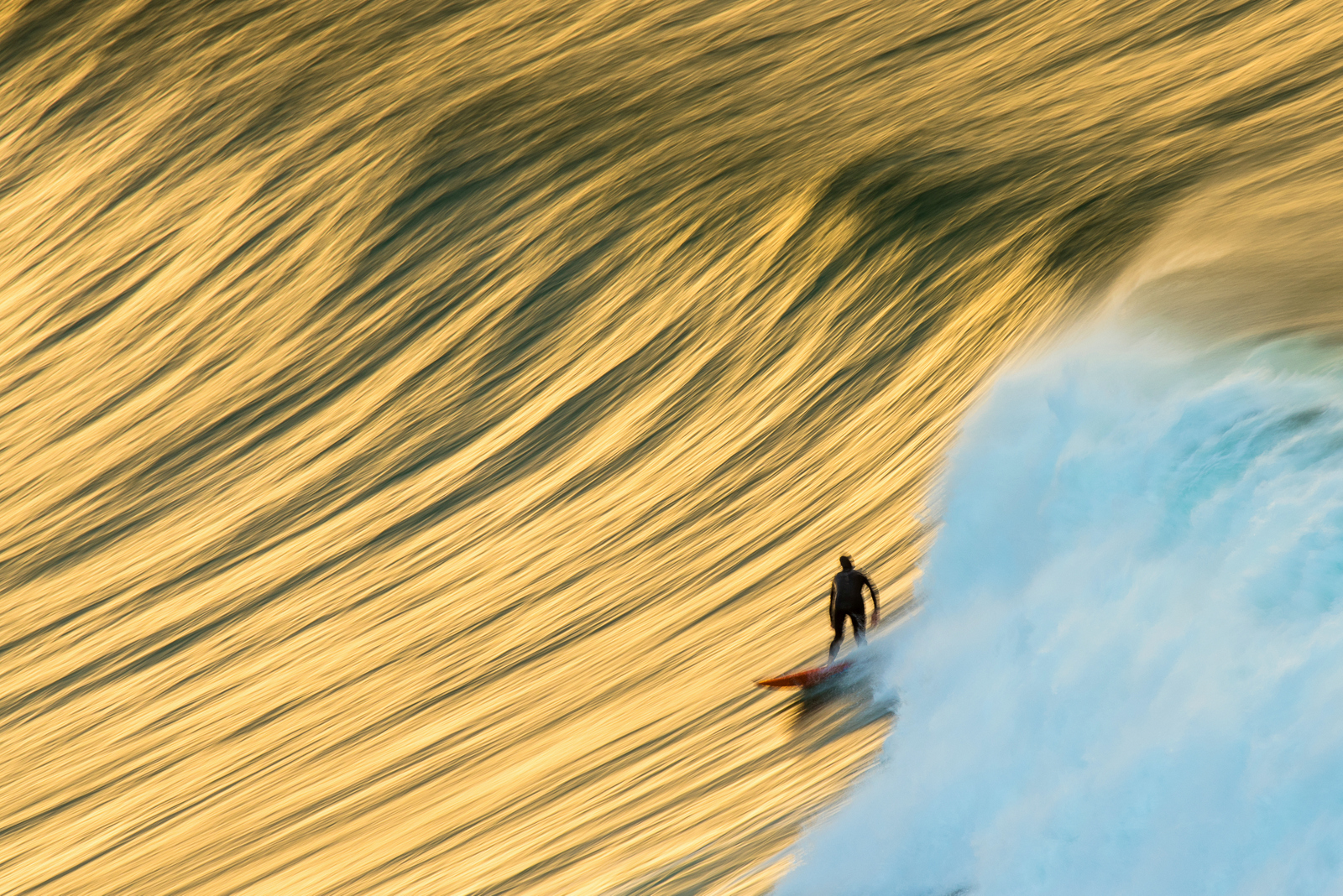
Peter Jovic 'Slide Into The Gold'

Trav Don Johnson 'In A Phone Booth'
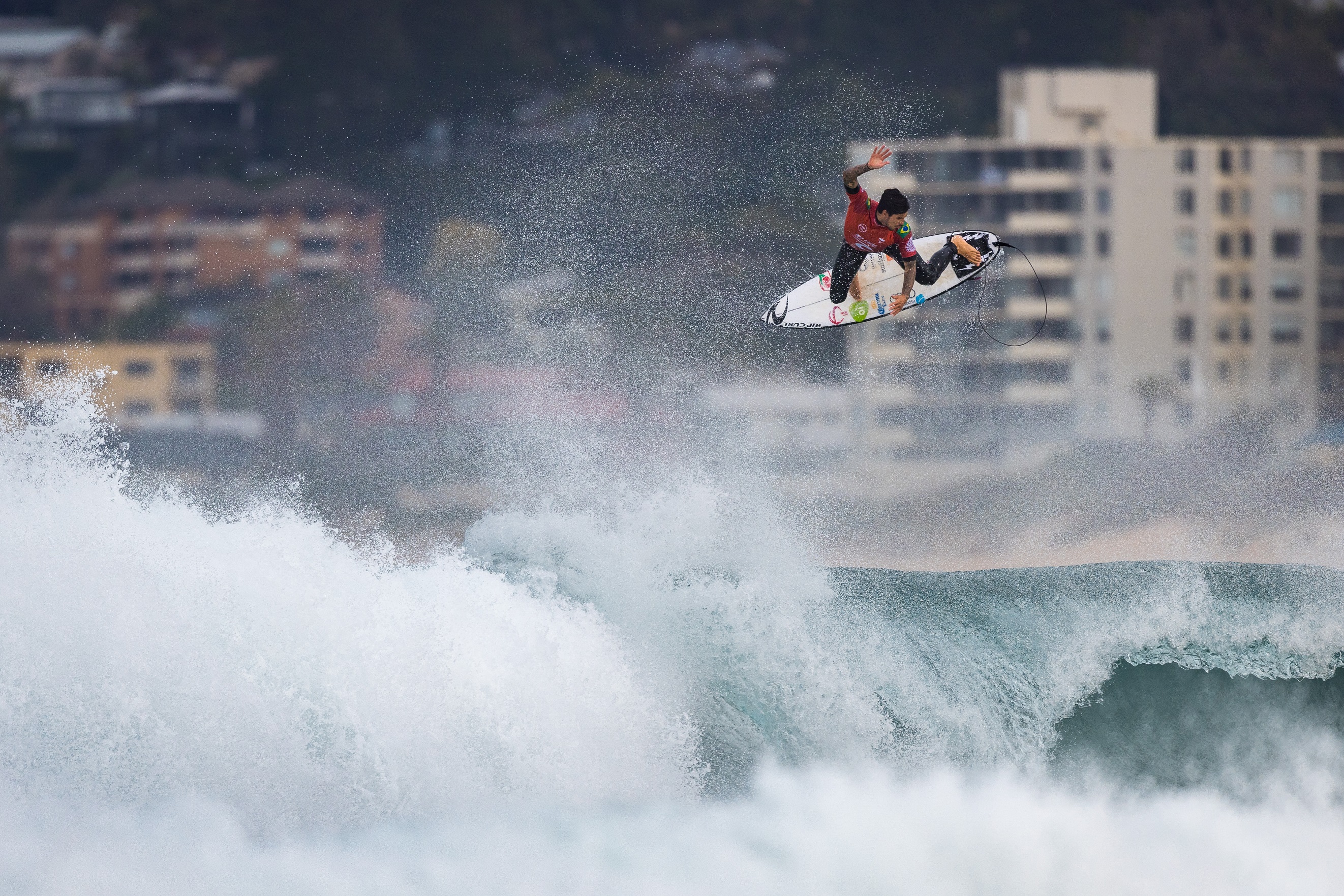
Dan Hayward 'Super Medina'

Jack O'Grady 'Jacob Willcox One Last Pump'
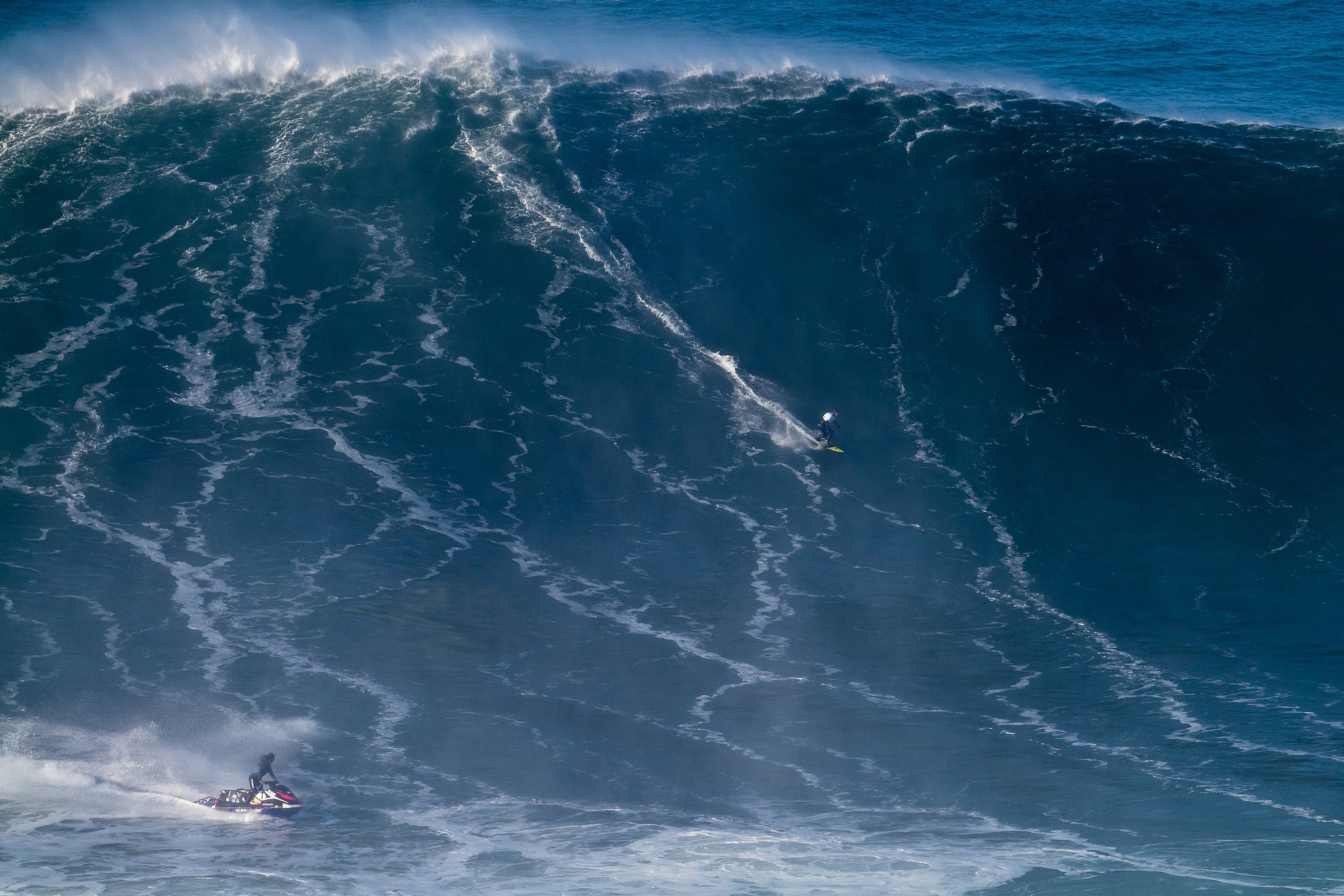
Ted Grambeau 'Nic Von Rupp'
World-renowned Surf Journalist Nick Carroll continues in the role of Curator of the Australian Surfing Awards incorporating the Hall of Fame.
The Australian Surfing Awards incorporating the Hall of Fame is proudly supported by Tourism and Events Queensland, QT Gold Coast, Griffith University, Reeftip Drinks Co, Zambrero, ACCIONA, Modus Operandi, Andrew Peace Wines and OnStone.
Eta Aquariid Meteor Shower Is Set To Light Up Our Skies
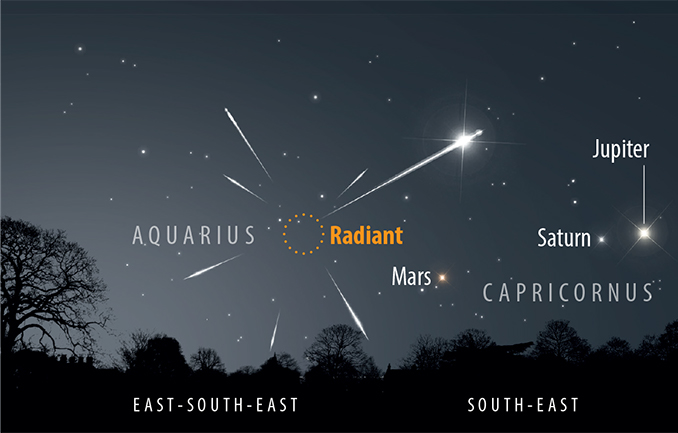
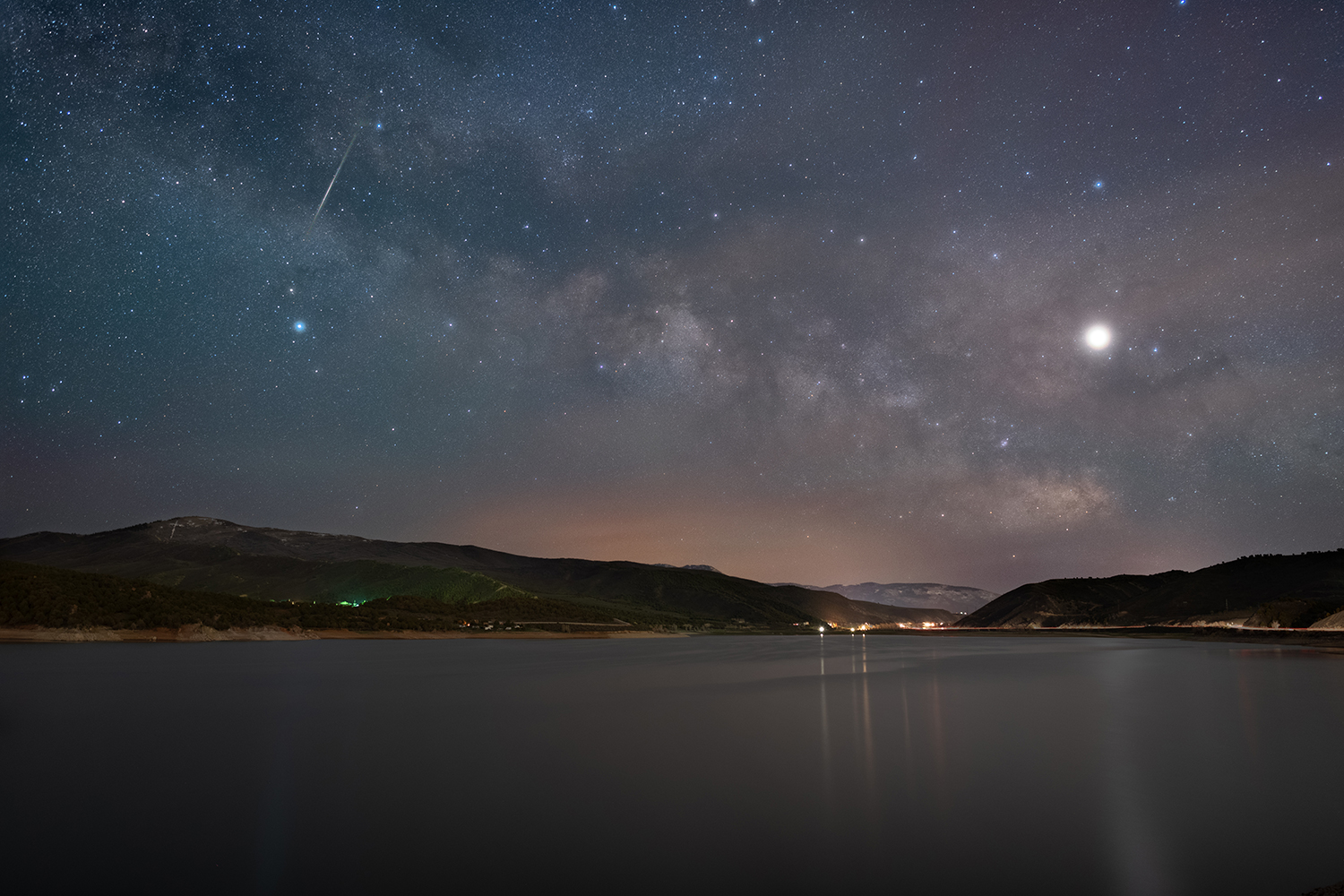
HSC Exam Timetable Released
Up Close With Gang-Gang Cockatoo Feeding On Conesticks – Blue Mountains
Young Writers’ Competition 2022
Young people across the Northern Beaches are encouraged to enter this year’s Young Writers’ Competition for their chance to be published.
Now in its 13th year, the annual competition is open to students from kindergarten to grade 12 who live or go to school on the Northern Beaches. The theme of this year’s competition is ‘rise’.
“The Northern Beaches is home to some very talented young writers, and I continue to be blown away by the creativity and skill of entrants in our annual Young Writers’ Competition,” Mayor Michael Regan said.
“It’s time for young writers to once again rise and shine and show us what they’ve got. More than 500 stories were submitted in last year’s competition, and we suspect this year will be just as competitive.”
Entrants can write on any topic or theme but must include a derivation of the word ‘rise’. Entries will be grouped by age and judged according to characterisation, originality, plot, and language.
Four finalists will be chosen in each age category and invited to a presentation night on Wednesday 10 August, where a winner, runner-up, and two highly commended prizes are awarded.
Finalists from each category will have their stories published in an eBook which is added to the Northern Beaches Council Library collection.
Entries close Tuesday 31 May 2022. Entrants must be members of the Northern Beaches Council Library Service.
Complete the online entry form and attach your story as a Word document. If your story is hand-written, then a clear, readable photo or scanned PDF can be submitted.
Not a member of the library? Don't worry, Council will use this form to create a membership for you. Just mark 'no' under the library member field in the online form. If you are a member and unsure of your library card number, just mark 'yes' in the library member field in the online form and Council will find your library membership number.
Entries are judged according to characterisation, originality, plot and use of language and arranged into six different age group categories.
Four finalists are chosen in each age category and invited to a presentation night where a winner, runner-up and two highly commended prizes are awarded. Finalists from each category will have their stories published in an eBook that will be added to Council's collection.
For more information visit Council's library.
Word Of The Week: Meliorist
“Common to all variants of the liberal tradition is a definite conception, distinctively modern in character, of man and society. What are the elements of this conception? It is individualist, in that it asserts the moral primacy of the person against the claims of any social collectivity: egalitarian, inasmuch as it confers on all men the same moral status and denies the relevance to legal or political order of differences in moral worth among human beings; universalist, affirming the moral unity of the human species and according a secondary importance to specific historic associations and cultural forms; and meliorist in its affirmation of the corrigibility and improvability of all social institutions and political arrangements. It is this conception of man and society which gives liberalism a definite identity which transcends its vast internal variety and complexity.” (Gray 1995:xii, author‟s own emphases).
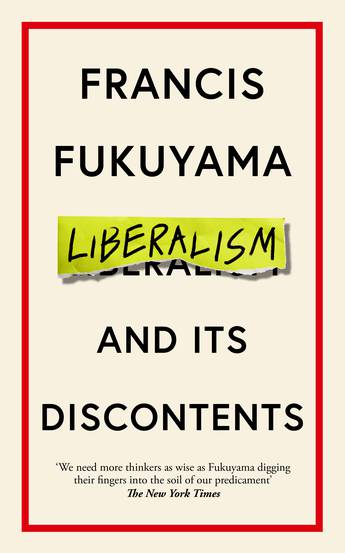 Getting a copy of Yoshihiro Francis Fukuyama's 'Liberalism and its Discontents' - published this month (May 2022), also provides some great definitions and context. The 'blurb' for this does not do it credit, nevertheless:
Getting a copy of Yoshihiro Francis Fukuyama's 'Liberalism and its Discontents' - published this month (May 2022), also provides some great definitions and context. The 'blurb' for this does not do it credit, nevertheless:''A defence of liberalism by the renowned political philosopher.Liberalism - the comparatively mild-mannered sibling to the more ardent camps of nationalism and socialism - has never been so divisive as today. From Putin's populism, the Trump administration and autocratic rulers in democracies the world over, it has both thrived and failed under identity politics, authoritarianism, social media and a weakened free press the world over.Since its inception following the post-Reformation wars, liberalism has come under attack from conservatives and progressives alike, and today is dismissed by many as an 'obsolete doctrine'. In this brilliant and concise exposition, Francis Fukuyama sets out the cases for and against its classical premises: observing the rule of law, independence of judges, means over ends, and most of all, tolerance.Pithy, to the point, and ever pertinent, this is political dissection at its very best.''
''The final decision is expected shortly.If it follows the arguments laid out in this extraordinary leaked draft, the stench of politics, as Justice Sotomayor predicted, will cling to the Supreme Court and calls for its reformation will surely grow stronger.''
Marvin Gaye - What's Going On
Creedence Clearwater Revival - Fortunate Son
Helen Reddy - I Am Woman (1971)
Sting - Englishman In New York
Bob Marley - Get Up, Stand Up (Live At Munich, 1980)
Plenty of resilience, but little resistance in a new account of Australia’s Great Depression

In her latest book, Australia’s Great Depression, Joan Beaumont offers a deeply conservative history animated by the neoliberal spirit of our age.
In many ways a sequel to Broken Nation: Australians in the Great War (2014), Beaumont’s continuing national saga tells the story of a “resilient nation”, a people whose personal values of “stoicism, independence, self-reliance and personal responsibility” defined their response to the worst economic crisis of the 20th century.
Review: Australia’s Great Depression – Joan Beaumont (Allen & Unwin).
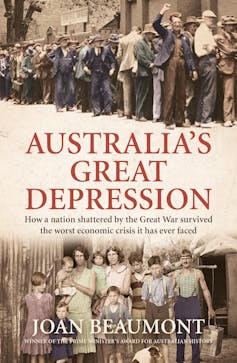
Although more than a third of workers were unemployed by 1932 and many more were immiserated, although thousands of businesses were bankrupted, homes were lost and families separated, the “narrative of disaster that has dominated popular memory” needs to be “complemented”, in Beaumont’s view, by attention to people’s “capacity for resilience”.
The architects of Jobseeker might find reassurance here. The theory of “resilience” – originally a concept developed in biological sciences, borrowed by psychologists, and since critiqued as “embedded neoliberalism” – provides Beaumont’s book with its conceptual framework and historical narrative. Australia’s Great Depression tells the story of the impact of global economic forces on hapless communities and individuals. “Their endurance and survival,” Beaumont writes, “provide one of the most impressive narratives of resilience in the nation’s history.”
The “agency” displayed by community organisations also characterised the “strategies of self-help” adopted by families – with “the tireless maternal figure at the core”. Noting that “starvation did not stalk the streets of Depression Australia”, Beaumont draws heavily on David Potts’ earlier controversial history The Myth of the Great Depression (2006) concerning the “positive culture of poverty” to conclude that people “knew how to value simpler things”.
Political Mobilisations
Beaumont is interested in family and community survival strategies, but not so much in political mobilisations animated by visions of radical change. She provides a detailed account of party politics – the warring of factions and toppling of leaders, from the 1920s into the 1930s, at state and federal levels – but the visions of a different world that sustained Aboriginal, feminist and labour movements and led to real changes in social policy are marginal to this history.
Indeed, “women”, the homeless, men forced “on the track”, Aborigines and migrants are all lumped into one section called “On the Margins” – part eight of a very long ten-part book. But as historians since E.H. Carr, at least, have pointed out, historical subjects only become “marginal” – or invisible – when historians make them so.
Beaumont’s lack of interest in feminist political mobilisation in response to the experience of the Great Depression is especially puzzling. The 1930s saw an upsurge in women’s political activism and a transformational shift away from earlier forms of maternalist politics towards a demand for equal pay and opportunity.
The oppressive experience of motherhood during the Depression, which led to an increase in abortions and maternal mortality and a decline in the birthrate – together with the relentless attacks on women in paid work – led to new demands for women’s economic equality.
“Women’s right to work,” proclaimed Victoria’s Equal Status Committee in 1935,
rests not on the number of her dependants, nor on the fact that she does or does not compete with men, but in the absolute right of a free human being, a taxpayer and a voter to economic independence.
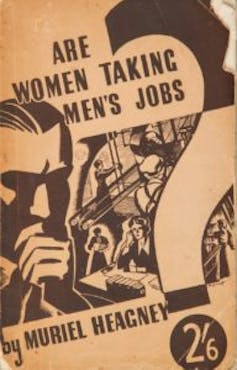
A key figure in this transition was the great labour feminist Muriel Heagney, whose influential book Are Women Taking Men’s Jobs? (1935) shaped the resurgence of the equal pay campaign in the 1930s and the formation of the Council of Action for Equal Pay in 1937. In the 565 pages of Australia’s Great Depression, Heagney barely rates a mention, and then only in the context of community relief funds.
Other key feminist figures are simply absent. Founder of the leading organisation the United Associations of Women (UA) Jessie Street, prominent broadcaster Linda Littlejohn, birth-control advocate Ruby Rich, fierce Aboriginal rights campaigner Mary Bennett, and the five UA candidates who stood in the New South Wales 1932 election are all missing from this history.
Similarly, Aboriginal activists Pearl Gibbs and Margaret Tucker are nowhere to be found, not even “on the margins” or at the Day of Mourning in Sydney in 1938, which they helped organise alongside the men.
Demands for radical change by angry women don’t fit so easily into narrative frameworks of endurance and stoicism. In Beaumont’s history, the story of resilience trumps the power of resistance.
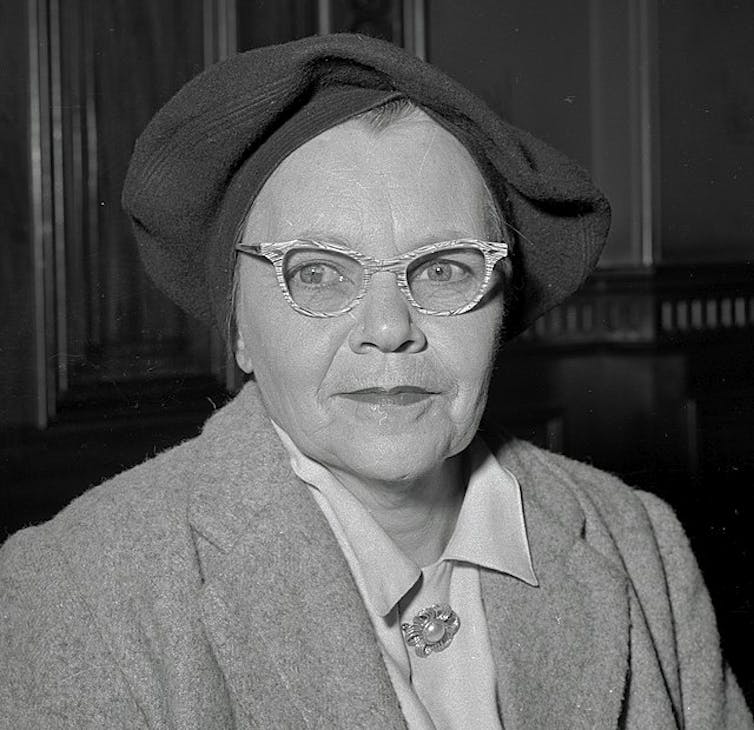
A Transnational Economic History
Global economic forces and the legacy of World War I shape Australia’s Great Depression. Beaumont’s strength is in economic history. Her account of the causes and duration of the Depression is based on wide reading. It is a marvel of synthesis, rendered more accessible by an extensive “Glossary of Terms” (53 in all, including “Bretton Woods”, “gold standard” and “loan conversion”).
It is something of an irony however that, for all Beaumont’s insistence that hers is a “national history”, its important dynamics are transnational. Indeed, the book might have been subtitled “A Transnational History”.
Part One deals with the effects of the Great War:
In every sense … the experience of the war framed the way that Australians understood and endured the later economic crisis.
Generous repatriation benefits – including the vast scheme of soldier settlement – added substantially to Australia’s burden of war debt. The promotion of the Anzac legend
served the function so critical to societal and personal resilience of investing the huge losses of World War I … with meaning.
Yet the paean to masculine heroism could also serve to intensify men’s sense of betrayal and humiliation when the promises failed, as the letters of bitter soldier settlers eloquently attested.
Part Two of Australia’s Great Depression covers the 1920s and details the economic and political effects of the dramatic fall in international commodity prices and Australia’s fate as a “voracious borrower” on British and US financial markets. It also introduces the key figure of English banker Otto Niemeyer, “who had the power to dictate a bitter deflationary medicine”. Beaumont quotes Niemeyer on Australia’s irresponsibility, tellingly casting the nation as female and in need of chastisement:
As Australia has borrowed abroad something like £200,000,000 since the date of the war loans, and has always represented her prospects and conditions in glowing terms on those occasions, it is quite ridiculous of her to suggest there is any reason why she should not pay a pittance for her prior war debts. This is an odd country full of odd people and even odder theories.
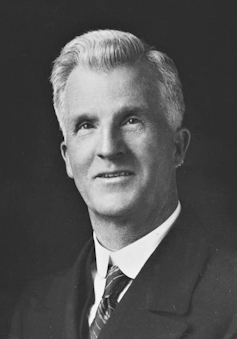
It was Labor Prime Minister James Scullin’s bad luck to come to office in 1929 as the New York Stock Exchange crashed, presaging “the implosion of the international economic order on which Australian recovery depended”.
Niemeyer arrived in mid-1930 convinced that bitter medicine needed to be administered. He was certain that a profligate country was living beyond its means. He met with Scullin, whom he regarded as “a very decent little man” but out of his depth. He also met with the commonwealth and state treasurers.
The subsequent Melbourne Agreement enshrined his recommendations, but led to immediate political division and bitter acrimony. Labor and non-Labor states differed in their responses. In New South Wales, Labor’s Jack Lang, promised to defend the standard of living, guarantee wheat prices and fund public works. He triumphed in the state election in October 1930, but two years later he was gone, dismissed by Governor Philip Game.
Humiliation
The year 1930 saw a peak in male suicides. Unemployment peaked in 1932. Men seemed to suffer more than women: “the men seemed to sag … They looked more beaten than the women”, observed one contemporary.
Though masculine “humiliation” is a constant theme of Beaumont’s story – and her photograph captions – the construct of “masculinity” is notably absent from her analysis and the index. This is in sharp contrast with the histories of the Depression by the late Stuart Macintyre, for example, for whom “gender” and “labour” were key dynamics.
Arguably, masculine humiliation was more likely to lead to demands for political change, rather than reconciliation to the status quo. Indeed “masculinism”, one correspondent argued in the Sydney Morning Herald, would be Australia’s “only salvation”. Under “feminism’s shameless banner”, he proclaimed, women were stealing men’s jobs.
Beaumont attributes some of the “protest and grievance” to what she – ever the academic historian – calls “grant envy”. Complaints also focussed on the filthy camps, the appalling conditions in which men were expected to travel and undertake “relief work”, and the introduction of work for the dole. “Slave Labour for Coolie Wages” was denounced by the Communist-led Unemployed Workers’ Movement, which organised many of the protests, including against evictions.
The main value of the men’s protest was, according to Beaumont, that it gave them a sense of “agency and a voice”. Their resilience meant that they still had the ability to fight and organise.
But insisting on the story of resilience, Beaumont misses the larger significance and consequence of men’s political mobilisations. The degradation of men’s unemployment and casual labour, of “susso” and the indignity of charity handouts, fuelled visions of a new kind of welfare state for men, that would enshrine full employment as the number one public policy goal, underpinned by the introduction of a federal unemployment benefit, conceived as a citizen’s right, free of shame or stigma.
As Macintyre noted, post-war reconstruction was in fact “post-Depression reconstruction”. In the words of Minister J.J. Dedman:
To the worker, it means steady employment, the opportunity to change his employment if he wishes, and a secure prospect unmarred by the fear of idleness and the dole.
Women imagined a new life freed from the burdens of excessive child bearing and the degradation of dependence. “I populated and I perished,” recalled one survivor of the Depression. Women dreaded the birth of more children. Fear of pregnancy deepened family discord. Children became unhappy witnesses of their parents’ misery. Many daughters determined never to follow in their mothers’ footsteps. Young women sought out birth control.
“I admit to being selfish,” said one, “but there are no medals given out for unselfishness.”
The Council of Action for Equal Pay was formed in 1937. Women would first benefit from equal rates during World War II, when the Women’s Employment Board regulated the pay and conditions of women workers who entered men’s jobs. By the end of that decade, following submissions from women’s organisations, the Arbitration Court lifted the female rate from half the men’s rate – as prescribed by Justice Higgins in the Rural Workers case of 1912 – to 75% of the basic male rate.
In her Epilogue, Beaumont returns to her argument about national resilience. Democracy survived; there was no revolution. People
accommodated the humiliation of unemployment, the reduction in their standard of living.
But when we look closely, we can see that new visions of freedom were born in the experience of degradation and the knowledge of fear. In Depression dreaming, there was a new day dawning.![]()
Marilyn Lake, Professorial Fellow in History, The University of Melbourne
This article is republished from The Conversation under a Creative Commons license. Read the original article.
‘This black smoke rolling through the mulga’: almost 70 years on, it’s time to remember the atomic tests at Emu Field
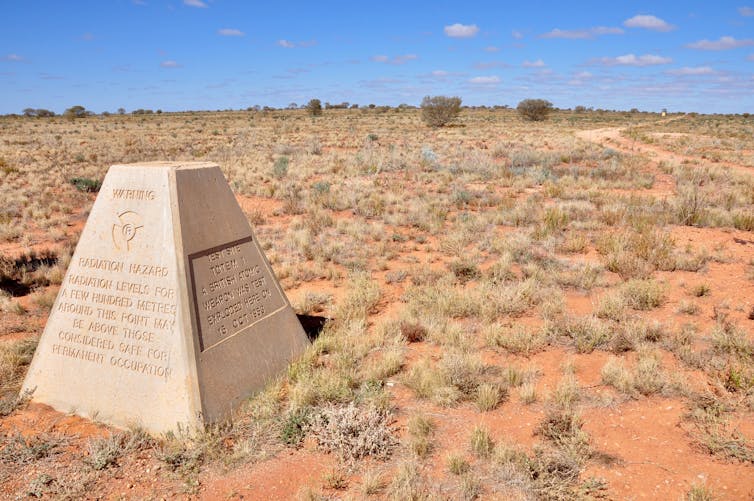
The name Emu Field does not have the same resonance as Maralinga in Australian history. It is usually a footnote to the much larger atomic test site in South Australia. However, the weapons testing that took place in October 1953 at Emu Field, part of SA’s Woomera Prohibited Area, was at least as damaging as what came three years later at Maralinga.
The Emu Field tests, known as Operation Totem, were an uncontrolled experiment on human populations unleashing a particularly mysterious and dangerous phenomenon – known as “black mist” – which is still being debated.
Operation Totem involved two “mushroom cloud” tests, held 12 days apart, which sought to compare the differences in performance between varying proportions of isotopes of plutonium. The tests were not safe, despite assurances given at the time.
Between 1952 and 1957, Britain used three Australian sites to test 12 “mushroom cloud” bombs: the uninhabited Monte Bello Islands off the Western Australian coast and the two South Australian sites. (An associated program of tests of various weapons components and safety measures continued at Maralinga until 1963.)
The British government, with loyal but uncomprehending support from Australia under Liberal prime minister Robert Menzies, proceeded despite incomplete knowledge of atomic weapons effects or the sites’ meteorological and geographical conditions.
A Claypan
Emu Field was chosen because of its straight, flat claypan. This natural feature drew the attention of the larrikin surveyor of outback Australia, Len Beadell, who had been charged by the Australian Department of Supply with finding a suitable site for atomic weapons tests.
Beadell ascertained that aircraft could land on the claypan, essential for a terrestrial atomic test site. What he didn’t take into account was that this claypan was in the middle of Aṉangu lands. Aboriginal people lived all around it, on stations and settlements.
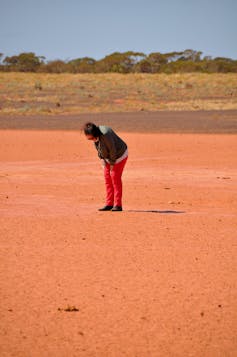
The first British atomic test, Operation Hurricane, held in 1952, was a maritime test of a 25 kiloton atomic device detonated below the waterline in a ship anchored off part of the Monte Bello Islands.
Operation Totem was designed to test two much smaller devices – 9.1 and 7.1 kilotons respectively – by detonating them on steel towers in the desert.
At the time, Britain was in the process of commissioning a new reactor at Calder Hall in Cumbria (designed to make plutonium for both military and civilian uses) that would produce nuclear fuel containing more plutonium-240 than a previous reactor.
Totem was intended to test “austerity” weapons made from nuclear fuel eked out of this reactor. (Plutonium-240 can potentially make nuclear weapons unstable, in contrast to the fuel of choice for fission weapons, plutonium-239, which is more controllable.)
Totem was a “comparative” test. Its innermost technicalities are still kept secret by the British government.
A Greasy Black Mist
The two tests at Emu Field were fired at 7am, on 15 October and 27 October.
The first test, Totem I, produced a mysterious, greasy “black mist” that rolled over Aboriginal communities around Wallatinna and Mintabie, 170 kilometres to the northeast of Emu Field. The black mist directly harmed Aṉangu people. Because no data was collected at the time, it is impossible to quantify precisely, however, the anecdotal evidence suggests death and sickness occured.
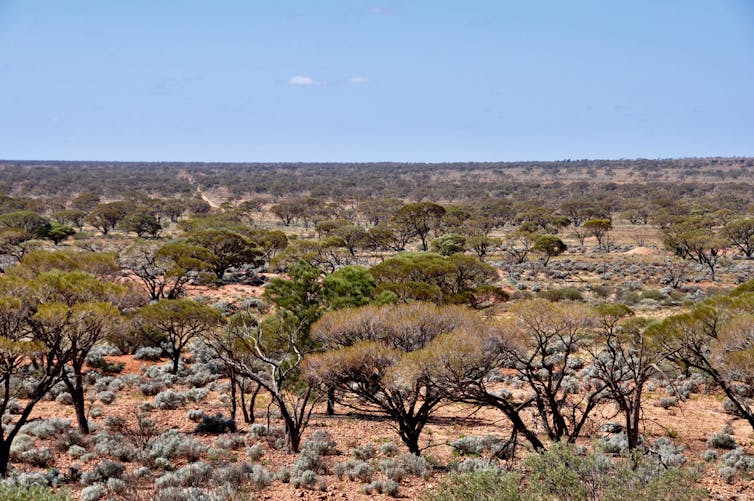
The British meteorologist, Ray Acaster, gave an account of the phenomenon, and its possible causes, in 2002:
The Black Mist was a process of mist or fog formation at or near the ground at various distances from the explosion point … Radioactive particles from the unusually high concentration in the explosion cloud falling into the mist or fog contributed to the condensation process … The radioactive particles in the mist or fog became moist and deposited as a black, sticky, and radioactive dust, particularly dangerous if taken into the body by ingestion or breathing.
The black mist was an horrific experience for all in its path. Survivors gathered at Wallatinna and Marla Bore in 1985 testified to the Royal Commission into the British Atomic Tests in Australia on its effect on individuals and communities.
Among those who testified was Lallie Lennon, who lived at Mintabie with her husband and children in 1953. After breakfast on 15 October they heard a deep rumble, followed by weird smoke that smelt of gunpowder and stuck to the trees. Lallie, her children and the others with her all got sick with diarrhoea, flu-like symptoms, rashes and sore eyes. Lallie’s skin problems were so severe, it looked like she had rolled in fire.
Another witness, the later tireless advocate for the survivors of the British atomic tests, Yami Lester, was a child at the time of Totem and lost his vision after the tests.
He recalled his experiences in testimony to the royal commission, and elsewhere. Interviewed by two London Observer journalists in a story republished in the Bulletin under the title “Forgotten victims of the ‘rolling black mist’”, he said:
I looked up south and saw this black smoke rolling through the mulga. It just came at us through the trees like a big, black mist. The old people started shouting ‘It’s a mamu’ (an evil spirit) … they dug holes in the sand dune and said ‘Get in here, you kids’. We got in and it rolled over and around us and went away.
Contaminated Planes
The second test, Totem II, took place on October 27 in completely different meteorological conditions and did not produce a black mist. Its cloud rose quickly into the atmosphere and broke up soon after. However, radioactivity from both Totem I and Totem II travelled east across the continent, crossing the coast near Townsville.
Air force crews from both Britain and Australia flew into the atomic clouds. A British Canberra aircraft with three crew aboard entered the Totem I cloud just six minutes after detonation, far earlier than any of the other cloud sampling aircraft.
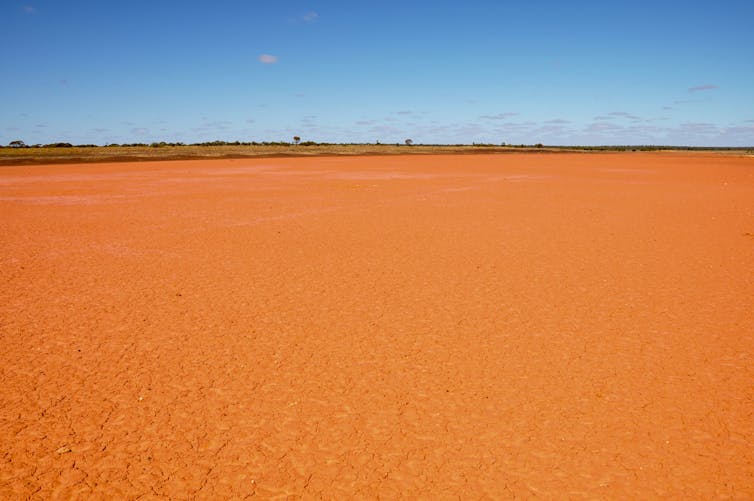
For a brief period the radioactivity to which they were exposed was off the scale. The aircraft was flown back to the UK, where it was found to carry extensive residual radioactive dust despite having been cleaned in Australia.
While air crew were exposed to contamination in flight, RAAF ground crew were worse affected, since they were largely unprotected and worked for hours on the contaminated planes. The risk to both air and ground crew was extensively examined by the Royal Commission.
One account by Group Captain David Colquhoun, head of RAAF operations at Emu Field, mentioned a gathering of crew in a hangar at Woomera, where a doctor ran a Geiger counter over those present.
As it reached the hip of one man, “the Geiger gave a very strong number of counts”. The young man then said he had a rag in his hip pocket he had used to wipe grease “off the union between the wing and the fuselage”. This rag was heavily contaminated.
Abrogating Responsibility
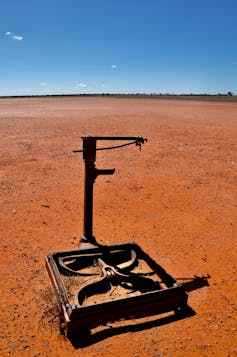
After America’s McMahon Act of 1946 made it illegal for the US to work with other countries on atomic weaponry, a secret British Cabinet committee made the decision to conduct tests of a British bomb – but not on its own territory.
Britain explicitly abrogated all responsibility for those who lived near the Emu Fields site. Britain maintained through to the royal commission – and in years beyond – that it was not responsible for Aboriginal welfare in the face of atomic weapons tests.
The extent of the huge British atomic weapons testing program here is still largely unknown by Australians. The Australian government forced the British government to contribute to the cost of remediation of Maralinga in the mid-1990s, although Monte Bello and Emu Field were largely left untouched.
The story of Emu Field has been forgotten for nearly 70 years. Bringing it back into our national consciousness reminds us the costs of harmful political decisions are often not borne by the decision-makers but by the most powerless.
The author would like to thank Maralinga Tjarutja Council for allowing access to the Maralinga lands, including Emu Field.
The Secret of Emu Field: Britain’s forgotten atomic tests in Australia, by Elizabeth Tynan, has just been published by NewSouth![]()
Liz Tynan, Associate professor and co-ordinator of professional development GRS, James Cook University
This article is republished from The Conversation under a Creative Commons license. Read the original article.
Curious Kids: what are NFTs – and why are they so expensive?

What is the purpose of making NFTs and what makes some of them so costly? – Tanvi, aged 16, Delhi, India
An NFT is a technology that proves who the owner of a digital object is. This digital object could be a song, a picture, a video, a tweet – or even a piece of digital land in an online game or virtual world. Recently, pieces of digital land in a forthcoming virtual world called Otherside sold for nearly US$6,000 (£4,791) each. What’s more, people were so keen to buy them that they also paid thousands of dollars in transaction fees.
NFT stands for non-fungible token. If something is non-fungible, this means that it cannot be replaced or exchanged for something of identical value. An example of something fungible is a current coin, such as a one pound coin, because this can be exchanged for another pound coin. It doesn’t matter which of the coins you have – you still have £1.
Something like a painting, though, is non-fungible. That particular painting only exists once. If you bought a painting, you could take that painting and hang it up in your bedroom. It would be yours – no one else would own that exact painting.

Curious Kids is a series by The Conversation that gives children the chance to have their questions about the world answered by experts. If you have a question you’d like an expert to answer, send it to curiouskids@theconversation.com and make sure you include the asker’s first name, age and town or city. We won’t be able to answer every question, but we’ll do our very best.
Owning something is more tricky for digital objects, because they can be copied. For instance, if you find a picture online that you like, you can right-click it, save it in your computer, and use it as a background if you want. This is where NFTs come in.
If you bought an NFT of a digital painting from the person who made it, a record of your purchase is kept in the blockchain. The blockchain is a giant database maintained by many people in their computers, and it is almost impossible to alter. Once the blockchain keeps a record of a transaction, it’s there forever. Everyone can see that you bought the NFT – and it proves that you are the only owner of the digital painting.
High Values
Some digital objects have been bought for large sums of money. For instance, in 2021, the first tweet ever sent was sold for almost US$3 million. But why would someone pay so much money for an NFT?
First of all, most NFTs actually have a low price. We just only get to hear about them whenever there has been a record sale. It is the same with physical art. We hear about it when someone paid millions for a painting by a famous artist like Picasso, and never about all the paintings sold for much less.

Like physical things, the value of digital art or other digital objects depends on how much someone is willing to pay for it – and that can come down to a lot of factors.
The person buying it might think it is very beautiful or important, and so is happy to pay a lot of money for it. The person who bought the first tweet, businessman Sina Estavi, wrote about it on Twitter, saying, “This is not just a tweet! I think years later people will realise the true value of this tweet, like the Mona Lisa painting”.
The Mona Lisa, a painting by the Renaissance artist Leonardo da Vinci, is one of the most famous pieces of art in the world. It hangs in the Louvre gallery in Paris, and millions of people go to see it each year.
As well as the fact that the first tweet is unique and historical, buying it is also a matter of status. Only one person in the world can say that they own the first tweet ever sent.
In A Bubble
Another reason NFTs might be so expensive is because of something economists call a bubble. We say that there is a bubble in a market when investors buy things with the main prospect of selling them shortly afterwards at a higher price. This pushes the price up.
Bubbles tend to occur whenever new technology appears. Plenty of investors come with their money after hearing about the astronomical price of a new technology, or about celebrities buying them. They buy them without fully understanding them, just attracted by the money they might be able to make by selling them on. Some people think this is what is happening with NFTs.
This is not to say that NFTs have no value: it is to say that some of the people buying them are doing so solely to obtain a profit, not because they are interested in owning an image.
Another reason NFTs might be so expensive is because of the potential they have to link with the metaverse. The metaverse is a virtual universe in which people would be represented by avatars and own digital space, like the digital land sold in the Otherside virtual world.

In the future, NFTs could be displayed in this digital space, in the same way we might hang a painting up in a physical house. It will probably also be possible to convert some of them into unique avatars that the owner can use to interact in that world. Since Otherside is owned by the same company that created a famous collection called the Bored Ape Yacht Club, maybe there will be a way in future for avatar versions of these apes and other NFTs to move around in the Otherwise metaverse.![]()
Francesc Rodriguez-Tous, Lecturer in Banking, City, University of London
This article is republished from The Conversation under a Creative Commons license. Read the original article.
Kim Kardashian’s Met Gala Marilyn moment shows how good she is at her job: being famous

In the course of her Met Gala attendances, Kim Kardashian has worn floral Givenchy (attending for the first time in 2013, pregnant with her first child), silver Balmain, gold Versace and latex “wet look” Thierry Mugler.
Last year, following the separation from her husband Ye (Kanye West) she wore head-to-toe black Balenciaga, an ensemble that rendered her a shadow, a silhouette, recognisable only by the familiar shape of her body.
This year, on the arm of new beau Pete Davidson, Kardashian has once again altered her body and reimagined her look. She lost 7kg in a matter of weeks and spent 14 hours bleaching her hair blonde: all to fit into a delicate, beaded Jean Louis dress, originally drawn by a young Bob Mackie and once worn by Marilyn Monroe.

This is not just any vintage gown. This is a piece of American history. Monroe wore the dress in 1962 for the 45th birthday celebrations for President John F. Kennedy, where she famously serenaded him with a sultry rendition of Happy Birthday, Mr President.
The ethics of wearing such a fragile piece of material history are one thing. The logistics required – beyond the crash diet and hair dye – are quite another.
The elaborate nature of this performance attests to Kardashian’s commitment to the event, her dedication to fashion and her desire to attract maximum attention.
Constructing An Image
Vogue reports Kardashian wore the dress for only a matter of minutes, just as she walked the red carpet.
She was ushered out of her hotel through barricades against the paparazzi, fitted into the gown by a conservationist from the Ripley’s Believe It or Not Museum (who purchased the dress at auction in 2016 for a record US$4.8 million) in a small fitting room outside the museum, escorted up the steps by Davidson and hovering security guards, and then changed into a replica of the dress (also owned by Ripley’s) for the remainder of the party.
The interview in Vogue illustrates her reverence for Monroe, especially in that gown and at that historic event.
Monroe and Kardashian share much in common. They have recognisable bodies; famous for their sex appeal. They are petite women, 168cm and 157cm respectively. Both have been married three times. Kardashian, at 41, is just five years older than Monroe when she died, only three months after serenading the President at Madison Square Garden.
They are also vastly different. Monroe, a silver screen icon; an actor of remarkable talent. Kardashian, a reality TV star and icon of the modern celebrity age; famous for being famous.
By wearing this dress, radically (unhealthily) transforming her body into an approximation of Monroe, Kardashian attempted to reiterate their likeness.
Just as she has morphed herself into a facsimile of Cher or Naomi Campbell, or transformed her style under the tutelage of her ex-husband, Ye: Kardashian is nothing if not a fashion chameleon.
Reshaping The Nature Of Celebrity
Kardashian is also irrefutably herself. She has constructed her own form of celebrity and has fought fiercely for its legitimacy. Her inclusion on the Met Gala guest list in the first place – initially only as Kanye’s plus-one – was hard won.
So, what does it mean for this peerless contemporary celebrity to appropriate the dress, the aura, the mythology of an historical Hollywood icon?
Some commentary has suggested Kardashian would be lucky to have half the charisma, the magic of Monroe. This may be correct, yet it also somewhat misses the point.
Regardless of your thoughts about Kardashian, it is undeniable she is an astute (albeit frequently tone deaf) business woman, who has made a living from her body and her ability to modify it.
For better or worse, she has altered the nature of celebrity and, along with her sisters, has reshaped American beauty ideals.
Of course, she is also a billionaire: one of the only women in the world with the financial means and cultural capital to acquire the rights to wear such a gown – extracted from its usual home in a temperature-controlled vault.
Other commentary decried the extravagance of the Met Gala itself. These familiar dissenting voices were perhaps louder than ever this year, as the event celebrated the so-called Gilded Age in American history (1870-1900) at a moment when political, economic, environmental and health crises the world over continue to proliferate.
However, that is the joy of fashion. It reminds us that, regardless of our differences, we are all bodies wrapped in garments. So, as women’s rights are brutally peeled back across the United States, I couldn’t help but revel in the extreme extravagance for a moment and savour this elaborate celebration of an iconic American woman. ![]()
Harriette Richards, Research Associate, Cultural Studies, The University of Melbourne
This article is republished from The Conversation under a Creative Commons license. Read the original article.
We’ve used a new technique to discover the brightest radio pulsar outside our own galaxy
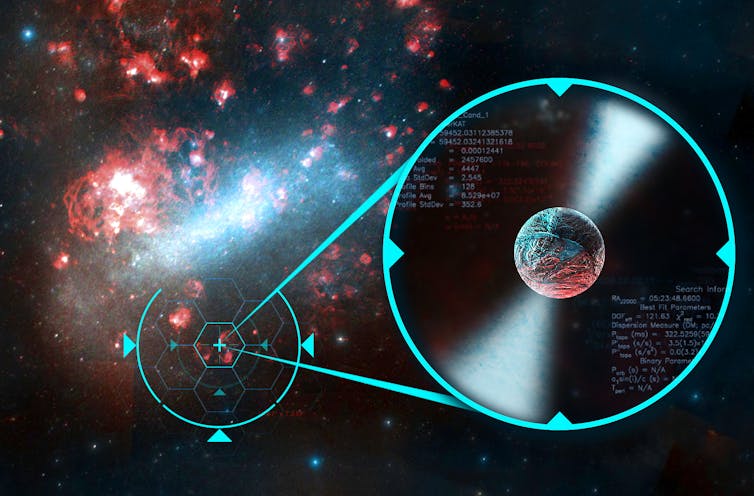
When a star explodes and dies in a supernova, it takes on a new life of sorts.
Pulsars are the extremely rapidly rotating objects left over after massive stars have exhausted their fuel supply. They are extremely dense, with a mass similar to the Sun crammed into a region the size of Sydney.
Pulsars emit beams of radio waves from their poles. As those beams sweep across Earth, we can detect rapid pulses as often as hundreds of times per second. With this knowledge, scientists are always on the lookout for new pulsars within and outside our Milky Way galaxy.
In research published today in the Astrophysical Journal, we detail our findings on the most luminous radio pulsar ever discovered outside the Milky Way.
This pulsar, named PSR J0523-7125, is located in the Large Magellanic Cloud – one of our closest neighbouring galaxies – and is more than ten times brighter than all other radio pulsars outside the Milky Way. It may be even brighter than those within it.
Why Wasn’t PSR J0523-7125 Discovered Before?
There are more than 3,300 radio pulsars known. Of these, 99% reside within our galaxy. Many were discovered with CSIRO’s famous Parkes radio telescope, Murriyang, in New South Wales.
About 30 radio pulsars have been found outside our galaxy, in the Magellanic Clouds. So far we don’t know of any in more distant galaxies.
Astronomers search for pulsars by looking for their distinctive repeating signals in radio telescope data. This is a computationally intensive task. It works most of the time, but this method can sometimes fail if the pulsar is unusual: such as very fast, very slow, or (in this case) if the pulse is very wide.
A very wide pulse reduces the signature “flickering” astronomers look for, and can make the pulsar harder to find. We now know PSR J0523-7125 has an extremely wide beam, and thus escaped detection.
The Large Magellanic Cloud has been explored by the Parkes telescope several times over the past 50 years, and yet this pulsar had never been spotted. So how were we able to find it?
An Unusual Object Emerges In ASKAP Data
Pulsar beams can be highly circularly polarised, which means the electric field of light waves rotate in a circular motion as the waves travel through space.
Such circularly polarised signals are very rare, and usually only emitted from objects with very strong magnetic fields, such as pulsars or dwarf stars.
We wanted to pinpoint unusual pulsars that are hard to identify with traditional methods, so we set out to find them by specifically detecting circularly polarised signals.
Our eyes can’t distinguish between polarised and unpolarised light. But the ASKAP radio telescope, owned and operated by Australia’s national science agency CSIRO, has the equivalent of polarised sunglasses that can recognise circularly polarised events.
When looking at data from our ASKAP Variables and Slow Transients (VAST) survey, an undergraduate student noticed a circular polarised object near the centre of the Large Magellanic Cloud. Moreover, this object changed brightness over the course of several months: another very unusual property that made it unique.
This was unexpected and exciting, since there was no known pulsar or dwarf star at this position. We figured the object must be something new. We observed it with many different telescopes, at different wavelengths, to try and solve the mystery.
Apart from the Parkes (Murriyang) telescope, we used the space-based Neil Gehrels Swift Observatory (to observe it at X-ray wavelengths) and the Gemini telescope in Chile (to observe it at infrared wavelengths). Yet we detected nothing.
The object couldn’t be a star, as stars would be visible in optical and infrared light. It was unlikely to be a normal pulsar, as the pulses would have been detected by Parkes. Even the Gemini telescope didn’t provide an answer.
Ultimately we turned to the new, highly sensitive MeerKAT radio telescope in South Africa, owned and operated by the South African Radio Astronomy Observatory. Observations with MeerKAT revealed the source is indeed a new pulsar, PSR J0523-7125, spinning at a rate of about three rotations per second.
Below you can see the MeerKAT image of the pulsar with polarised “sunglasses” on (left) and off (right). If you move the slider, you’ll notice PSR J0523-7125 is the only bright object when the glasses are on.
Our analysis also confirmed its location within the Large Magellanic Cloud, about 160,000 light years away. We were surprised to find PSR J0523-7125 is more than ten times brighter than all other pulsars in that galaxy, and possibly the brightest pulsar ever found.
What New Telescopes Can Do
The discovery of PSR J0523-7125 demonstrates our ability to find “missing” pulsars using this new technique.
By combining this method with ASKAP’s and MeerKAT’s capabilities, we should be able to discover other types of extreme pulsars – and maybe even other unknown objects that are hard to explain.
Extreme pulsars are one of the missing pieces in the vast picture of the pulsar population. We’ll need to find more of them before we can truly understand pulsars within the framework of modern physics.
This discovery is just the beginning. ASKAP has now finished its pilot surveys and is expected to launch into full operational capacity later this year. This will pave the way for even more discoveries, when the global SKA (square kilometre array) telescope network starts observing in the not too distant future.
Akncowledgement: We acknowledge the Wajarri Yamatji as the traditional owners of the Murchison Radio-astronomy Observatory site where ASKAP is located, and the Wiradjuri people as the traditional owners of the Parkes Observatory.![]()
Yuanming Wang, PhD student, University of Sydney; David Kaplan, Professor of Physics, University of Wisconsin-Milwaukee, and Tara Murphy, Professor, University of Sydney
This article is republished from The Conversation under a Creative Commons license. Read the original article.
Australia should have a universal basic income for artists. Here’s what that could look like

While artists struggle to get noticed in the Australian political arena, particularly in the lead up to an election, other nations take their artists more seriously – even seeing them as critical to a successful and vibrant community.
When I talked to artists during the pandemic, it became evident they needed four conditions in place to be able to practice successfully as artists: a regular income, a place to do their work, capacity to do their work and validation of their work.
Without these conditions, productivity and mental health suffer.
The Republic of Ireland has recently instituted a new scheme to provide three-year support for up to 2,000 individual artists, piloting a form of universal basic income.
Artists will be expected to meet at least two out of three qualifying terms to apply for the scheme: have earned an income from the arts, have an existing body of work and/or be members of a recognised arts body, such as a trade union.
Successful artists and creative workers will be given a weekly income of €325 (A$479), and be able to earn additional money without this basic income being affected.
The Irish Minister for the Arts Catherine Martin hopes this first model can be broadened to include all practising Irish artists in the future.
She sees it as a simple and economic method to protect artists from precarious existences while benefiting the community as whole.
International Support For Artists
The Irish scheme for a universal basic income for artists isn’t the only model.
In the US, several states and private foundations have developed schemes to provide direct support to artists as an outcome of the pandemic.
In May 2021, the City of New York paid 3,000 artists no-strings-attached grants of US$5,000 (A$7,080). Additional grants were provided for public art works, exhibitions, workshops and showcase events.
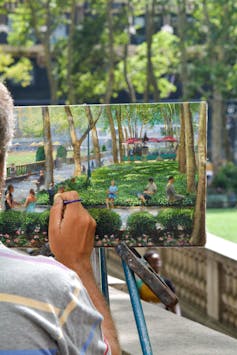
In June 2021, the philanthropic Mellon Foundation announced a new program called Creatives Rebuild New York to provide 2,400 New York artists with a guaranteed monthly income of US$1,000 (A$1,415) for 18 months.
The program employed another 300 artists and creative workers on an annual salary of US$65,000 (A$92,000) to work in collaboration with community organisations and local authorities for two years. They will also receive other benefits and dedicated time to work on their artistic practice. Both these programs were designed by artists.
The city of San Francisco provided US$1,000 per month for 130 local artists for six months from mid-2021. Thanks to philanthropic support from Twitter founder Jack Dorsey, the scheme expanded to support 180 artists for 18 months.
The city of St Paul in Minnesota, with a population of just over 300,000, has initiated a program to give 25 artists a guaranteed unrestricted income of US$500 (A$708) per month for a period of 18 months.
Closer to home, the House of the Arts (HOTA) on the Gold Coast recognised the economic dilemma of local artists during the pandemic.
In 2021, they employed four artists to work three days a week for six months on their own creative projects at HOTA. They were given a regular salary, a studio to work in, and were invited to participate in the organisational planning of HOTA.
Could We Recreate This In Australia?
In Australia, some artists were eligible for schemes like JobKeeper and JobSeeker during 2020 and into early 2021, which could provide a model for how to support artists with a basic income going forward.
But in 2020-21 the Australia Council only funded 584 individual artists, a drop of nearly 50% since 2012-13.
Ireland’s three-year pilot program for artists will cost the government around €25 million (A$37 million). With a population about a fifth of Australia’s, a similar scheme applied here using the same ratio could provide funding to 10,000 individual artists at a cost of A$185 million over three years.
This would be a drop in the ocean for the Australian federal budget, but it could be a game changer for the community, the arts and artists.
A universal basic income provides a regular amount of money that allows the individual to live above the breadline. It can transform an individual’s life while having a positive impact on the whole of society.
Schemes that provide an ongoing income to individual artists – such as royalty schemes, lending rights and long-term leasing of artwork by government bodies and corporations – are all important, but the amounts received from them for the majority of artists are usually quite limited.

Just imagine if every Australian arts centre, library, school, university, hospital, local council and government department employed an artist in residence. The artist gets an income while the institution gets an extraordinary input of ideas and imagination that can transform their environment.
We need to stop patronising our artists by giving them tiny grants and making them go through endless hoops and form filling to gratefully receive them.
Artists are essential to our community. It is time to demonstrate – like Ireland and New York – the success of our artists reflects our healthy and vibrant nation, and pay them accordingly.![]()
Jo Caust, Associate Professor and Principal Fellow (Hon), School of Culture and Communication, The University of Melbourne
This article is republished from The Conversation under a Creative Commons license. Read the original article.
First Nations poet Evelyn Araluen wins the 2022 Stella Prize with a ‘wild ride’ skewering colonial mythologies

First Nations poet Evelyn Araluen has won the 10th annual Stella Prize with a debut poetry collection that confronts the cultural evasions of an unreconciled Australia with a tender fury.
Australian poetics is the target of Araluen’s dark satire in Dropbear. Her poetry deftly dismantles the literary mythos that conjures the Australian landscape as ghostly, haunted and empty, or else reproduces it as a cultural commodity in the guise of “Australiana” kitsch.
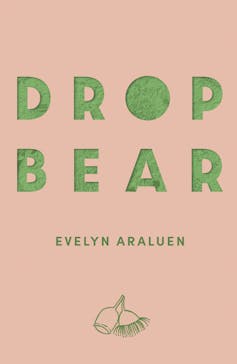
In either case, this mythos does violence by refusing to acknowledge the living presence of Aboriginal people, of Aboriginal lands and their custodians, or else by conjuring up hollow tokens of Aboriginal presence in a variety of gaudy, empty or shell-like forms. Both are acts of silencing.
A descendant of the Bundjalung nation, born and raised on Dharug Country, Araluen is co-editor of Overland literary journal. Her criticism and poetry has won the Nakata Brophy Prize for Young Indigenous Writers and the Judith Wright Poetry Prize, among other awards.
The chair of the Stella judging panel, award winning Bundjalung author Melissa Lucashenko, described Dropbear as a “wild ride” that is both “comical and dangerous” – just like the legendary predatory marsupial after which the collection is named. (This creature, of urban myth, is said to kill unwary prey by dropping on their heads out of bush canopies.)
The judges described the winning book as:
a breathtaking collection of poetry and short prose which arrests key icons of mainstream Australian culture and turns them inside out, with malice aforethought. Araluen’s brilliance sizzles when she goes on the attack against the kitsch and the cuddly: against Australia’s fantasy of its own racial and environmental innocence.
Taking Aim At Australiana
Dropbear is both deeply funny and deadly serious.
Araluen indicts the “ghost gums” that proliferate across literary landscapes in regions far beyond their natural habitat. She takes aim at the iconography of Australian childhood, including May Gibbs’ Snugglepot and Cuddlepie, Dorothy Wall’s Blinky Bill, and Ethel Pedley’s Dot and the Kangaroo.
Each is artfully unravelled to expose the racial mythologies that pervade and are perpetuated by these popular childhood texts.
It is easy to skate along the seductive surface of Araluen’s poems, swept along by the rhythms of language and dancing images. Take “Dropbear Poetics”, for example, which condemns the ironic consumption of Australiana kitsch by pseudo-revolutionaries with their “fucking postmod blinky bill” and “gollywog ashtray snugglepot”.
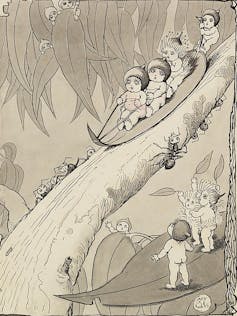
Or “Bad Taxidermy”, a tour de force of cuddly kitsch, in which the reader encounters images of “Kylie Minogue in hotpants and a hot pink koala knit” that generates a “bidding war on eBay”, alongside an “Instagram ad for Australian Native Birthflower charms”, a Tasmanian Devil with a “faintly otter-like lift of his small dark paws on the acrylic shelf”, and a “lungfish nailed to a birch board”.
None of this is innocent. For non-Aboriginal readers, these cultural commodities may present themselves as an ironic coming to terms with Australian identity. They may appear to offer a paradoxical way of being at home in an alien landscape, a supposed resolution of guilt, cringe and crisis. But for Aboriginal people they are part of an ongoing invasion – a reinvented colonial mythos that appropriates and silences the history, culture and languages of First Nations people.
In Araluen’s poems, these cultural commodities are not being ironically replayed but clinically dissected, and shredded. “Bad Taxidermy” finds Araluen shouting at “the man laughing in the anthropology museum” and “Angling my reflection out of photos of cabinets with drawings of my ancestors rubbing sticks”.
But there is also love, warmth and care in this collection, in its evocations of family and in tender poems for the things, places, experiences and peoples that have been “erased, exploited or violated in the short but haunted history of Australian literature”.
Dropbear reaches down into everyday lived experience, in essays such as “To the Parents” and the poem “Moving Day”, a reverie on the meaning of moving home when home has been stolen or destroyed.
Dropbear offers a poetics of resistance. It is, as Lucashenko points out, “a playful beast, a prank, a riddle, a challenge, and a game”. But like the mythical creature for which the collection is named, it is not gentle and can be “dangerous”. It offers no easy or cosy reconciliation with history.
Read this collection, and it may change the way you see. Or else, as Lucashenko says, “If you live here and don’t acquire the necessary local knowledge, the dropbear might definitely getcha!”![]()
Camilla Nelson, Associate Professor in Media, University of Notre Dame Australia
This article is republished from The Conversation under a Creative Commons license. Read the original article.
Judith Wright, an activist poet who was ahead of her time
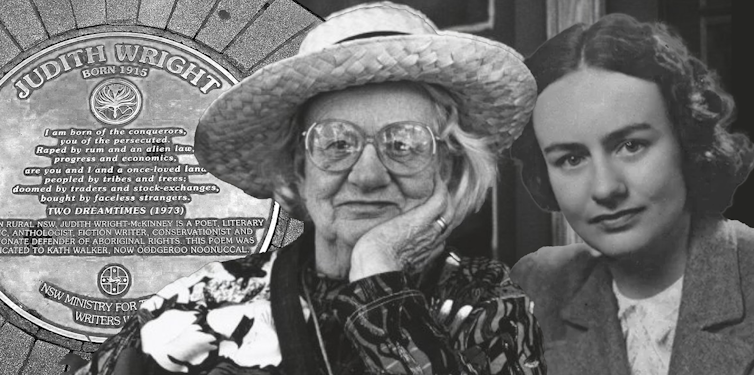
Judith Wright is a giant of Australian letters. Though most famous as a poet, she was also a very fine writer in prose, and it is this dimension of her writing that is brought to life in a new selection of her non-fiction.
Review: Judith Wright: Selected Writings, edited by Georgina Arnott (La Trobe University Press).
The works have been selected and introduced by Georgina Arnott, author of The Unknown Judith Wright (2016). Arnott draws on essays published by Wright during her lifetime in the collections Because I Was Invited (1975), Going on Talking (1991) and Born of the Conquerors (1991).

She provides excerpts from key monographs written by Wright – namely, her sensitive study of Henry Lawson (1967), the pioneer history Generations of Men (1959) and the revision of this history The Cry for the Dead (1981), the great activist accounts The Coral Battleground (1977) and We Call for a Treaty (1985), and Wright’s autobiography Half a Lifetime (1999).
Arnott has also gone beyond these sources to provide a fuller picture of Wright’s prose writing than had previously existed.
A Visionary Charge
Judith Wright shot to prominence in the post-war years as the author of some of Australia’s most iconic poems. Her first collection The Moving Image (1946), published when she was 31 years old, remains one of the landmark Australian literary works of the last century.
Across its 20 devastating poems, each line still has the capacity to grab the reader by the scruff of the neck. Poems like “Bullocky”, “Dust”, “Bora Ring” and “Nigger’s Leap, New England”, despite being endlessly anthologised and drummed into generations of school children, still carry a visionary charge.
For the next 20 years, Wright’s poetry emerged at the rate of roughly a volume a year and showed considerable formal and thematic range – poems about motherhood, about birds, about the nature of time and the cosmos. But during the 1960s, her career changed course. It swung decisively in the direction of activism, particularly toward conservation causes.
By the end of her life, cultural historian Tim Bonyhady concludes that, as great a poet as Wright was, she was a yet greater activist and her fullest legacy lies in her contribution to the causes she pursued with a unique eloquence. Reading her prose works, one feels the force of her intellect, but also the presence of something more, a profound capacity to understand the world.
The Double Consciousness Of The Colonial Poet
The volume’s earliest writings, from the late 1940s, are works of literary criticism. These culminated in Preoccupations in Australian Poetry (1965). The thesis advanced in that book was that Australian poetry (the poetry of the coloniser) is beset by a double consciousness, born of foundational exile.
Arnott’s collection now lets us see the seed of this thought in a contribution called “Perspective” that Wright made to the Jindyworobak Review in 1948:
So, a kind of split in the writer’s consciousness is often manifest; he cannot solve his immediate problem, he cannot keep attention concentrated on the foreground, while his background keeps intruding.
This image of an intrusive “background” that will not let current ambition have its way, exactly presages the subversion of Wright’s literary career by the burning issues of Australia’s situation.
Most particularly, in the “background” of Australian colonisation, beneath the nationalist and pioneering myths, is the wanton and seemingly inexorable destruction of the natural world and the violent dispossession of Indigenous people, ruthlessly robbed of their lands, languages, resources, cultures and, in many instances, their very right to exist.
What marks out Wright’s greatness is her surrender to the ethical demands of this “background”.
Of course, for those on the other side of Australian colonisation, this was no background, but the brutal stripping away of their entire way of life. It is this calling, what Wright would later term the “cry of the dead”, that provides a kind of narrative through his collection
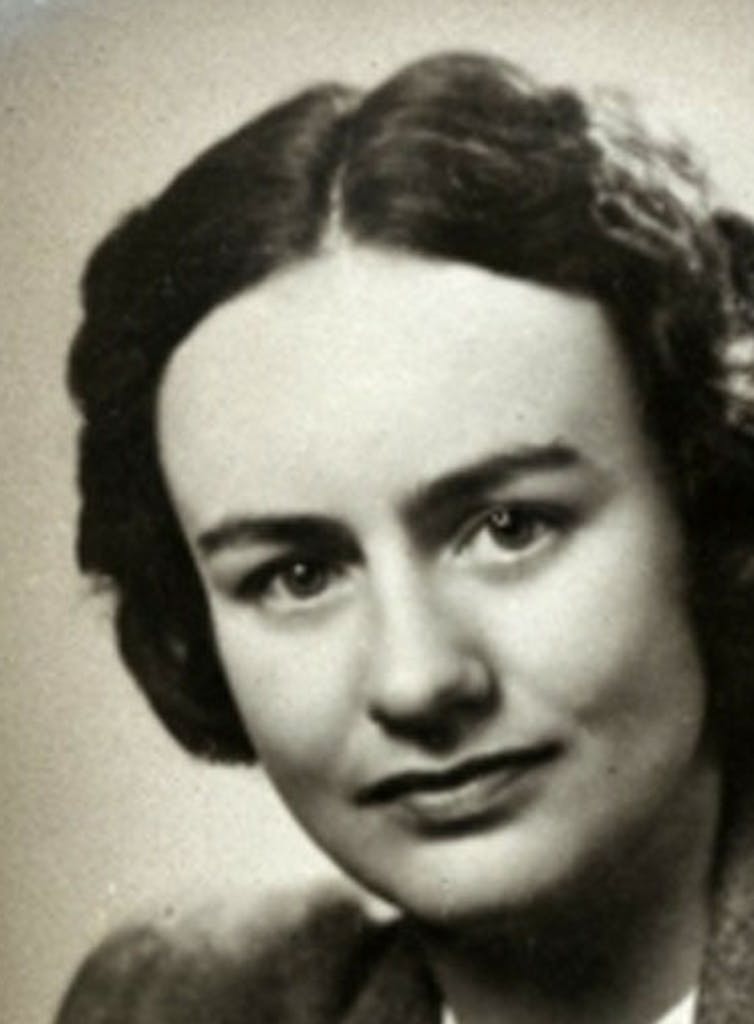
A Master Of Devastating Understatement
It is important to emphasise the sheer pleasure of reading Wright’s work. She is a gifted prose writer. Never showy, she is instead a master of devastating understatement. She writes aphoristically, but often you do not notice the aphorisms, because they spill out gently and without the showman’s characteristic pause for effect.
Her irritation almost never comes to the surface, but on occasion she takes the briefest moment to set certain presumptions back in their place. “To sentimentalise women is to despise them,” she writes in “Women Writers in Society”.
In a later essay, “Transcending Womanliness”, she begins by quoting the words of Vincent Buckley from the 1950s:
When [Wright] is content to be a woman, enduring the profound incident of woman’s life, she is able, paradoxically enough, to transcend her womanliness and be a very fine poet. When she attempts to be not a woman, but a bard, commentator or prophet, she becomes a bit of a shrew – which is the worst and most unwomanly of things that a woman may become.
That Buckley, a not insensitive poet, could blithely call someone of Wright’s stature a shrew is a reminder of what it was like for women who dared to write. The deep dignity of Wright makes this easy to forget, but she did not have the luxury of setting this matter aside entirely.
One sees traces of the stultifying sense of “culture” in the immediate post-war years in Wright’s earliest literary criticism. She was not averse to a certain Olympian coolness that was the keynote of mid 20th century Anglo-American literary criticism. Her review of Verse in Australia (1960) affects bemusement at the new speaking registers appearing in contemporary poetry. She finds in the work of younger poets, a poetry that “was conducted on an oddly conversational level”.
What is significant, though, is not this cultural moment, but what happens to Wright in the years just after this. Many of her contemporaries, including Buckley, doubled down on Leavisite prescriptions grounded in a Great Tradition, but Wright opened herself to the world. As a publisher’s reader at Jacaranda Press, she promoted the manuscript of a book of poems that would become We Are Going (1964) by Kath Walker (later Oodgeroo Noonuccal).
Oodgeroo’s volume was the first published book of poetry by an Indigenous Australian. It was dismissed by literary critics, who had their standards, but remained deaf to the call of history.

Wright, however, immediately grasped the significance of Oodgeroo’s work, and if one looks at Wright’s life – which is what this collection affords – one sees moments like this time and again: moments that show Wright to be often decades ahead of her fellows.
Her essay, “The Koori Voice: A New Literature” (1973), is startlingly early in its appreciation of Indigenous writing in Australia. It shows how laggard others were to see what was staring them in the face. While other critics could only grimace at what they deemed a childlike earnestness in the poems of Oodgeroo and Jack Davis, Wright was able to calmly see the radical significance of the new Aboriginal writing.
Environmental Activism
It is a similar story with Wright’s apprehension of the environment.
Certainly, there were environmental voices prior to Wright. Elyne Mitchell’s Soil and Civilisation (1946), an impassioned plea for improved soil conservation, appeared in the same year as Wright’s The Moving Image. Yet Wright was one of the first to mobilise the newly globalised sense of the environment that reached a point of inflexion with the publication of Rachel Carson’s Silent Spring (1962).
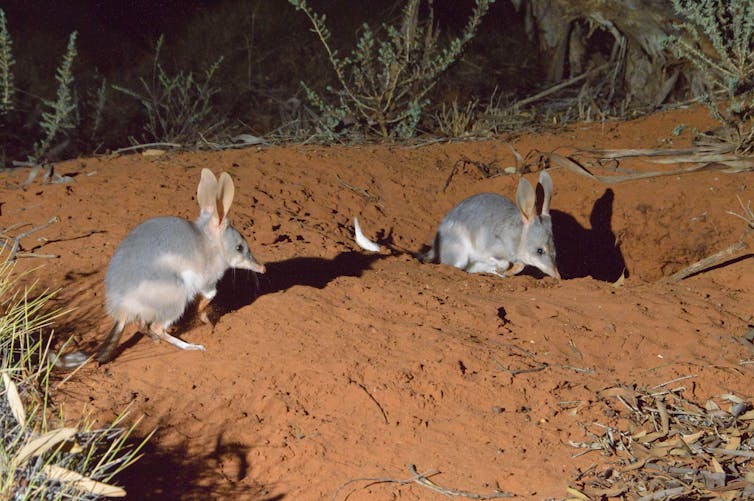
In 1962, Wright was one of the founders of The Wildlife Preservation Society of Queensland. In 1964, the same year that Oodgeroo’s We Are Going was published, Wright became its president, a role she would serve until 1976. It was this role that took her to the front line of some of Australia’s first major conservation campaigns.
With this collection of Wright’s work, one is able to watch her thought moving with persistent acuity through moments of epiphany and revolution. The steadiness of her voice can sometimes disguise the radical shifts in her thinking as she reconceives the basic coordinates of literature, environment, settler history and Indigenous reconciliation.
As well as being an activist, Wright was a crucial witness to the actions she undertook. Some years ago, I had occasion to read her book We Call for a Treaty (1985), which traced the work of the Aboriginal Treaty Committee, on which she served from 1979 to 1984. Expecting a fairly dry account of the committee’s work, I was struck by how crisply the tale was told, how deftly it set the scene, how lucidly the problems were rendered. In fact, I found the book utterly riveting.

Among her other virtues, Wright’s expository prowess deserves more than a passing mention. On every page of this new collection, and across a multitude of topics, Wright’s writing voice never falters – the clarifying poise of her phrasing, her unerring eye for the telling detail and the timeliness of her counterpoints.
For me, though, and this may well be a matter of personal taste, I was most won over by Wright’s environmental writing. In particular, the triumvirate of essays that follow in quick succession in this collection, “Conservation as a Concept” (1968), “Our Vanishing Chances” (1972) and “Conservation: Choice or Compulsion” (1975) left me breathless with their scope and clarity of vision.
What these essays carry is not only Wright’s trademark erudition, and her acute sense of the fatal interplay of historical forces, but the grain of life lived in the service of environmental struggle – the day-to-day praxis of fighting to save things.
A Path Of Repair
And by things, we must say without hyperbole, the world. For what is Fraser Island, what is the Great Barrier Reef, if not the world in its substance?
Wright’s vision seemed to directly repudiate the instrumental logic that relentlessly removed life from the world under the euphemism of selective appropriation. Mining the sand from Fraser Island is not just the selective removal of a resource: it destroys the world.
Wright begins “Conservation: Choice or Compulsion” with these remarks:
Until very recently, most Australians felt that they were in possession of a virtually unlimited country whose only problems were those of “development”, “progress” and population. This unexamined attitude has coloured the whole of Australian settlement, and still rules the thinking of many people. The older generation, brought up in times when it seemed true, still thinks and acts in such terms; and our whole legislative, economic system is based on it. It might be called the Australian Myth, and an accepted social mythology is very hard to change even when facts emerge to contradict it.

This essay goes on to provide an unblinking account of Australian environmental failure, and how ecological destruction is wired into the basic circuitry of the nation. She is under no illusion about the difficulty of change:
The sweeping changes needed to cope with such a radically new position [i.e. “that we are coming hard up against certain limits”] are difficult enough to make any planning and implementation of them both unpopular and highly delicate from a political point of view.
Though I knew many of the more famous essays in this collection, there were many I had never seen. One of the essays that had slipped beneath my notice was “Australia – Landscape Ancient and Modern”, which was published in the collection Australia Fair? (1984).
In this essay, Wright takes the reader around the continent of Australia, effortlessly offering up its geological and environmental history, floating like a kind of spirit through the diverse biomes of this unique land.
Under her pen, Australia, not as nationalist unity, but as an assemblage of lifeworlds, starts to pulse and come alive. At such moments, this collection brings this great writer back to us.
The collection ends with more intimate writings, including examples from Wright’s letters. A central part of her genius is that she never forgets where she comes from. Her most important thinking can be traced to her upbringing within her family’s pastoral empire.
Raised in the bosom of New England squattocracy, Wright was able to see firmly what everyone else was trying desperately and constantly to forget. Prising herself from the self-exculpatory myths of a pioneering family set her on a path to see the world for what it is.
The recognition that she was “born of the conquerors” was something Wright met with decisive courage. Her instinct was never to wring her hands or offer empty platitudes, but to set out a path of repair.![]()
Tony Hughes-d'Aeth, Professor, The University of Western Australia
This article is republished from The Conversation under a Creative Commons license. Read the original article.
Peak Towers Certifier In China At Time Of Final Inspection
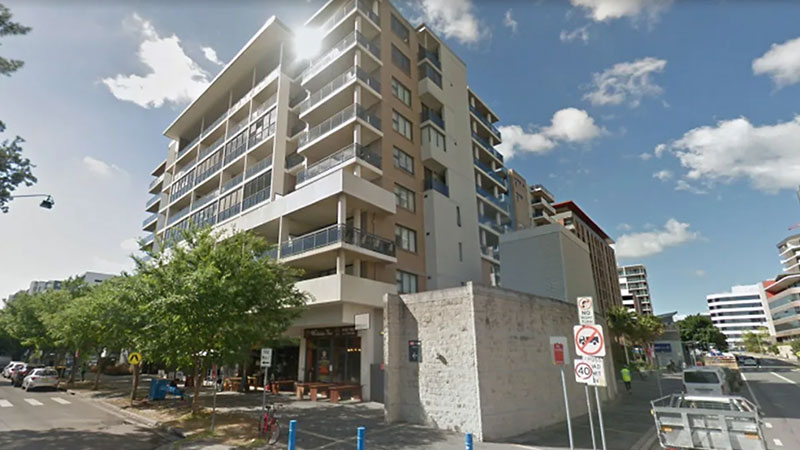 A NSW Fair Trading investigation has revealed that notorious building certifier Maurice Freixas contravened state planning laws when he issued dodgy construction and occupation certificates (OC) for the Peak Towers apartments.
A NSW Fair Trading investigation has revealed that notorious building certifier Maurice Freixas contravened state planning laws when he issued dodgy construction and occupation certificates (OC) for the Peak Towers apartments.Electric Vehicles Break The Barrier In NSW
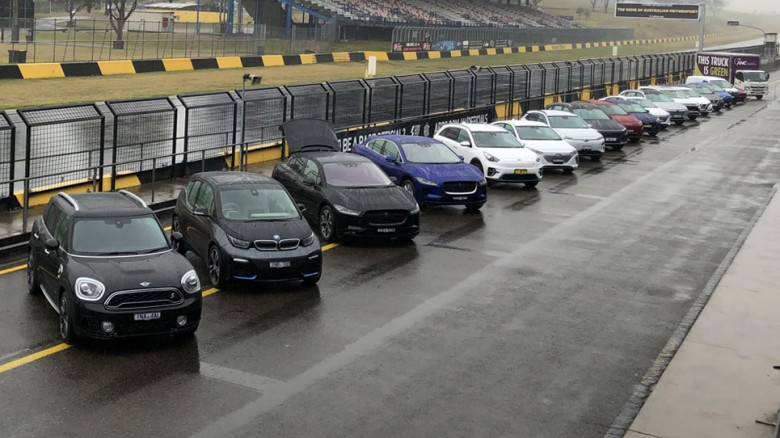 Electric vehicles will now be able to make the drive from Sydney all the way to Broken Hill, after the final piece of the network of fast chargers along the Barrier Highway was switched on.
Electric vehicles will now be able to make the drive from Sydney all the way to Broken Hill, after the final piece of the network of fast chargers along the Barrier Highway was switched on.Hydroponic Plants To Detox PFAS-Contaminated Water
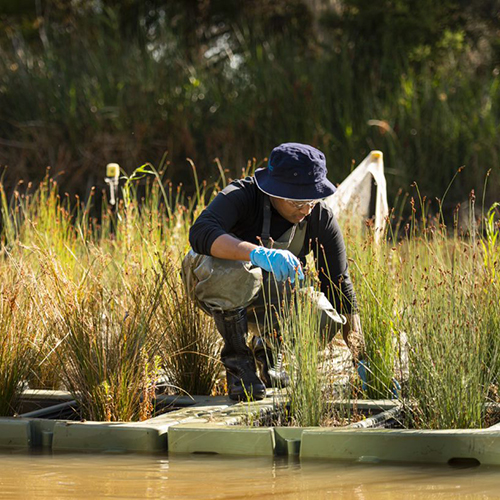 New research from the University of South Australia is helping to remediate the 'indestructible' PFASs as scientists show that Australian native plants can significantly remediate PFAS pollutants through floating wetlands to create healthier environments for all.
New research from the University of South Australia is helping to remediate the 'indestructible' PFASs as scientists show that Australian native plants can significantly remediate PFAS pollutants through floating wetlands to create healthier environments for all.Could Exercise Counteract Cardiotoxic Chemotherapy For Women With Breast Cancer?
 When you’re a breast cancer survivor, the last thing you need is another health scare. So, it’s concerning to know that up to 48 per cent of breast cancer patients will go on to fight heart disease as a direct result of chemotherapy.
When you’re a breast cancer survivor, the last thing you need is another health scare. So, it’s concerning to know that up to 48 per cent of breast cancer patients will go on to fight heart disease as a direct result of chemotherapy.Lost Value Of Landfilled Plastic In US
B12 Deficiency Harms Young Children's Development
- Since 2010, the Department of Nutrition, Exercise and Sports (NEXS) at the University of Copenhagen has worked with the WHO and UNICEF, among others, with a focus on improving the emergency food relief used to combat childhood malnutrition.
- According to UNICEF, approximately 200 million children under the age of five suffer from malnutrition worldwide. Malnutrition contributes to the death of three million children every year.
- Acute malnutrition in children is characterized by children who are too thin in proportion to their height. Globally, it is estimated that approximately 50 million children are acutely malnourished, with two thirds of these suffering from moderate malnutrition and the remaining third suffering from severely acute malnutrition.
- Today, only about 20% of severely malnourished children receive emergency food relief.
- 1,609 children from Burkina Faso with moderate to acute malnutrition participated in the study. The researchers were able to measure cobalamin serum levels in 1,192 of these children.
- The children received three different types of food relief rations, all of which met with WHO standards.
- The study is a reanalysis of data collected in Burkina Faso under the research project TREATFOOD.
Affirmative Action Bans Had 'Devastating Impact' On Diversity In Medical Schools
Beetle Iridescence A Deceptive Form Of Warning Colouration
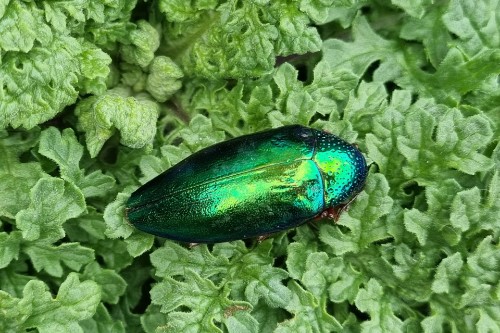
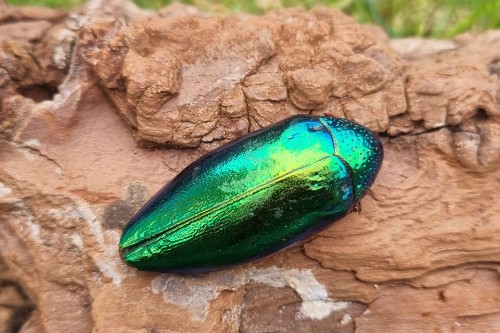
$10 Million Investment Fuels Promising Treatments For Inflammatory Lung Disease
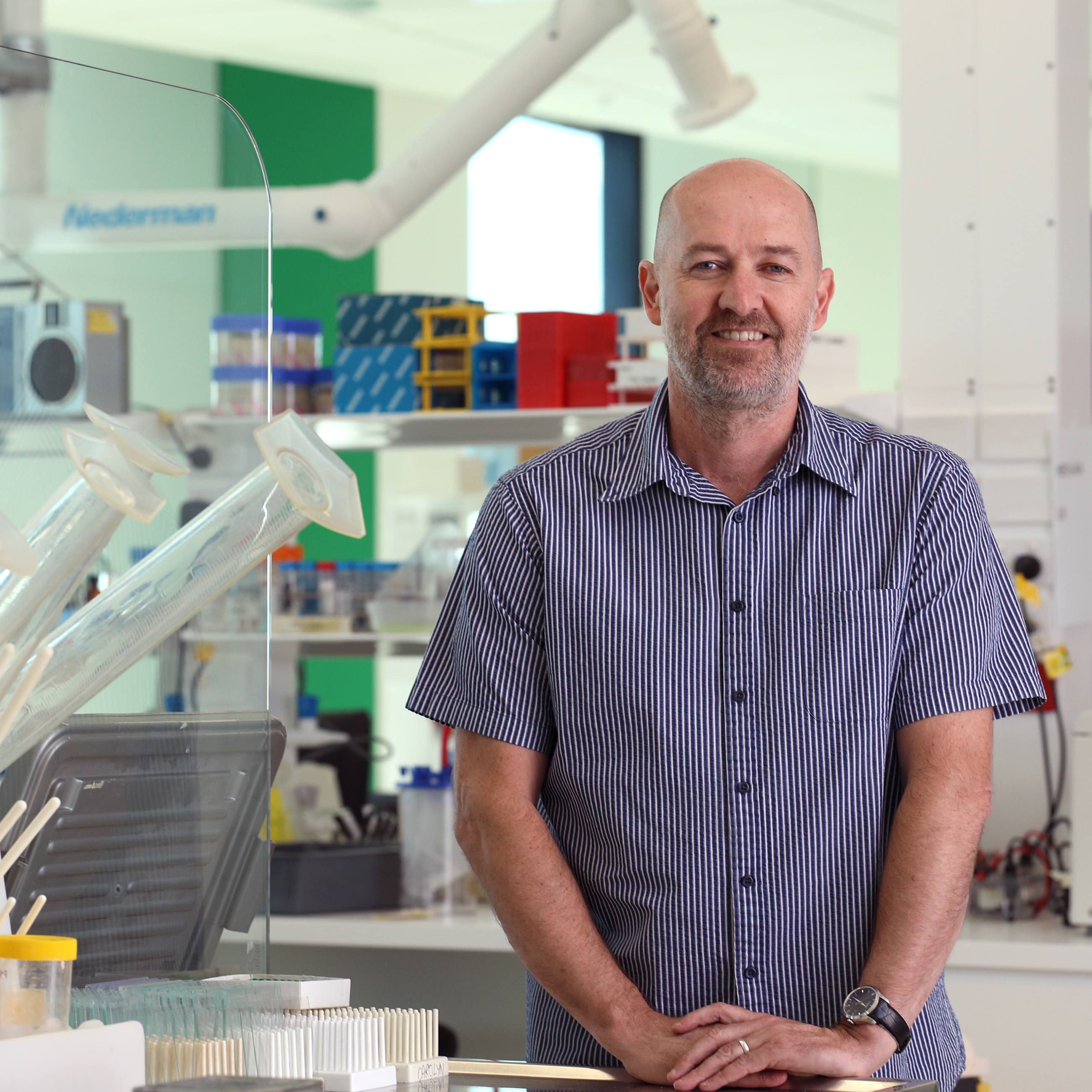
Disclaimer: These articles are not intended to provide medical advice, diagnosis or treatment. Views expressed here do not necessarily reflect those of Pittwater Online News or its staff.